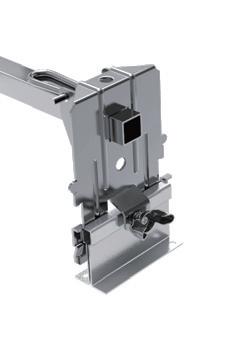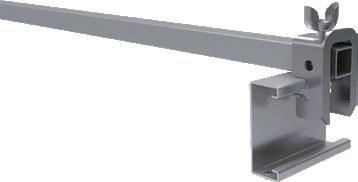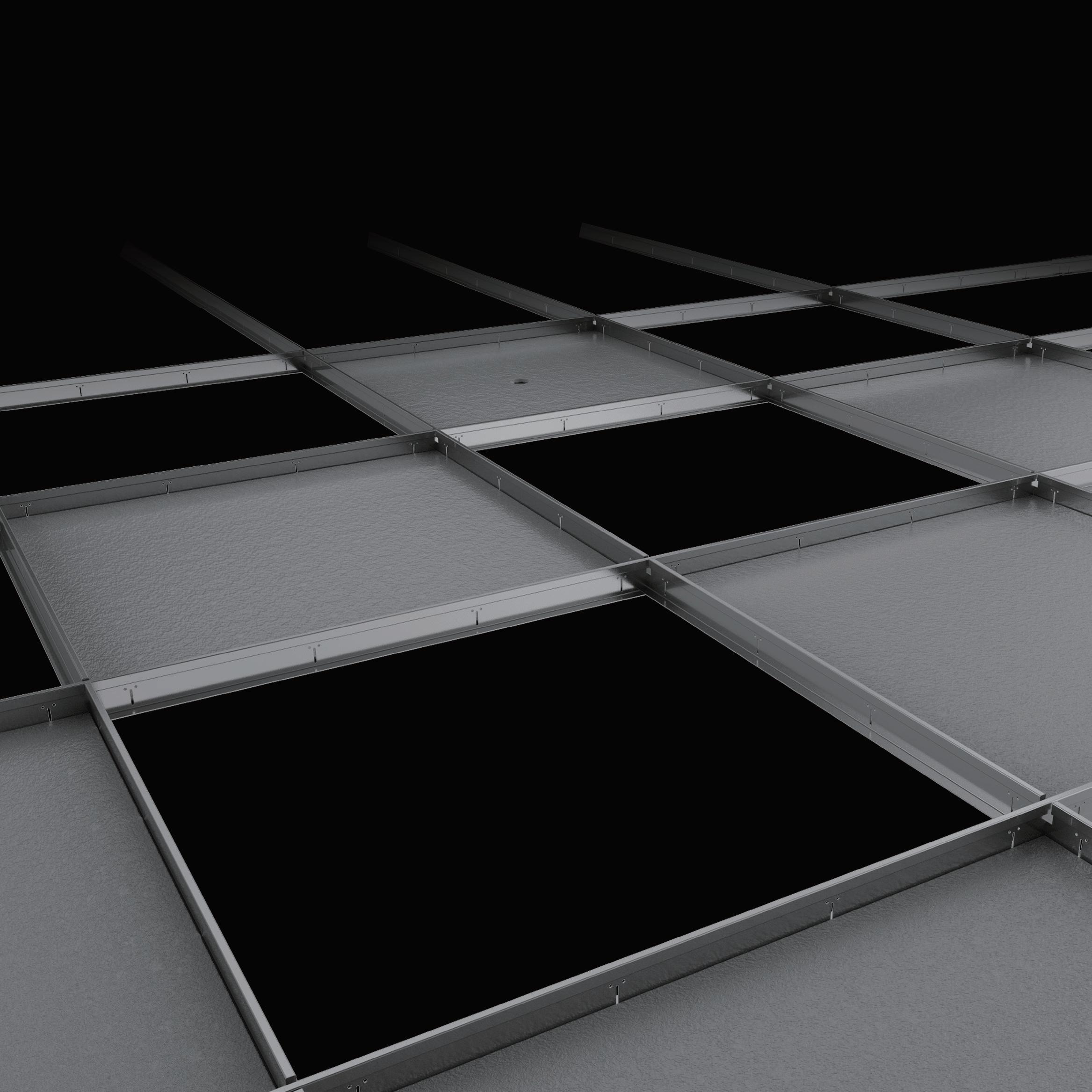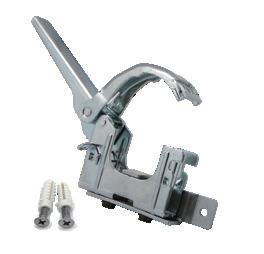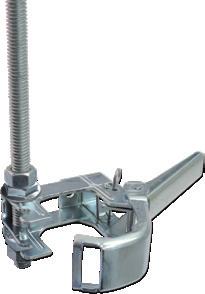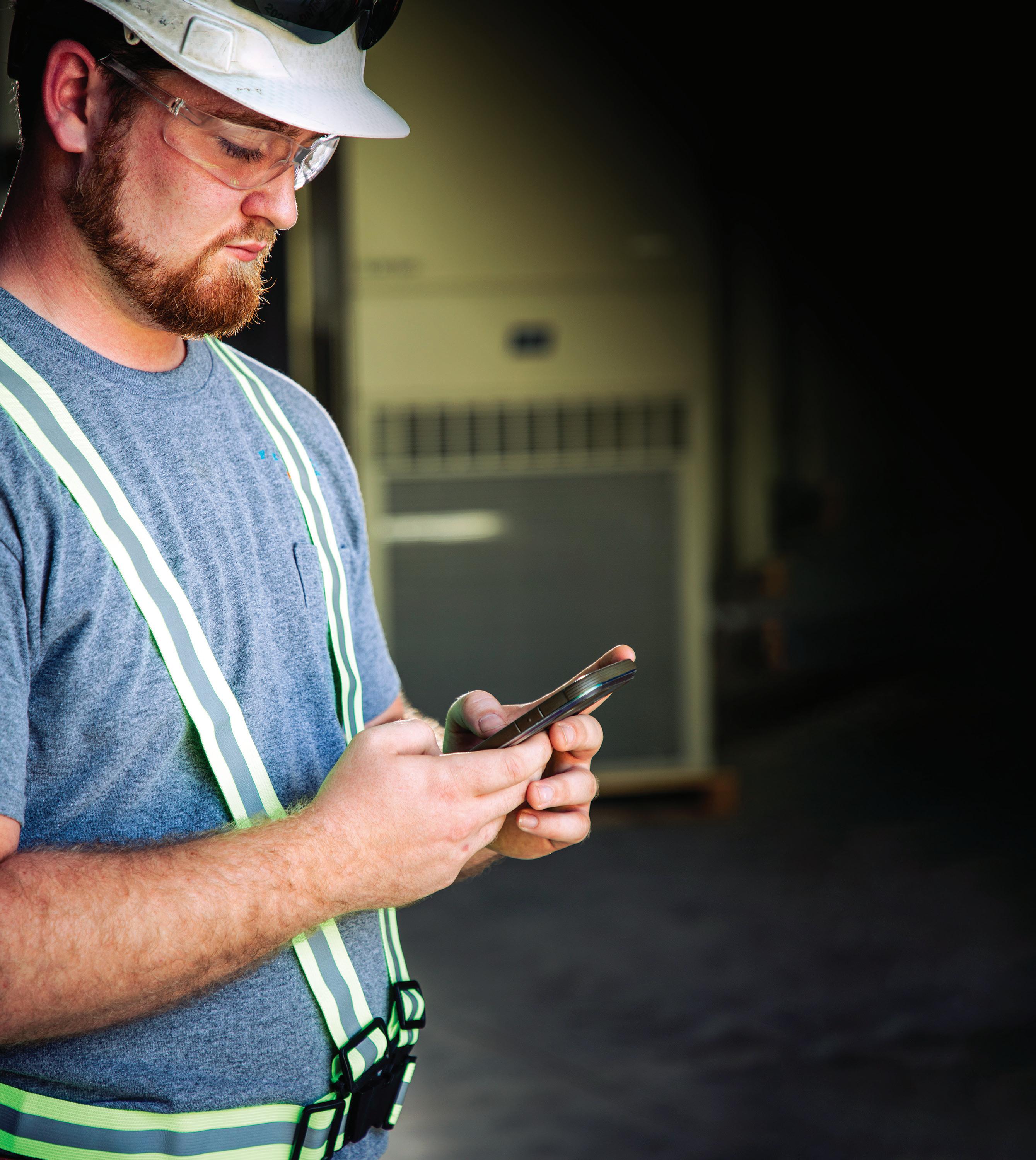
MARTIN WORKMAN
2025 PARMELEE AWARD RECIPIENT

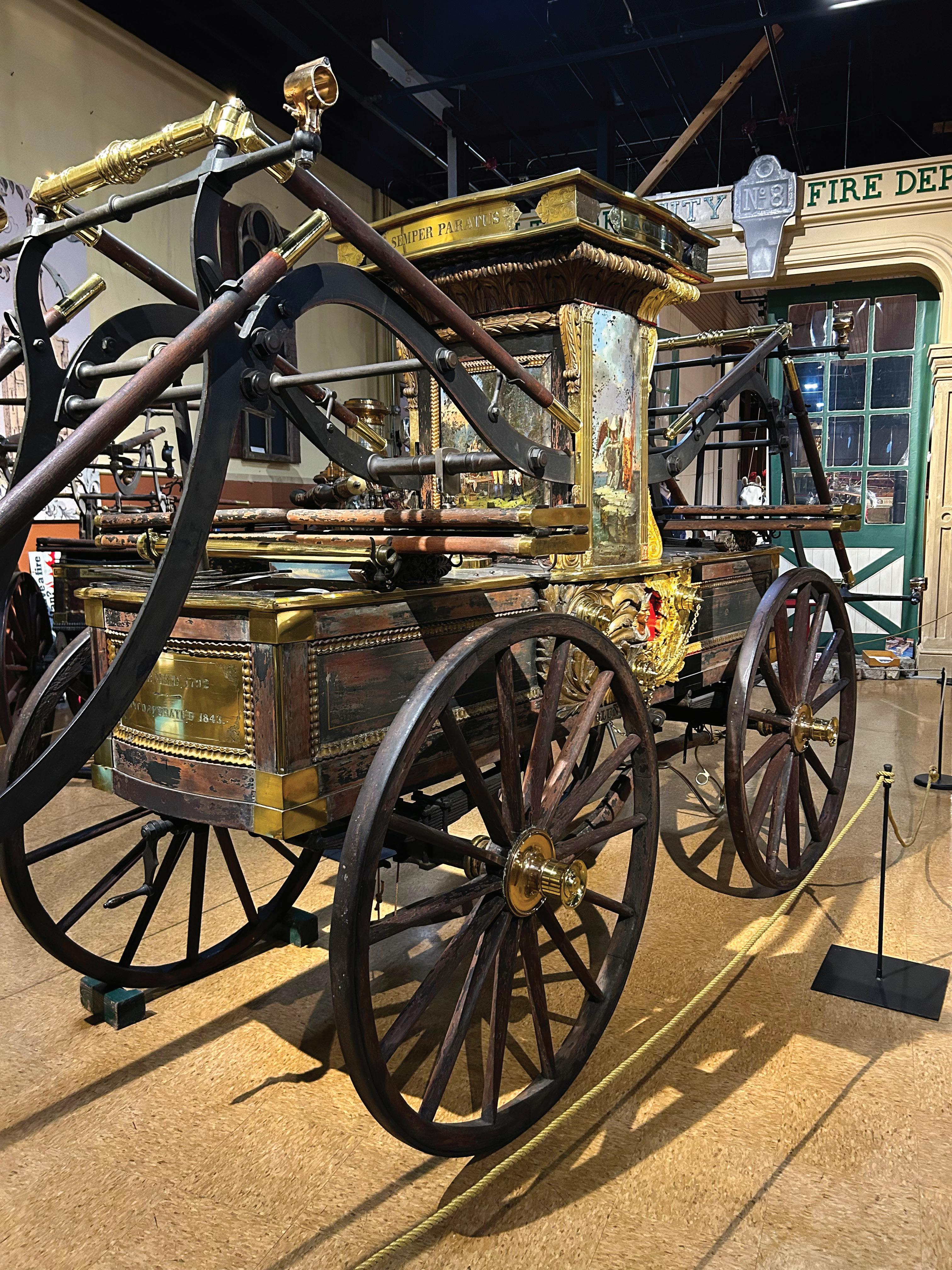
Commercial Riser (can



2025 PARMELEE AWARD RECIPIENT


Commercial Riser (can

THE FCA2 FLOOR CONTROL ASSEMBLY FITS JUST RIGHT Test & Drain
Potter Water Flow Detector available in Explosionproof and automatic test versions
The Model FCA2 is cULus Listed in all sizes and FM Approved in 2"–8". The FCA2 is designed for optimal configuration for any installation scenario. With 360° rotation of each modular component, this versatile assembly adjusts to the trickiest corners.
All the components required for a complete floor control assembly. Available in sizes from 11/4"–8".
One PO. One Box. One Installation.
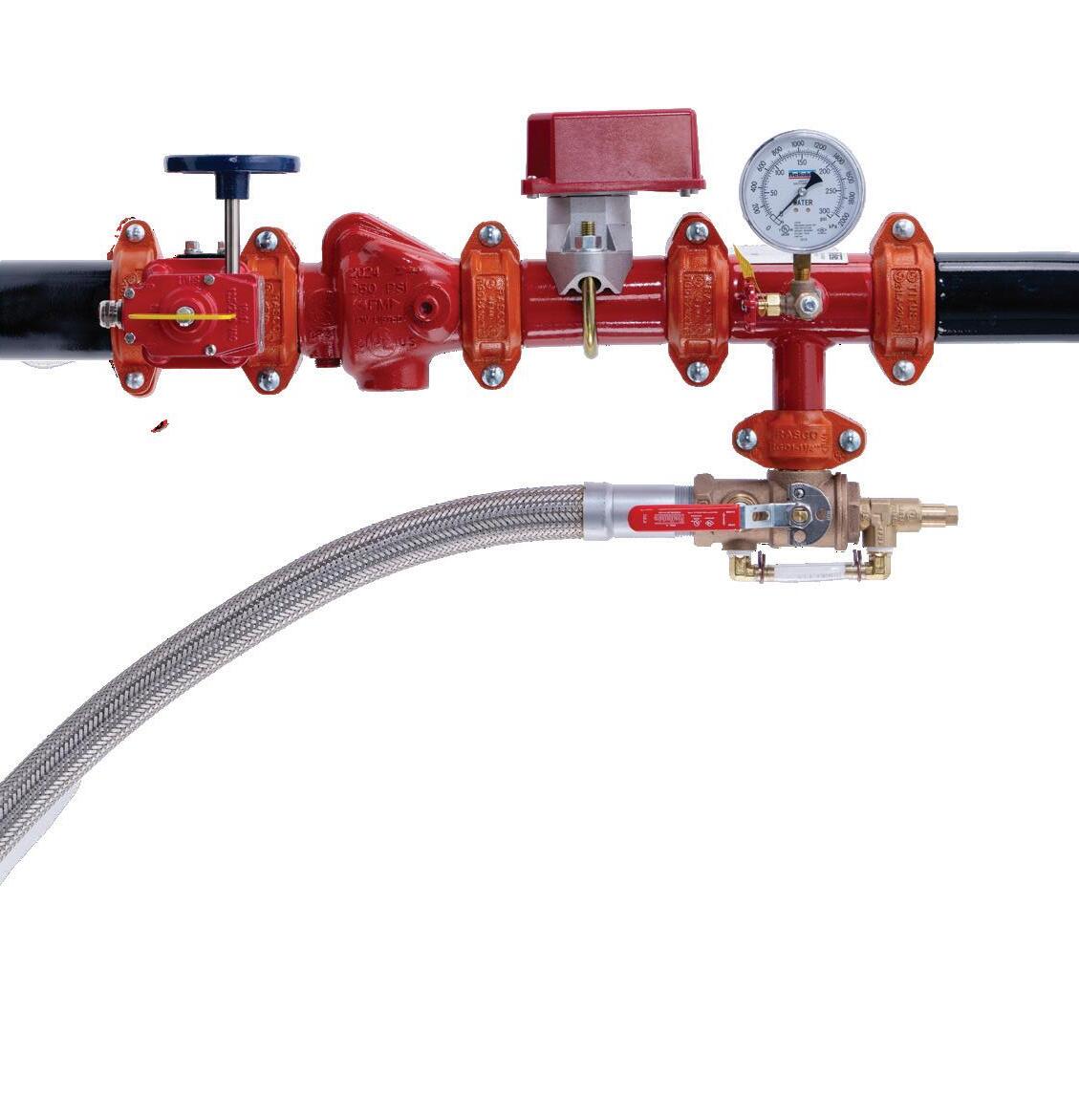


Our new mill expands our overall product capabilities, giving us the most comprehensive range of sprinkler pipe in the industry:
• Diameters from 1” to 10” NPS.
• Schedule 10, 30, 40, and Eddy Flow (size dependent)
• Lengths up to 25’, with custom lengths available
Plus a variety of finishing options — not to mention our exclusive EddyGuard II® MIC antimicrobial coating to help ensure reliable flow for years.
It’s all available to you from a single, responsive supplier…making your pipe selection job much easier.

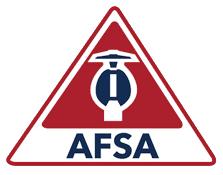
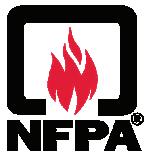

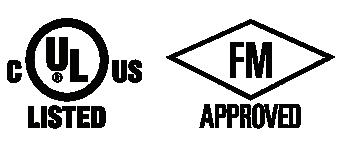
The best-in-class tool for in-air or power driven field fabrication of 1 – 12" OGS and 1" IGS pipe in various pipe materials.
› Groove diameter adjustment
› Manual or power driven
› Interchangeable roll sets
› Simple depth setting procedure
› Adjustable ratchet

› Lightweight and portable
› Collapsible for tight spaces
› Rugged design
› Plastic tool case protects the tool and organizes accessories
› Strong enough for field fabrication
Includes a full package of components for operation and service


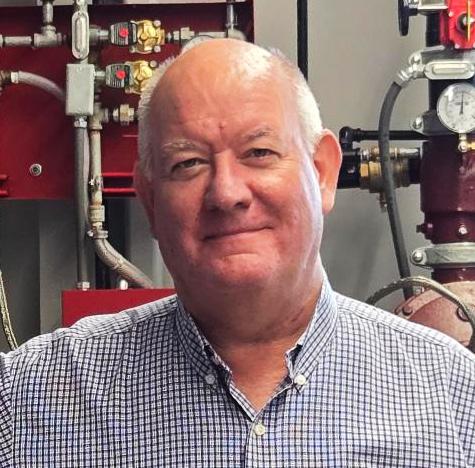
THE COVER: Martin Workman, senior vice president of product development for The Viking Corporation, Inc., is AFSA’s 2025 Henry S. Parmelee Award recipient. Also in this issue: NFPA 13.




Ask not what you can do for AFSA, ask “What can AFSA do for you?” (a little play on words from JFK). Convention is here, and we are so excited to have over 1,200 attending AFSA44 in Washington, D.C. I would like to thank all the sponsors who support this endeavor, and for whom we would not be able to provide such a FIRST-CLASS convention without. Diamond Sponsors include ASC, Ferguson Fire & Fabrication, Reliable, Victaulic, and Viking.
The second Women in the Industry panel is on Wednesday, October 15, from 3:30-4:30 pm, with a short mixer after. The panelists include me, Lisa DiRienzo with Impact Fire Services, Meaghen Wills with Anchor Fire Protection, Jacqueline Wilmot, P.E. with Brooks Safety Solutions, and our moderator will be our very own Meda Merritt, AFSA’s Vice President of Membership and Chapter Development. Panelists will share their hard-fought stories and experiences that have shaped them into the successful women they have become in a male-dominated field. Last year, it was standing-room only. Don’t be shy, gentlemen—this panel is for men and women. See you all there!
The National Apprentice Competition is always the highlight of the convention. Congratulations to the finalists and their companies. I want to point out that a female apprentice is in the competition this year. I wish for all the finalists to do their best, but I must say I have a little extra “show them how it’s done” for Leona Ball with Piper Fire Protection from Region 5. Good Luck to ALL!!! You have earned your way here, and each of you has the opportunity to become the AFSA44 Apprentice 2025 Champion!
As I write my last Chair’s Message, I am traveling to the AFSA Florida Chapter for its Legislative Conference. This is an exciting opportunity to experience firsthand the work sessions that formulate important legislation for fire sprinkler contractors for the upcoming state legislative session. Accolades to the Florida Chapter board of directors, especially AFSA At-Large Director and Chapter Board Member Chris Johnson, and Chapter Executive Director Jessica Cox, for working tirelessly to obtain legislation regarding our apprentice training.
In September, I will attend the AFSA Virginia Chapter’s 32nd Annual Burn Survivors’ Golf Tournament. Last year set a record with over $100,000 raised for the Burn Survivors Foundation! Then, it is off to convention at the Gaylord National in Washington, D.C. At the AFSA44 General Session on October 17, I will turn the gavel over to our 2026-2027 Board Chair, Paul DeLorie. Paul will be an excellent Board Chair and serve the association and its members well. Post convention, I will squeeze in the AFSA Georgia Chapter Golf Tournament on October 24, and then I’m off to my AFSA Louisiana Chapter Social and Golf Tournament, October 27-28, in Baton Rouge. No time for work!
In closing, I want to thank everyone for their hard work and dedication to support my goals for AFSA, the Board, committee chairs and members, AFSA team, and my Fire Tech Systems’ team. None of this would have been possible to achieve without your support and desire to move AFSA forward for the betterment of its members. See you all at convention to celebrate all the great things that are happening at AFSA for its members. It has been an honor to serve you as Board Chair these last two years! n
EDITORIAL: 214-349-5965
BOB CAPUTO, CFPS, Publisher, ext. 124 bcaputo@firesprinkler.org
D’ARCY G. MONTALVO, Editor, ext. 115 dmontalvo@firesprinkler.org
ADVERTISING: 214-349-5965
CLARISSA RIOS, Communications Coordinator, ext. 134 crios@firesprinkler.org
CIRCULATION: 214-349-5965
D’ARCY G. MONTALVO, Editor, ext. 115 dmontalvo@firesprinkler.org
AFSA BOARD OF DIRECTORS
LINDA M. BIERNACKI, Chair, Region 5, 318-841-0330
PAUL DELORIE, First Vice Chair, Region 10, 603-432-8221
JAY STRICKLAND, Second Vice Chair, Region 6, 301-474-1136
ROD DIBONA, Treasurer, Region 4, 605-348-2342
JEFF PHIFER, Secretary, Region 8, 803-438-2994
JACK A. MEDOVICH, P.E., Immediate Past Chair, At-Large, 804-222-1381
BROOKS BAYNE, Region 1, 503-692-9284
HUNTER BRENDLE, At-Large, 334-270-8571
MINDY BUCKLEY, At-Large, 770-925-9099
TOMMY CLEMENTS, Region 9, 804-459-2218
CHRIS JOHNSON, Region 7, 727-5821-9339
R. DONALD (DON) KAUFMAN, Region 3, 505-884-2447
MICHAEL F. MEEHAN, At-Large, 804-459-2200
WAYNE WEISZ, Region 2, 209-334-9119
BOB CAPUTO, CFPS, President, ext. 124
MATT KLAUS, Executive Vice President & COO, ext. 139
MELISSA ATHENS, Vice President, Finance, ext. 112
LESLIE CLOUNTS, Vice President, Education Services, ext. 130
JOHN AUGUST DENHARDT, P.E., FSFPE, Vice President, Engineering & Technical Services, ext.121
MEDA MERRITT, Vice President, Membership & Chapter Development, ext. 133
Sprinkler Age is devoted to the professional development of the fire sprinkler industry. Deadline is 1st of the month preceding publication.
Published by American Fire Sprinkler Association, 1410 East Renner Road, Suite 150, Richardson, TX 75082. Call (214) 349-5965, FAX (214) 343-8898, or email sprinklerage@firesprinkler.org for information.
Copyright © American Fire Sprinkler Association, Inc. All rights reserved. PRINTED IN USA. Unless expressly stated otherwise, all editorial and advertising material published is the opinion of the respective authors and/or companies involved and should not be construed as official action by or approved by Publisher or the Association.
LINDA M. BIERNACKI AFSA BOARD CHAIR
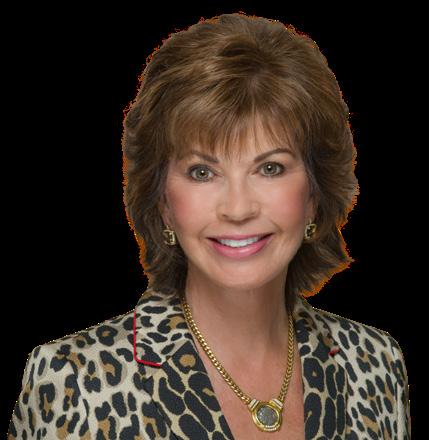
Sprinkler Age is a membership benefit, provided free of charge to AFSA members. For information on nonmember and/or foreign subscription rates, call (214) 349-5965.
AFSA annual membership dues are a sliding scale for Contractors and Associates and a flat fee for Authorities Having Jurisdiction. (Members receive a free subscription to Sprinkler Age.) Write or call AFSA for membership information. See AFSA’s website at firesprinkler.org.



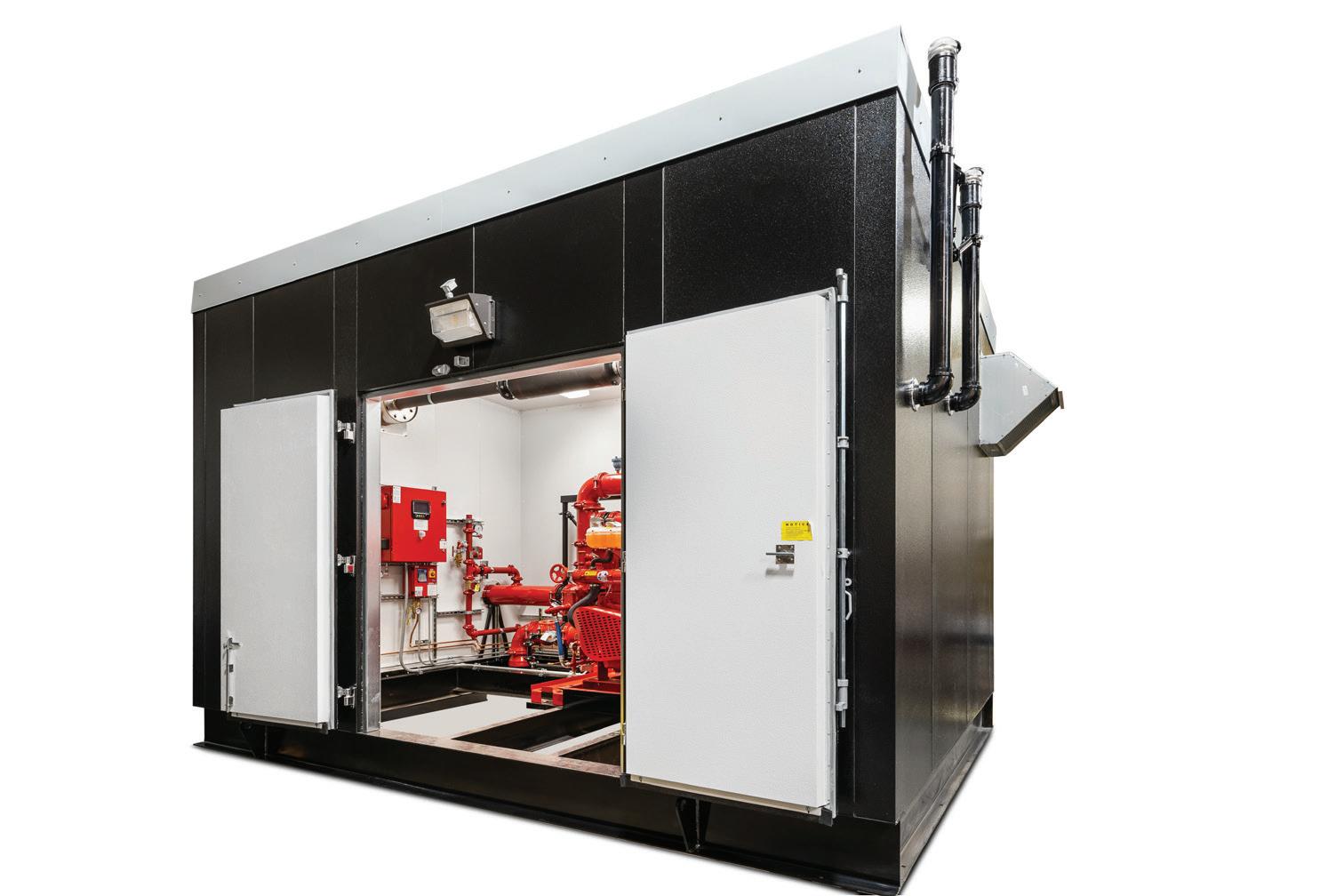
On behalf of the AFSA team, it is my great pleasure to welcome you to AFSA44. We are delighted to have you join us for what promises to be an inspiring and unforgettable event. Our shared commitment to advancing fire protection, life safety, and our mission of protecting people and property provides a unique opportunity to connect, learn, and grow together. With a diverse lineup of educational sessions and an exhibit hall showcasing the latest innovations in our industry, we are confident you will find new ideas, valuable tools, and fresh perspectives to bring back to your teams and communities.
Equally important, this convention is about relationships— strengthening the bonds that make our association a family. Whether you are a first-time attendee or a long-time member, we encourage you to take full advantage of the networking events, share your experiences, and collaborate with colleagues who share your passion for fire and life safety. Together, we will explore emerging technologies, evolving codes and standards, and the future of fire protection in a rapidly changing world. Thank you for being here and for the role you play in advancing our industry and our association, as well as for the lives and property we save through the work we love doing. We also wish to extend our deepest gratitude to our sponsors and partners, whose generous support has helped make this event possible. We look forward to a memorable convention filled with learning, inspiration, and fellowship. Welcome, and let’s make this our best convention yet!
For those of our members who are not fortunate enough to be able to attend this year’s event, let me take a few paragraphs to talk about what you can expect to see from your association as we move into 2026. First and foremost, we are proud to announce that our Virtual Instruction Program (VIP) for Fire Sprinkler Fitter Apprenticeship is growing rapidly. The latest Phase One class, which was recently started, has over 60 registered apprentices from across the country, and our ever-growing cadre of incredible instructors is increasing with it. For those of you unfamiliar with this program, it allows your apprentices to attend the required classroom sessions remotely, from anywhere with a live instructor via connected devices. This is a benefit for those companies and apprentices working in remote locations, as well as those where traffic makes attending an actual classroom difficult after an eight-hour workday.
Our 20-month ITM program is easily the most well-enrolled, and the last few classes have had 100% pass rates for NICET Level II test takers. Attendance in our programs for layout technicians and fire pump testing has also seen a sharp rise, and the feedback we’ve been receiving is an indicator of great successes for our instructors and the participants who have attended. Our lab space is being booked almost every week with open registration and private training programs.
But that’s not where the success stories end. AFSA staff, under the guidance of our Board of Directors, have plans to expand our lab and our training programs to include ITM for fire alarm (low voltage), kitchen hoods, fire extinguishers, fire doors, and dampers to help

me
increase opportunities for our members to add services and for AFSA to become your one-stop shop for training and education for your staff. I invite everyone to visit our website, firesprinkler.org, and click on the Education & Training tab to see the many options at your disposal.
As we’ve noted in the recent past. AFSA would love to hear and publish your story in Sprinkler Age. How did you get into this industry? Why are you a member of AFSA? Is there something our Engineering & Technical Services Department has done to save you time or money? What’s next for your region or this industry? We want to know, so please tell us your story so we might share it with others.
Finally, I’d like to say thank you to Linda Biernacki, who has served as Chair of the Board these past two years. Linda brought her unique style and panache to the role, while keeping everyone on their toes and helping to guide the Board and the staff to reach a little further and accomplish their goals. Enjoy the convention, and don’t forget to have a little fun! n
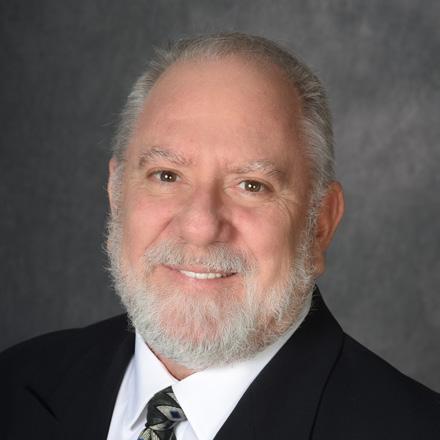
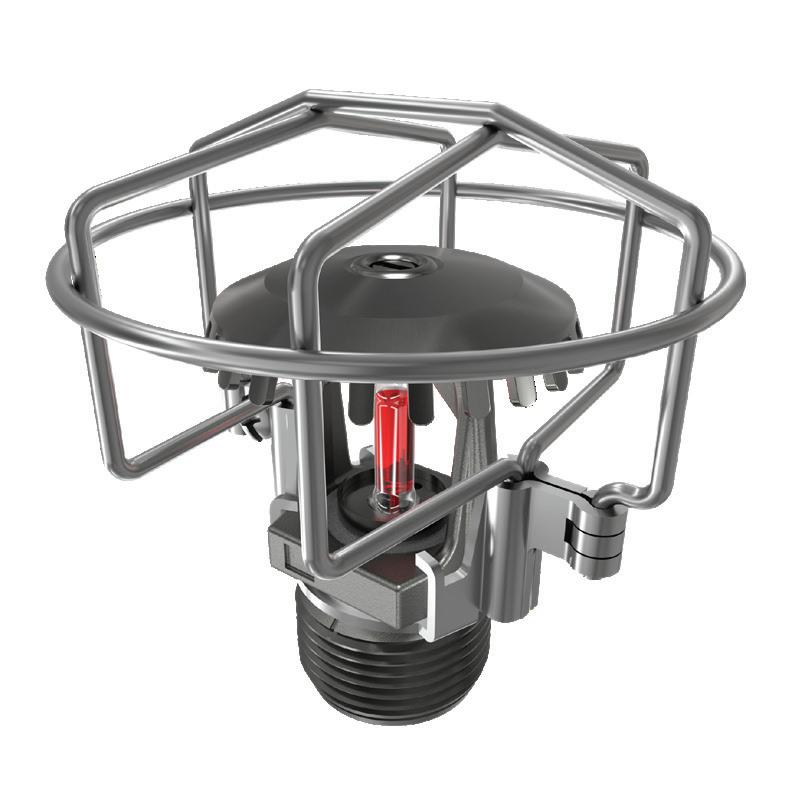
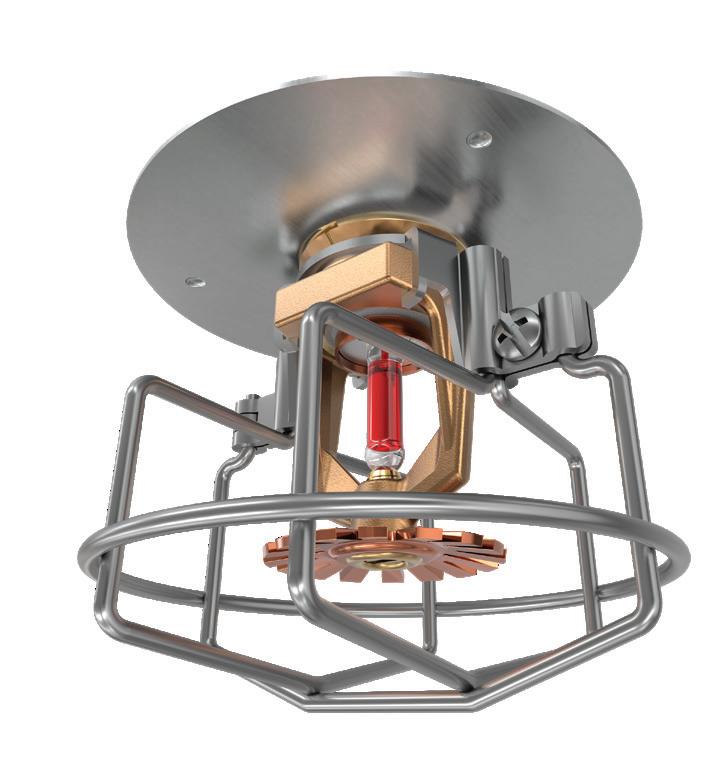

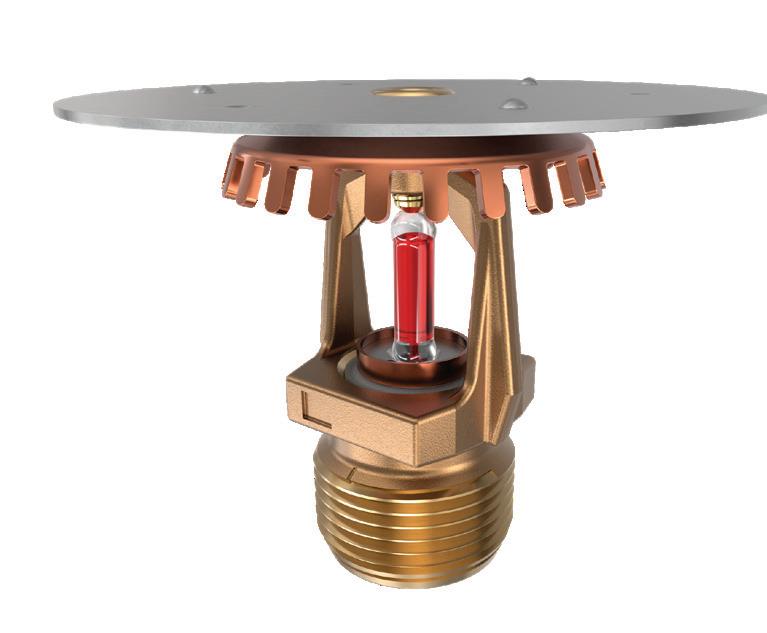



We offer a complete lineup of intermediate level in-rack sprinklers, accessories and installation tools— featuring over 20 FM Approved and/or UL Listed configurations—designed to meet the demands of today’s toughest storage environments.
From standard racking to automated storage and retrieval systems, our sprinklers, guards and watershields are engineered for performance and flexibility designed to avoid obstructions while maximizing coverage.
Viking’s entire intermediate level in-rack offering includes InstaSeal® compatibility, allowing the flexibility of hand-tightening without using a wrench, tape or dope.
Learn more on our website at info.vikinggroupinc.com/in-rack.
Over the last few months, I have attended several NFPA technical committee meetings and the SFPE Storage Symposium. One thing became evident: many times, we do not know what we don’t know or what we should know. What do I mean?
Look at the hazard classification of a typical automotive parking garage. The annex to the 2025 edition of NFPA 13 lists a typical automotive parking garage as Ordinary Hazard Group 2 (OH2). Now let’s add electric charging stations and maybe vehicle stackers to the typical parking garage. Does that change the hazard classification discussion? Some local plan reviewers and AHJs are classifying any parking garage with electric charging stations as Extra Hazard Group 2 (EH2). Are they out of their minds? NFPA 13, 2025 edition defines an EH2 as “3.3.148.2 Occupancies or portions of occupancies with moderate to substantial amounts of flammable or combustible liquids or occupancies where shielding of combustibles is extensive.” I’m not sure EH2 is correct, but we need more data.
So, what do we do as an industry? We look at loss history, field experience, and fire testing to attempt to answer this question. Several organizations have been looking at this issue critically for automotive parking garages. The NFPA Research Foundation has an ongoing parking garage research project that AFSA proudly sponsors. They are working on Phase 3 of the report, and as a technical panel member, I’ve seen some of the testing. There were public inputs to NFPA 13, 2028 edition to modify the requirements. Unfortunately, only minor changes were accepted during the first draft meeting without more data being provided. The second draft meeting should offer more changes. NFPA 88A, Standard for Parking Structures, 2027 edition is currently under second draft. There are public comments moving forward to address the sprinkler criteria. We will see what shakes out, but one thing I know for sure, we do not know what we do not know. Also, remember, just because design criteria get into a standard does not make it gospel. In many cases, it is an educated guess based on the data the technical committee has to review.
Our industry has changed substantially in the last decade. New technologies, products, storage arrangements, tighter deadlines, and many other items come to mind. What is one to do? Stay informed, ask questions, and hold on because the pace is furious, and I do not think it will slow down anytime soon. For example, who would have ever thought NFPA would develop a standard on cannabis, NFPA 420, Standard on Fire Protection for Cannabis Growing and Processing Facilities, a code to address battery safety, NFPA 800, Battery Storage Code, or add fall prevention to the scope of NFPA 101, Life Safety Code,® which has rules for grab bars and other items.
Just as the industry has changed, has your company changed? Are you looking at new lines of work? Are you doing more ITM activities? NFPA 25’s scope includes water storage tanks, water spray systems, water mist systems, foam systems, underground piping and valves, and fire hydrants. Have you thought about adding these services? ITM activities also could include fire extinguishers (NFPA 10), kitchen hood systems (NFPA 96), carbon dioxide systems (NFPA 12), clean agent
systems (NFPA 2001), hybrid fire suppression systems (NFPA 750), fire alarm and signaling systems (NFPA 72), dry chemical extinguishing systems (NFPA 17), fire doors and windows (NFPA 80), wet chemical fire extinguishing systems (NFPA 17A), and emergency exit lights (NFPA 101). The need for experienced inspectors to perform these inspections is huge. You might want to look at your competitors, as many of them are expanding their service to include these requirements in their offerings.
Where is this industry going? Your guess is as good as mine. But I can tell you that if you keep your head down, you might miss the opportunity to keep up.
I also want to remind all that the responsibility for performing a service comes with liability if your team does not perform the service professionally and in full compliance with the terms of the contractual agreement. This means you need trained and experienced field inspectors and administrative staff who can write a proposal to cover your company’s exposure. Let me give you a real-world example. You enter into an agreement to perform annual ITM service on one 1,000 gpm at 100 psi-rated diesel-driven fire pump system in accordance with NFPA 25, 2023 edition. Your inspection team does a complete flow test, and the documentation is perfect. All items passed, and all is great. Did your contract specifically exclude all the required inspections, testing, and maintenance on the diesel driver? If it did, did the client have the same understanding? Does the AHJ understand you did not do a complete ITM on the diesel driver? What if the driver has an issue a month after you were onsite because you did not change the fuel filters? Who is going to get the blame? Even if you had excluded the work, finger-pointing would occur if all parties involved were not on the same page.
The bottom line is that all staff involved in any part of sales, inspections, and administration of the work must be trained on what is important and what can happen if items are missed. We do not know what we do not know, but “we do not know” is NOT a legally defensible answer. Standardized procedures with proper training can assist in making sure your company succeeds.
AFSA is looking at what the future brings. We have come a long way since our start, especially in the last five years. We want to serve our members as they move forward. Do we need to offer training in some of the areas I discussed, or should we stay focused on what we’ve been doing? Our technical team is up for the challenge; are you? Let me know what you think about AFSA expanding our scope of training. I want to hear your thoughts. Feel free to reach out to me directly at jdenhardt@firesprinkler.org. n

JOHN AUGUST DENHARDT, P.E., FSFPE AFSA VICE PRESIDENT OF ENGINEERING & TECHNICAL SERVICES
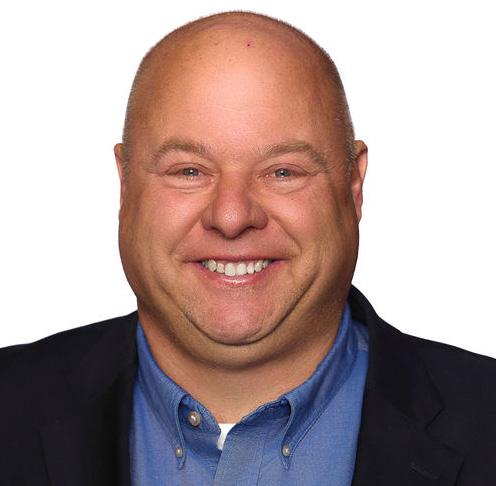

When facing tight physical and logistical windows, it helps to have a dedicated hand at the wheel to ensure everything goes smoothly.
Our Project Management service provides expert support and organization at every step of the process; from design to fabrication to the complete package arriving on the jobsite, we’ll anticipate your needs and provide focused, experienced assistance.
“Leading by example” is often touted yet not always accomplished. Hallmarks of this leadership style include acting with integrity, demonstrating accountability, fostering trust, and modeling best work ethics and values. Leaders who embody these traits inspire others to achieve their best. One member of the fire protection industry who lives this principle is Martin Workman, senior vice president of product development for The Viking Corporation, Inc. Because of his commitment and dedication to education, training, and the betterment of the industry, the American Fire Sprinkler Association (AFSA) is pleased to recognize Workman with its highest honor, the Henry S. Parmelee Award.
Workman joined the fire protection industry when a friend’s father offered him a job in western Michigan, if “he didn’t mind getting dirty.” Workman was working at an auto parts store and was happy to accept, as he was paying his way through college. “I didn’t really understand what I was doing at first,” he remembers. “I unloaded pipe mostly.”
Workman was on a prevailing wage job, and his new boss wanted him to join the company’s apprentice program. Workman agreed and quickly advanced through the trade. “As a second-year apprentice, I was running jobs,” Workman remembers. He eventually left the field to pursue design, but spent most of his time in contracting at Peninsula Fire Protection in Grand Rapids, Mich. In 1994, Workman was named vice president and part owner.
Workman was also involved with training at Peninsula. One night, he filled in for the regular instructor on the design and hydraulics section. “That one night turned into five years,” he laughs. Workman found he had a knack for teaching and connecting with the apprentices and began instructing for all levels of the program.
That same year, AFSA and Associated Builders and Contractors (ABC) agreed to establish AFSA’s Training for Excellence correspondence courses as the national standard for sprinkler fitter apprenticeship training. Ken Huber at ABC asked Workman if he’d be a Subject Matter Expert (SME) on the committee. “I initially
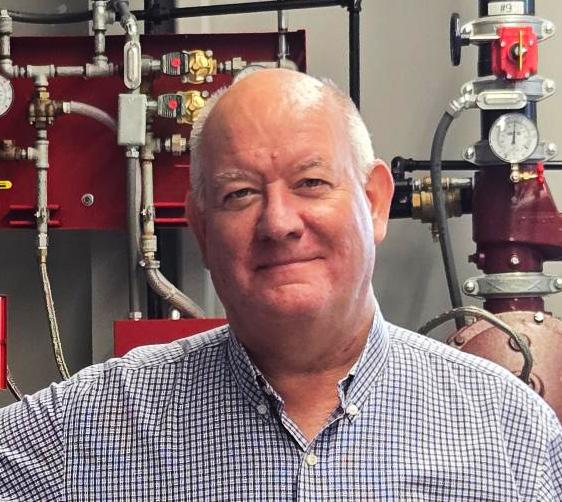
said no because I didn’t consider myself an expert,” says Workman. “I’d never even heard of the term ‘Subject Matter Expert!’”
However, Huber convinced Workman that his input would be valuable. “The day I flew into D.C. for my first set of meetings, I was clueless!” Workman recalls. “I am so grateful to the people I met there— Danielle Dixon, Lenny Hollis, Janet Knowles, Bob McCullough, John McDonald, Doug Rice, Manning Strickland, Jack Viola—all are very special to me, and I know there are others I am forgetting to mention. They were outstanding mentors who taught me much about business, the trade, and people.”
Viola was impressed with Workman’s work and dedication to the project. “Not only did Martin generously share his expertise, but he also single-handedly wrote critical chapters that have become foundational to the program’s continued success. His willingness to go above and beyond for the rewrite committee was evident throughout every phase of the project.”
Those meetings were long and intensive. “It was all about being together and working,” comments Workman. Weekends away from home were required because most committee members were business

Workman proudly shared his first NICET certification in 1992.
owners who had to return to their companies. Workman soaked up all the knowledge he could. “Being from Michigan and not having traveled much, it was fascinating to learn what was required for the different regions around the country, like minimum bury for underground pipe due to freezing.”
“Jack, Bob, and Manning were very welcoming to me as a young guy,” says Workman. “After I met Bob, he would ask me why Peninsula wasn’t a member of AFSA. I told him we did our own thing in Michigan. He then paid for my wife, Tracy, and me to attend the convention and see what AFSA was all about.”
He continues, “Bob was so committed to the training of the industry. He had a true passion for it. I was lucky to understand that early on. The more you gave of yourself or to the trade, the more you’d see it come back. Bob would say, ‘The better you train your people, the better you train your competition, and that’s good for business.’ He was good that way.”
Peninsula joined AFSA as a contractor member, and the combined training debuted thanks to the committee’s dedication and unselfish energy. Eventually, ABC’s craft training curriculum spun off into a new independent non-profit organization, the National Center for Construction Education and Research (NCCER). AFSA’s partnership with NCCER continues today, providing the industry with best-in-class apprenticeship training.
Retired AFSA staff member Janet Knowles, AFSA’s communications director at the time, served as AFSA’s staff liaison to the review committee and worked closely with the SMEs throughout the four-book revision. “Martin committed a significant investment in time and always came prepared and was willing to step up when needed,” she says. “Although I retired from AFSA nearly a decade ago, I still like to look through Sprinkler Age magazine online. When I see an article written by Martin or a note that he will be speaking at an upcoming convention, I know that he is still delivering on his promises to further the goals of the fire sprinkler industry and AFSA.”
Viola agrees. “Martin’s unwavering commitment to the writing and upgrading of the curriculum has been instrumental in raising the standards for fire sprinkler apprentices nationwide. His tireless efforts and deep knowledge have helped ensure that AFSA’s curriculum remains the benchmark for excellence in the field.”

Workman takes the principles of mentorship and giving back to heart. It’s been the foundation for all he’s done on both the contractor and manufacturer/supplier sides of the industry. “The people I talked about who mentored me while we were developing apprenticeship training didn’t charge me for it, and I have the responsibility to do the same. People have always given to me. I’ve advanced my career because of it and been able to do many things other people haven’t. These guys were teaching me a craft. Very few people aren’t willing to teach you everything they know, and they do it willingly in this industry. You lead by example. And the examples I’m giving you are true leaders.”
Workman has also written for the United Association’s (UA) apprentice curriculum and judged its apprentice program. “Training is training,” he says.
Working on the national apprentice training committee was Workman’s first introduction to AFSA and the start of a decadeslong relationship. After attending that first convention in Atlanta in 1996, Workman joined and became involved in many of AFSA’s projects and initiatives.
Workman served as a judge for several National Apprentice Competitions (NAC). When AFSA established its scholarship essay contest to educate the public and high school students about sprinkler systems and the industry, Workman volunteered to serve as a judge for several years. That required him to read many batches of essays written by students. “I enjoyed reading the essays. I was surprised by how many there were. Workman comments. “It was gratifying to see the attention the trade was getting from young people.”
Workman was invited to represent AFSA on the NFPA 30, Flammable and Combustible Liquids Code, committee in the late 1990s. That led to serving on numerous committees, including NFPA 30b, Code for the Manufacture and Storage of Aerosol Products; NFPA 13, Standard for the Installation of Sprinkler Systems; NFPA 11, Standard for the Low-, Medium, and High Expansion Foam; NFPA 401, Standard on Aircraft Hangars; NFPA 415, Standard on Airport Terminal Buildings, Fueling Ramp Drainage, and Loading
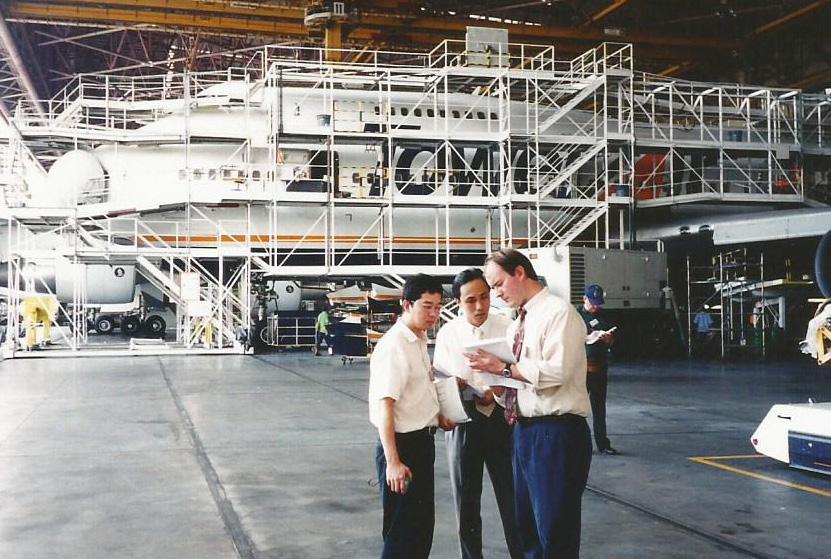
Walkways; NFPA 423 Standard for Construction and Protection of Aircraft Engine Test Facilities; NFPA 502, Standard for Road Tunnels, Bridges, and Other Limited Access Highways. He has served as a principal member on all the committees except for NFPA 502, where he is an alternate member.
Workman also served on AFSA’s Technical Advisory Council (TAC), which was established to address technical issues and NFPA codes and standards related to the fire sprinkler industry. Forty contractors, designers, and engineers from around the country served on the TAC during this time, comprised of AFSA representatives on NFPA technical committees, sprinkler manufacturers from AFSA’s Manufacturers/Suppliers (M/S) Council, and AFSA staff.
“It’s impressive to see such a large contractor presence in the TAC, says Workman. The members are very committed to their craft and profession,” says Workman.
Workman is also a member of the National Fire Protection Association (NFPA), National Fire Sprinkler Association (NFSA), and Society for Fire Protection Engineers (SFPE). He has served as a presenter, author, and trainer for ABC, AFSA, and NCCER. Workman is NICET Level II Special Hazards and Level III Sprinkler Layout certified and is considered an SME for NCCER.
“Martin has been a staunch advocate for fire sprinkler systems. His involvement with industry associations demonstrates his commitment to advancing life safety systems,” comments James Golinveaux, chairman of the board for The Viking Group. “Through his participation with NFPA, he actively contributes to the development and refinement of fire protection standards, ensuring they meet the highest safety and efficiency criteria.”
Peninsula Fire Protection was a customer of Mike Bosma’s at Viking, and in the mid-90s, that relationship changed the trajectory of Workman’s path in the industry. “He asked if I’d ever be interested in working for Viking, but I was happy at Peninsula,” Workman remembers. “By 1997, though, I was ready for a change.”
Bosma, currently president of Viking SupplyNet, notes that Workman always had a real passion for the business. “I felt we needed someone with that contractor perspective, and we’ve
benefited greatly from Martin’s passion for the industry, customer service, and training. Many of our products today have his fingerprints all over them, especially on the valve and special hazards side. He was instrumental in developing dry ESFRs, new versions of dry valves, and integrated systems.”
When Workman started at Viking, he created many training presentations covering wet, dry, deluge, special hazard, and preaction systems. “We had to create all that curriculum,” Workman notes. “Traveling globally, you’re leaving those presentations about good fire protection everywhere,” Workman notes. “Viking has a long history of commitment to training. Dick Groos taught our very first training program!”
One of Workman’s tasks was to travel with the salespeople to meet customers and bring back feedback. From that first trip out of Michigan to Washington, D.C., Workman has now traveled the globe—throughout North and South America, Europe, Asia, the Middle East, Australia, New Zealand, South Africa—and was able to see how the installation of fire sprinklers differed from the U.S.
Going on sales calls to customers and sharing information were highlights from those days. “If you have a great idea, it’s nice, but if no one else likes it, it doesn’t work,” Workman notes.
He says those sales calls were where he saw his efforts pay off. “As I’ve traveled the world, I’ve been able to share trade experience with others. Viking has often been asked for assistance, and we’ve been able to contribute to many country and global standards. I’m lucky to be at a company supporting that willingness to help. It’s hard when you’re at other companies that don’t see value in training and volunteering.”
Workman rose to product manager at Viking, overseeing its entire product line. One of his responsibilities was chairing an internal New Product Development (NPD) group, which identifies new products and prioritizes projects for research and development. In 2010, Workman rose to vice president of product management, which recognized his role in product management and new product development for Viking. He continued to chair the new product development team and manage the Viking product line, and became instrumental in setting up and managing its non-water-based system products. He was also a significant factor in the continued development of the Viking seminar and numerous training efforts within the company and the sprinkler industry.
In March 2021, Workman was promoted to senior vice president, product experience, where he continues to develop products, business, digital initiatives, special hazard sales, training, and technical services for Viking. He also continues his involvement with research and development, manufacturing, and marketing to develop products for the industry.
All his roles at Viking have required Workman to travel extended periods away from home and family. He was on the road for many years, and then COVID hit. “We all stopped traveling for a while, but it happened at a good time when I needed to be home,” Workman says.
Family is extremely important to Workman. His wife, Tracy, has been by his side from the beginning, always supportive and just as committed to the industry and its people. “I remember when I was still fitting pipe, and I had some work release individuals working on a job. I shared my lunch with some of them when we broke for lunch because they had nothing. I was telling Tracy about it that night. The next day, I opened my Igloo, and she had also made lunch for them. From then on, she made lunches for all those men who worked for me.”
Tracy was also instrumental when Workman was developing the national apprenticeship training materials. “I’d have the dining room table covered in papers and books,” Workman remembers. “If Tracy came in and read what I’d written and could understand it, then I knew the apprentices would, too,” Workman remembers. “If she came with me to a trade show, she would help man the booth. She knows what I’m talking about because she’s been involved with this industry right along with me.”
The couple had four children along the way—Jessica, Martin II, Emily, and Kaleigh—and Workman gives Tracy all the credit for raising them while he constantly traveled. “I wasn’t home a lot of nights, and she’s made a lot of sacrifices for me. I really appreciate her and the kids for all they’ve done.”
The Workmans’ children have grown up and had families of their own. Daughter Jessica has three children, Jacob, Emilia, and Lucas; son Martin II and wife Candance have one daughter, June; daughter Emily and her husband Gredual have three children, Oliver, Lydia, and Emma; and daughter Kaleigh and her husband Francisco (Frankie) also have three children, Frank Martin and Edison.

The Workmans’ wedding day, August 29, 1986, with lifelong friends David Hickox and Julie Hooper by their sides.
Tracy was initially diagnosed with cancer in 2015. After surgery, it appeared she was good. In 2017, she was diagnosed with cancer again and is undergoing various treatments. In 2024, Tracy was diagnosed with chemotherapy-induced leukemia in 2024. “I seriously thought about retiring when Tracy battled that first bout of cancer, and she said I’d drive her and myself crazy if I did,” Workman remembers with a smile. “Our children have been wonderfully supportive, and her doctors are great,” comments Workman. “Cancer really changes your perspective,” he notes, “but we’re going on 39 years together, ready for our 40th, and pushing towards our 50th!”
The couple currently resides in the country outside of Delton, Mich. Workman isn’t planning to retire anytime soon, but is setting that up for the long term. “It’s always time to move on at some point,” he notes. “I’ve thoroughly enjoyed being


involved in the fire protection industry, but I’m looking forward to more time with Tracy, the kids, and grandkids.”
What are Workman’s thoughts on the future of the sprinkler industry? We’re behind. “Industry always seems to be 20 years ahead of product development in fire sprinklers. What we once knew in storage is now changing at a fast pace, and the standards are having a hard time keeping up with it. We will soon have warehouses without aisles, and maybe no people. Automated retrieval storage racks and robotic top-loading and side-loading storage are here today. At the moment, NFPA 13 has to say these facilities are out of its scope.”
Boat storage is one example. Workman notes that Michigan has more lakes than any other state, and boat storage abounds and has been built with sprinkler protection. Yet NFPA 13 doesn’t cover that.
“Going forward, we will see more dependence and reliance on manufacturers for testing,” Workman notes. “Customers don’t listen to us like they used to. We’ll say, ‘Don’t use plastic,’ and they say, ‘That’s what we use.’ ‘Don’t store with automatic retrieval systems,’ and they say, ‘Well, that’s how we store.’”
He continues. “The future is exciting to me because of new technology and new needs,” Workman says. “We’ve disproved what we thought we knew from much of the storage testing we did decades ago. I can see us going back to doing more in-rack sprinklers with a smaller K-Factor because you need them in more spaces. There are definitely some challenges for the industry, and they always come from the contractors. Oftentimes, they are plowing the new trail. ‘Sprinkler per 13’ is the norm, but when it’s out of scope, you get involved with insurance and local Authorities Having Jurisdiction (AHJs).”
Workman sees the residential area as the biggest growth market, with the most significant opportunity. “That’s where I think we run into the people problem—not enough of them to fulfill the public’s safety needs. Most people end up here accidentally, and a few are born into the trade. The trade found me, yet I didn’t know I was lost!”
Workman sees recruitment as a continuing challenge for this industry. “How do we make the trade interesting? I don’t think people really understand that this industry is not a place you end up; it’s a launch pad.”
To that end, Workman and Viking work with the AFSA Virginia Chapter in its recruitment efforts. During the chapter’s annual career fair, Brian Berkley with Viking travels down with virtual-reality (VR) headsets that introduce the industry in a gaming-type experience for students. “It gives the upcoming generation a taste of the trade and lets them know about our great opportunities,” comments Workman. “I’m a perfect example of how far someone can go in this industry. I started at $3.50 an hour and didn’t know much of anything. This trade rewards you if you have an above-average work ethic.”
Workman is calling for industry professionals to get involved. “The more we can promote our trade, the better, because it’s such a positive one. I always tell people that the result of what I do saves lives and property. We install sprinklers in buildings according to a prescriptive code, which means it’s been tested and approved.”
He continues. “I also want to really encourage everyone to participate in the NFPA process. So many think it’s an old boys’ club, and it’s not. Anyone can submit a change, and it must be read. All Underwriters Laboratories’ standards are also consensus documents,” he notes. “If you don’t like something, you want to contribute. Simply reach out to someone, and they’ll help you. The entire trade is full of people who want to enable each other. Once you submit a public input, the organization must tell you what they did with it.”
In 1983, AFSA created its highest honor, the Henry S. Parmelee Award, to recognize an outstanding individual who has dedicated himself or herself to the fire sprinkler industry and the goal of fire safety through automatic sprinklers. AFSA will present this year’s award to Workman during AFSA44: Convention, Exhibition, and Apprentice Competition, to be held Oct. 15-18 at the Gaylord National in Washington, D.C. The presentation will be the highlight of the general session on Friday, Oct. 17.
“Martin embodies the essence of the Parmelee Award,” says Golinveaux. “His leadership within The Viking Corporation and the broader fire protection industry, relentless advocacy for fire sprinkler systems, and unwavering dedication to education and training make him a worthy recipient of this prestigious honor. Martin’s contributions have not only advanced protection technology and standards but have also inspired and educated the next generation of professionals dedicated to fire safety.”
“This year, we had a great group of nominations. When it came to Martin’s bio, involvement with AFSA, his commitment to training, and glowing recommendations from James Golinveaux [past award recipient] and Janet Knowles, one of my mentors when I joined the Board, he was an excellent choice!” comments AFSA Chair of the Board Linda Biernacki, president of Fire Tech Systems, Inc., Shreveport, La. “I am so pleased that we will honor his
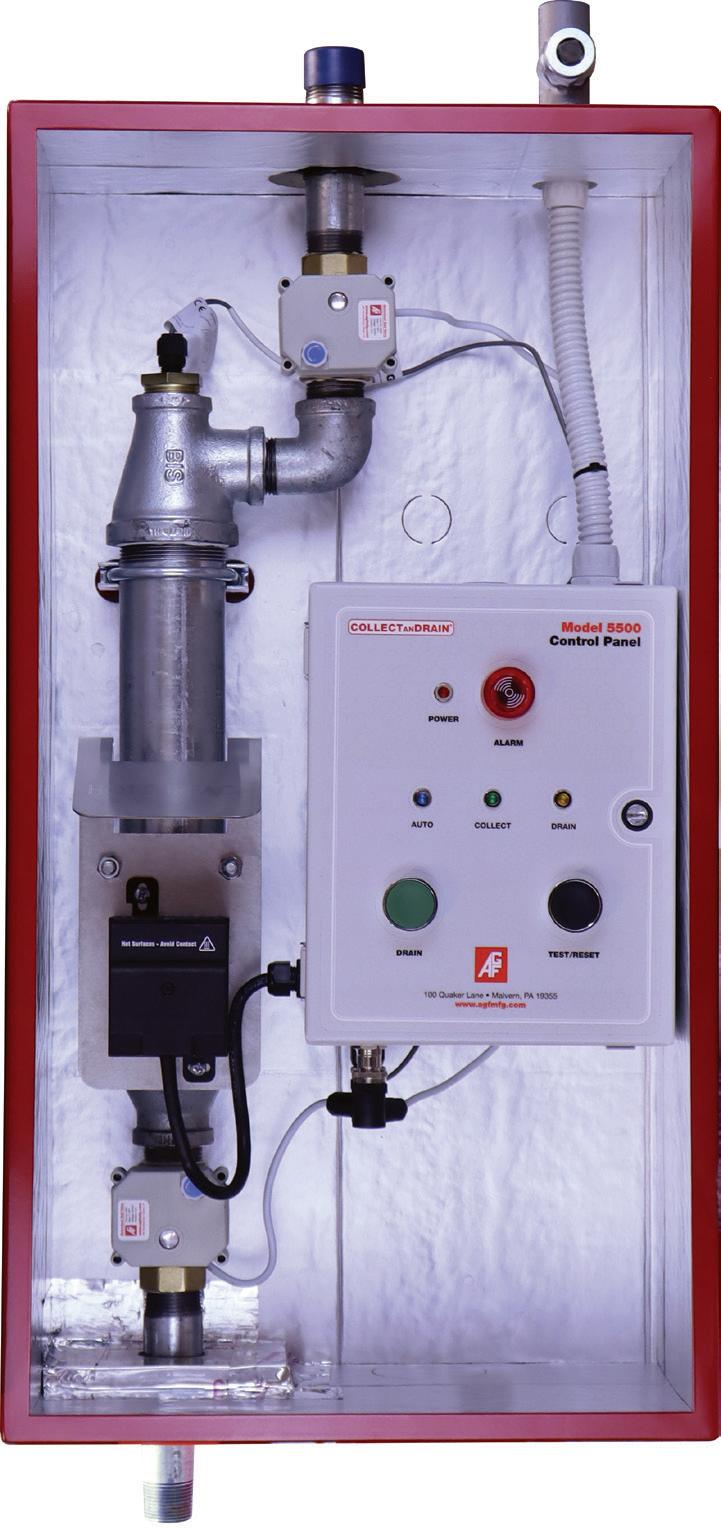


The COLLECTanDRAIN Model 5500 prevents system freeze ups by enclosing the dry fire sprinkler system’s auxiliary drain in a temperature controlled environment, and it features automated supply and drain valves that automatically maintain the auxiliary drain according to NFPA 13. Install them now and be ready for winter!
KEVIN HALL, M.ENG., P.E., ET, CWBSP, PMSFPE | AMERICAN FIRE SPRINKLER ASSOCIATION
The 2025 edition of NFPA 13, Standard for the Installation of Sprinkler Systems , introduces key updates to the hydraulic calculation requirements for supplemental sprinklers. These sprinklers, installed under obstructions, ensure adequate water distribution when ceiling-level sprinklers are blocked by wide obstructions below. The new requirements clarify when and how these sprinklers should be included in system calculations, preventing unnecessary overdesign while maintaining fire protection effectiveness.
NFPA 13 specifically defines a supplemental sprinkler as “a sprinkler that is installed below an obstruction.” While this definition could be broadly applied to many sprinklers in a layout based on their positioning, the intent is to apply the requirements for supplemental sprinklers that are added below wide obstructions completely below the level of the sprinkler deflector, and there is full coverage above from the sprinklers installed at the ceiling level. It is not the intent to apply these requirements to sprinklers added below obstructions at the ceiling level to account for sprinkler discharge pattern development.
For the characteristics of the sprinkler itself, the layout technician has more options. Regardless of the type of sprinklers installed overhead, the supplemental sprinkler is only required to have a fast-response thermal element and be ordinary temperature rated. It is preferred that they match K-factor and orientation of the ceiling sprinklers, but it is not necessary if the supplemental sprinklers are calculated. If another sprinkler makes sense based on hydraulics or economics, it can be used as long as it is calculated.
As stated in previous editions of NFPA 13, it is not the intent to calculate supplemental sprinklers when the sprinkler matches the characteristics of the ceiling sprinklers and the piping supplying the supplemental sprinklers matches the sizing pattern of the branch lines. Where differing characteristics are necessary or desired, the supplemental sprinklers need to be calculated. NFPA 13 now clearly states that when the supplemental sprinklers are calculated, they are calculated separately and independently from the sprinklers installed

Discharge requirements for supplemental sprinklers are based on the hazard directly below the obstruction. This can benefit the designer, allowing them to use less restrictive discharge criteria for lower ceiling elevations.
at the ceiling level overhead—no balancing. This allows for more flexibility when designing systems with supplemental sprinklers.
If the piping configuration does not match the branch line sizing pattern, hydraulic calculations must be conducted to confirm that pipe sizes can adequately support the supplemental sprinklers. To calc or not to calc? Prior editions of NFPA 13 fell short after this simple guidance. How many supplemental sprinklers do you calculate? What is the design area? The number of supplemental sprinklers included in the calculation depends on the arrangement of sprinklers under the obstruction, and the standard offers two options:
1. If there is a single line of supplemental sprinklers, calculations must include four adjacent sprinklers on the same branch line. 2. If there are multiple lines of supplemental sprinklers, calculations must include two sprinklers on two separate branch lines.
The next missing piece of information is the area of coverage of the supplemental sprinkler. In density/area-based applications, the area of coverage for each supplemental sprinkler must only include the footprint of the obstruction it protects. This prevents the calculation from incorporating unnecessary coverage areas beyond the obstruction, as the supplemental sprinklers are only intended to operate when there is a fire directly below the wide obstruction; otherwise, the ceiling-level sprinklers provide adequate protection.
The discharge criteria are simplified even further by only requiring the hazard directly below the obstruction to be considered.
For density/area applications, the design must comply with section 19.5, which defines water density requirements based on hazard classification. While there probably isn’t a different occupancy classification in such a small space, the benefit of this requirement is that it permits ceiling height to be considered at the bottom of the obstruction. This could allow for other adjustments, but it is probably more beneficial when you consider the storage application. If Control Mode Specific Application (CMSA) or Early Suppression Fast Response (ESFR) sprinklers are used as supplemental sprinklers, their discharge pressure must comply with section 20.16.4, ensuring their proper function within the system. Again, that discharge pressure would be based on a lower ceiling height at the bottom of the obstruction which could decrease the hazard. As an example, an ESFR system protecting 15 ft of storage in a 30 ft building requires a minimum end-head pressure of 52 psi for K-16.8 sprinklers. If sprinklers were installed below a wide obstruction with the bottom of the obstruction only at 25 ft, the minimum end-head pressure for K-16.8 sprinklers could be reduced to 35 psi allowing for smaller pipe sizes to be used.
Beyond the hydraulic calculation requirements, the 2025 edition of NFPA 13 introduces additional installation requirements for supplemental sprinklers based on the shape and orientation of the obstruction. If supplemental sprinklers are installed under non-flat, non-solid obstructions, beyond the edge of an obstruction, or under open grating, they must be intermediate-level
rack-type sprinklers or provided equivalent protective measures to prevent cold soldering. While NFPA 13 did provide definitions for non-flat and non-solid obstructions, most designers should be able to figure that one out on their own.
The 2025 edition of NFPA 13 refines the requirements for supplemental sprinklers, clarifying when they should be included in hydraulic calculations and how many should be considered. Remember—NFPA 13 provides guidance in the annex that newer editions of the standard should be permitted to be used, in their entirety, through equivalency. Designers who take advantage of the technologies and methodologies in newer editions can design more efficient, codecompliant sprinkler systems that effectively address obstructions—and other issues—while avoiding excessive hydraulic complexity. n
ABOUT THE AUTHOR: Kevin Hall, M.Eng., P.E., ET, CWBSP, PMSFPE, is the director of engineering for AFSA. He is a member of several NFPA technical committees responsible for developing the model codes and standards, including NFPA 1 Fire Code, NFPA 13/13R/13D, NFPA 20, NFPA 25, and NFPA 200. Hall also represents AFSA on numerous UL technical committees responsible for revising and maintaining the product standards used in the sprinkler industry. He is a registered professional engineer in Delaware and Maryland, NICET III certified in water-based system layout, a certified water-based system professional through NFPA, and a professional member of the Society of Fire Protection Engineers (SFPE). He earned his Bachelor of Science and Master of Engineering degrees from the University of Maryland, College Park, in fire protection engineering. In 2021, he was recognized as one of SFPE’s “5 Under 35” award recipients. Prior to his association and committee work, Hall worked for Reliance Fire Protection in Baltimore, Md., as a project manager overseeing projects of various sizes and complexity.
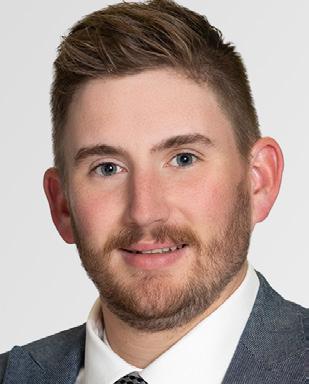

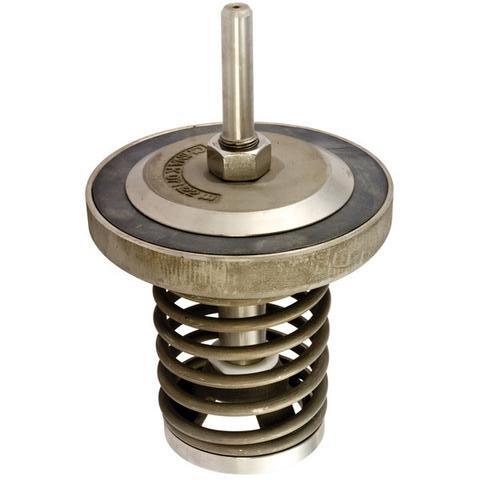
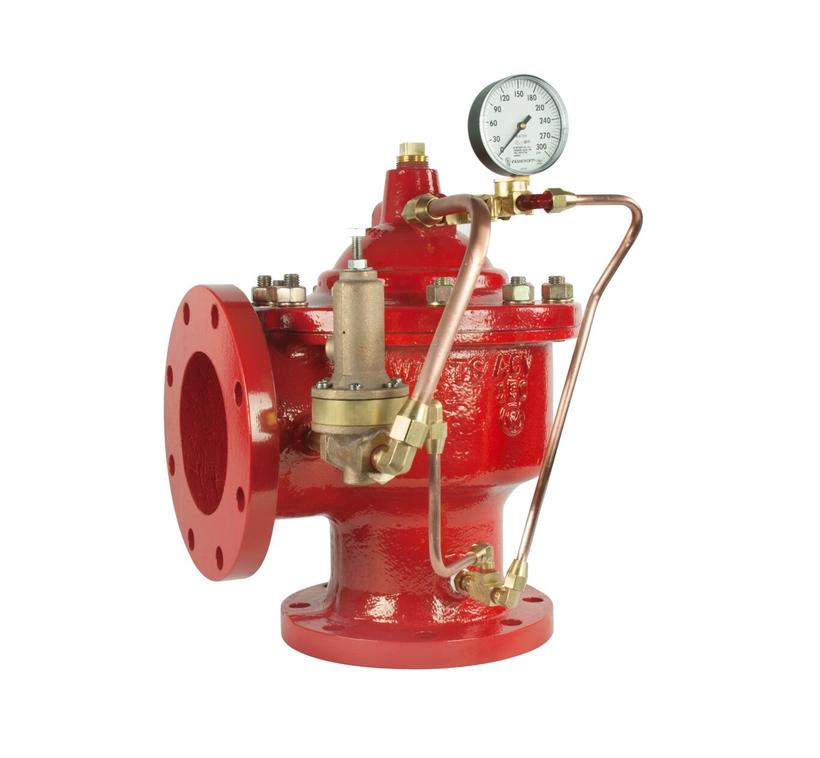
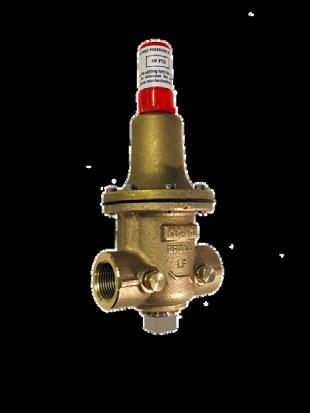

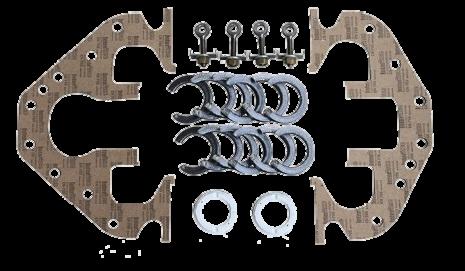


Seven of the nation’s top apprentices will compete in the 32nd National Apprentice Competition (NAC) during AFSA44: Convention, Exhibition & Apprentice Competition, Oct. 15-18 in Washington, D.C. These finalists will put their skills to the test with a written and hands-on competition vying for cash prizes and national recognition. Showcasing the best talent in the fire sprinkler industry, this exciting event is one you won’t want to miss!
The National Apprentice Competition (NAC) was started in 1994 by the late Robert (Bob) L. McCullough, then chair of the Apprenticeship & Education Committee. The NAC was created to promote apprentice training and recognize apprentices who are actively enrolled in the AFSA Apprenticeship Program.
Eligibility for apprentices to compete is based on the following criteria: their employer must be a member of AFSA in good standing, the apprentice must actively be participating in the AFSA apprenticeship courses or enrolled in the NCCER/AFSA Fire Sprinkler Fitting Training Series, and they must have at least one year of field experience with a minimum of six months combined hands-on experience in cutting, threading, and installing steel pipe and CPVC pipe. The first competition phase consists of a

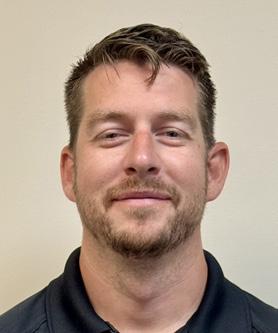
100-question multiple-choice exam provided by AFSA. The test is proctored online, making it accessible to contestants from all 50 states. The results of this test will determine who will go on to participate in the live competition at AFSA44.
The top seven apprentices in Phase I receive: a full registration to the convention and a second full registration for their employer; an expense-paid trip to AFSA44; hotel accommodations; and a brand-new set of hand tools to use in Phase II.
Phase II entails a more thorough written exam given at the convention, followed by a live practical installation in the exhibition hall. The Phase II exam is based on all four levels of the AFSA/ NCCER Contren® Learning Series Sprinkler Fitting curriculum. For the installation, apprentices must cut, thread, and install a steel and CPVC piping system with sprinkler heads and perform a water pressure test. Participants are graded on accuracy, craftsmanship, and safety. The combined results of the Phase II written and hands-on tests determine the winner. Prizes are awarded based on finishing rank: first place takes home a $10,000 cash prize, second place receives $7,500, third place receives $5,000, and all other finalists receive $2,500.
Seven of the nation’s top apprentices are heading to Washington, D.C, where they’ll compete on a national stage at

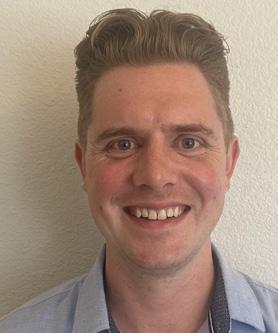
AFSA’s annual convention. Who will take home the grand prize and bragging rights? Sprinkler Age caught up with each finalist for a quick Q&A so you can get to know them before they hit the competition floor.
Leona Ball, Piper Fire Protection, FL
What’s your favorite part about the work you do? My favorite part is working with my hands and using tools to build fire sprinkler systems.
If you had a superhero power on the jobsite, what would it be? If I had a superhero power, it would be flight, so I can hang pipe without using lifts and ladders.
Stephen Dolan, Rieve Fire Protection, CT What advice would you give someone thinking about entering the fire protection trade? When you first start, your job is to make everyone else’s job easier and more efficient. Ask questions as you go, don’t try to be an expert.
What does the future of the industry look like to you? I see the maintenance side of things exploding in the next few years as AHJs implement automation to track and enforce deficiency solutions.
Raul Larios, Hiller Companies, CA
What’s the key ingredient to your success? My family. They always drive me and motivate me to better myself for them. They’re pushing me towards being successful.
What’s something you’ve learned in this trade that surprised you? The amount of people who don’t even know what a fire sprinkler is.
Christopher Redman, J.G. Tate Fire Protection System, Inc., CA Why did you
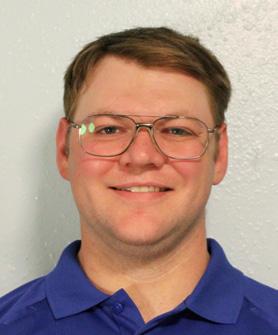
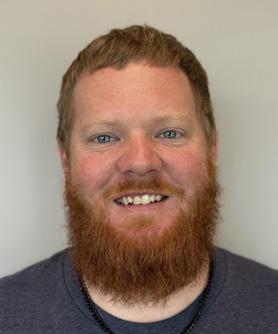

choose to pursue a career in fire protection? After being a firefighter, I loved putting fires out and wanted to do life-saving work. What advice would you give someone thinking about entering the fire protection trade? To remember you are doing life-saving work and don’t cut corners.
Corbin Rogers, Rapid Fire Protection, Inc., SD What’s your favorite part about the work you do? Besides saving lives, one of the main things I enjoy about the fire sprinkler industry is the puzzle of installing systems. Things like what is the best way to install this system or what rules and codes are applicable to what I am doing right now.
If you had a superhero power on the jobsite, what would it be? The power to communicate better. Information is power and being able to share ideas more effectively would be an incredible power to have.
Kyle Strickland, Marmic Fire & Safety, AR Why did you choose to pursue a career in fire protection? When I pursued this career, I was looking for a trade/ company that I could grow in. I take pride in my work and love seeing it operational.
What’s something you’ve learned in this trade that surprised you? I was surprised by all the different styles of systems and heads.
David Walencewicz, Impact Fire Services, CT What’s something you’ve learned in this trade that surprised you? One thing about working in this trade that surprised me is how tight-knit the fire protection community is.
What does the future of the industry look like to you? I envision our industry maintaining its unique, passionately dedicated work culture as it also advances and adapts to new technologies and infrastructures.
Get ready for an unforgettable showdown as the finalists go head-to-head in the nation’s capital in the heart of the exhibit hall at AFSA44. The excitement is building, and AFSA44 is bursting at the seams with education, training, and non-stop FUN. Whether you’re there to learn, network, or just soak it all in, there’s something for everyone. For more details and to register, visit firesprinkler.org/AFSA44. n
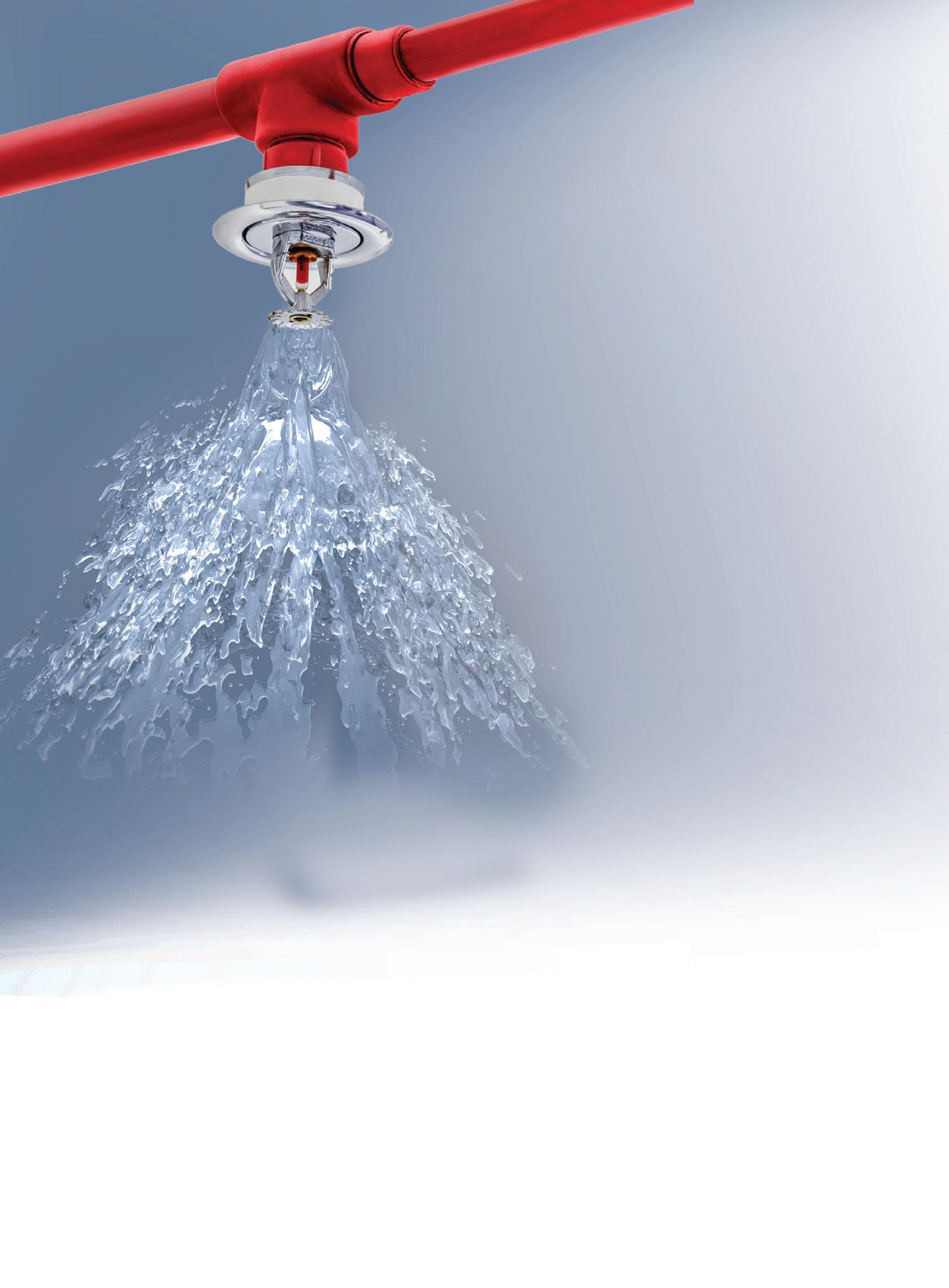


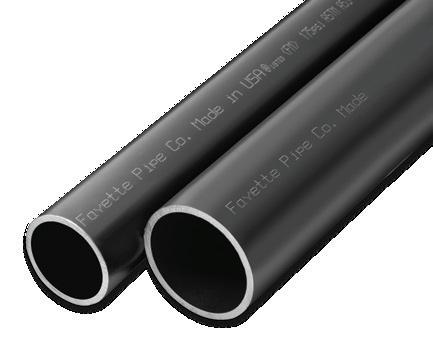
Fayette Pipe delivers with 100% hydrotested, American-made and melted pipe crafted by a veteran- and family-owned company.
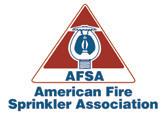




BOB CAPUTO, CFPS | AMERICAN FIRE SPRINKLER ASSOCIATION
For a few years now, I’ve been banging the drum, trying to convince others that we need to recognize an occupation for inspection and testing, separating it from installation as a matter of training and practice. What do I mean by that? It’s long been the practice of fire sprinkler contractors, whether signatory or open shop, to assign fitters to perform inspection and testing activities. I believe this is wrong and opens contractors up to serious liabilities.
[Your Company Letterhead]
[Date]
U.S. Department of Labor c/o AFSA
1410 E Renner Rd., Suite 150 Richardson, Texas 75082
RE: Letter of Commitment for an ITM Apprenticeship Program
Let’s compare this to automobile manufacturing and maintenance work. If I work on the assembly line at Ford or General Motors, building cars and trucks, does this qualify me as a service mechanic for those vehicles? Obviously no, because there is much more to ensure the safe functionality of the car than just knowing my part of the assembly process. The same is true for fire sprinkler systems.
Let’s consider experience and regional knowledge. Fitters in southern California, southern Florida, and other warm-weather
states install many wet pipe systems. Still, aside from coolers or freezers, they do not install many dry-pipe, pre-action, or deluge systems. I didn’t say they don’t see any of them, but surely not as many or as often as sprinkler fitters in Minnesota or Iowa. How about fire pumps? When I was a fire sprinkler contractor in San Diego, we installed systems in six-story buildings downtown without needing a fire pump. The water pressure in parts of San Diego County needs pressurereducing valves because the pressure is very high. Fitters in this region have installed very few fire pumps, unlike their counterparts in many other parts of the nation. Of course, the same can be said of inspection and testing opportunities, but in the course of a year’s worth of work, a dedicated inspector will see many more sites and conditions than would a fitter on construction sites.
[Your Company Name] is pleased to offer its full support for the proposed Inspection Testing, and Maintenance (ITM) Apprenticeship Program being developed by the American Fire Sprinkler Association (AFSA). We believe this program is a vital step toward developing a skilled talent pipeline for the fire sprinkler industry in the [Your City/Region] area.
As a leading employer in this region, we have identified a significant shortage of skilled ITM inspectors and technicians. We have been actively involved in developing the curriculum and standards for this program, and we are confident that it will produce highly qualified workers. We project that our company will have approximately [Number] openings for ITM inspectors and technicians in the next [Number] years. We commit to hiring graduates of this program and providing them with high-wage opportunities.
Our commitment to this program includes:
• Providing [Number] paid on-the-job training slots for ITM program apprentices.
• Allowing company mentors to assist with curriculum development and apprentice supervision.
• Donating [materials/equipment] to support the hands-on training component.
We are eager to continue our partnership with AFSA and the Department of Labor to ensure the success of this initiative. This investment will not only benefit our company but will also provide excellent career opportunities for local residents. Thank you for your consideration.
Sincerely,
[Your Name], [Your Title] [Your Email Address]
Inspection and testing of fire sprinkler systems should be a separate, stand-alone job because they require a distinct knowledge base and utilize a different set of rules. Specifically, NFPA 13 provides rules for designing and installing fire sprinkler systems. In contrast, NFPA 25 provides the requirements for inspection, testing, and maintenance of those and other water-based systems. NFPA 25 explicitly states that it is not the standard’s intent to have the inspector verify the adequacy of the installed system. The standard is based on a wear and tear approach to inspection and testing. It does not intend for the technician to have the knowledge base to determine if a system is installed correctly, designed for the current building use, or adequate for the current storage use or products. Nothing in the sprinkler fitter apprenticeship program prepares or trains fitters to perform inspection and testing activities. However, the knowledge of the equipment and system components can provide a great foundation.
Even if the training was modified to train sprinkler fitters to perform required inspections, few fitters spend enough time away from contract work to be knowledgeable or practiced enough to be effective and limit their employers’ liability. Moreover, let’s talk about the lack of manpower in our trade, as it has been in all construction trades.
We all know our industry needs to attract more people at every level. This is especially true for qualified layout technicians, fitters, and inspectors. Many contractors tell us they could book more work if they could find more skilled people. Identifying inspectors in their own role will aid our industry and relieve some pressure on the need for more fitters. Inspection and testing do not require a four-year apprenticeship program to create qualified or certified workers. For starters, more wet pipe systems are installed than any other system type, and it doesn’t take more than six months to a year to train on these requirements. The NICET (the National Institute for the Certification of Engineering Technologies) water-based ITM Level 2 certification requires a candidate to have only two years of practical experience to sit for that test. The Level 3 certification requires five years of experience, which allows newly minted inspectors to work toward performing necessary inspections and testing on more complex systems, including dry-pipe, deluge, pre-action, fire pumps, and special hazard systems.
This role will attract more females, who currently only represent 3.1% of sprinkler fitters,¹ and others to the workforce, who may not be interested in pulling wrenches thirty feet in the air on a hot summer or cold winter day. Since most inspection and testing roles involve a lot of customer service interaction and are performed in existing, occupied buildings, the role will appeal to people who may be aging out of traditional installation roles, along with people from other service trades.
Unless you have been wearing blinders these past few years, many of the industry’s largest contractors have been focused on recurring revenue streams. Building their business book on inspection and testing while steering away from new construction projects. The consolidation, mergers, and acquisitions activities pervasive over the past
few years have offered much greater multipliers on recurring revenue streams than on the limited value of non-recurring revenue realized by a limited backlog of new construction work. It makes sense to the investment market, and our industry should read the tea leaves and respond to the trends by providing the workforce needed to meet the demand.
So, seriously. Our industry must create a new occupation category with well-trained, certified inspection and testing technicians. AFSA has been working toward getting the U.S. Department of Labor (DOL) to recognize this as its own occupation and create a DOL-approved apprenticeship program. Surprisingly, our application was
rejected the first time we submitted it. The process took over a year, and we are resubmitting the application with more support for the concept from the contracting community. If you agree with the need to recognize inspectors in our industry as a specific occupation, write a letter in support (see sample). Letters in .pdf form can also be emailed to valentine@firesprinkler.org. n
REFERENCES:
¹ “Sprinkler Fitter Demographics and Statistics in the US”, Zippia The Career Experts, zippia.com/sprinkler-fitter-jobs/ demographics, January 8, 2025.
ABOUT THE AUTHOR: Bob Caputo, CFPS, is president of AFSA.
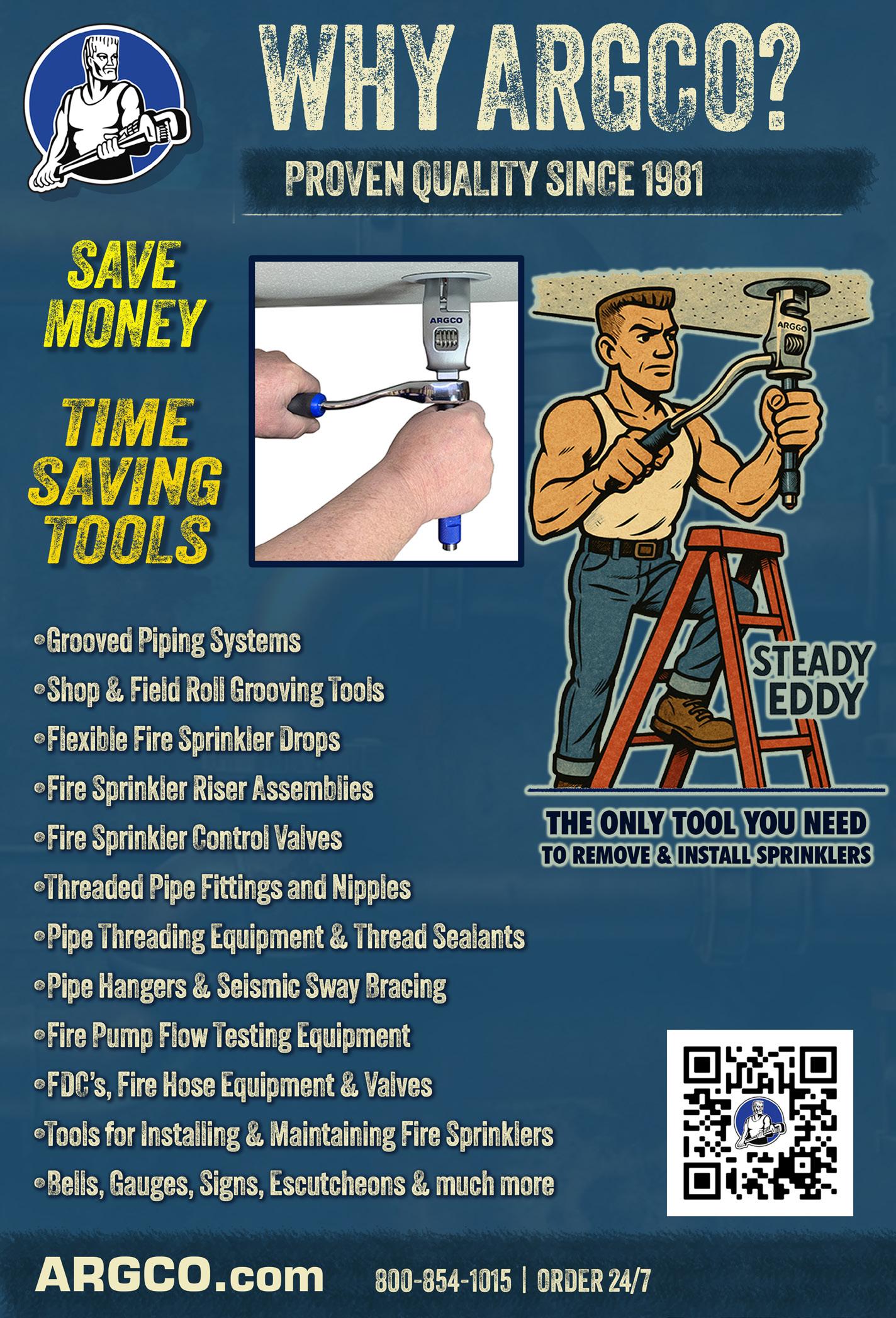
On April 8, 2025, the Virginia Chapter of the American Fire Sprinkler Association (AFSA) conducted a board and members’ meeting at the Academy at Virginia Randolph located in Glen Allen, Va., to celebrate the grand opening of the new fire sprinkler lab and fire sprinkler curriculum at the school. The chapter meeting was a great success with 48 attendees and a delicious lunch expertly prepared by the HCPS culinary students.
Mac Beaton, director of workforce and career development, and Bev Cocke, M.Ed., administrative coordinaor of workforce development for Henrico County Public Schools (HCPS) presented a PowerPoint presentation on the genesis of the fire sprinkler lab and future projects moving forward with the chapter and HCPS. Virginia Chapter Board Member Mary Catherine Coyle, social media chair, prepared an excellent presentation on “How to Retain Employees” that was well received by the meeting attendees.
The fire sprinkler lab has active alarm, dry, pre-action and deluge valves for the students to use in training exercises during the semester. In addition, chapter vendor members donated an air compressor, backflow preventor, PRV valves, a fire alarm panel and a fire pump for additional training. Henrico County Public Schools also built out a glass-walled separate wet room with a large drain for the students to activate different types of fire sprinkler heads.
Jeff Lewis, chapter second vice president and education and apprentice chair led the effort with Beaton and Cocke to make these public private endeavors come to life. Lewis set this wildfire in a board meeting nearly four years ago and we have been trying to contain it ever since. We are looking forward to the next flare up!
Henrico County Public Schools approved and implanted a fire sprinkler curriculum that started last semester with four students and there are already 17 signed up for 2025-2026 school year. The new HCPS fire sprinkler program is utilizing the National Center for Construction and Education & Research (NCCER) sprinkler fitting training books for the instruction.
Chapter member Atlantic Constructors, Inc. provided an instructor to teach the class. Derek Zane has 25 years in the sprinkler industry as a new construction foreman and senior ITM technician. He brings his vast experience and enthusiasm to teach the next generation of sprinkler fitters and technicians.

The chapter is looking forward to providing the membership with opportunities to hire HCPS NextGen students for internships, part-time positions while in school, and eventually signing them on to full-time positions on HCPS Letter of Intent Signing Day.
The chapter greatly appreciates members who donated their time and talents for the HCPS fire sprinkler lab: Atlantic Constructors, Inc., Brooks Equipment Company, Ferguson Fire and Fab, Fire Pro, Inc., Johnson Controls, Inc., Reliable Automatic Sprinkler Company, Inc., VSC Fire & Security, Victaulic Company, Viking SupplyNet, and Zurn Industries. n

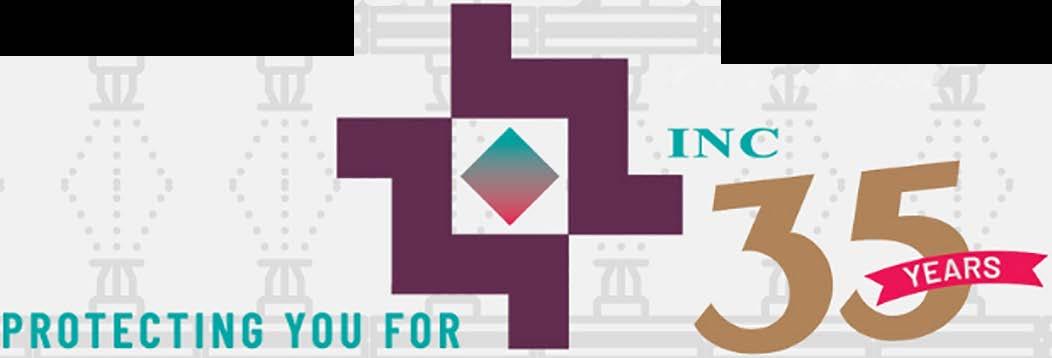
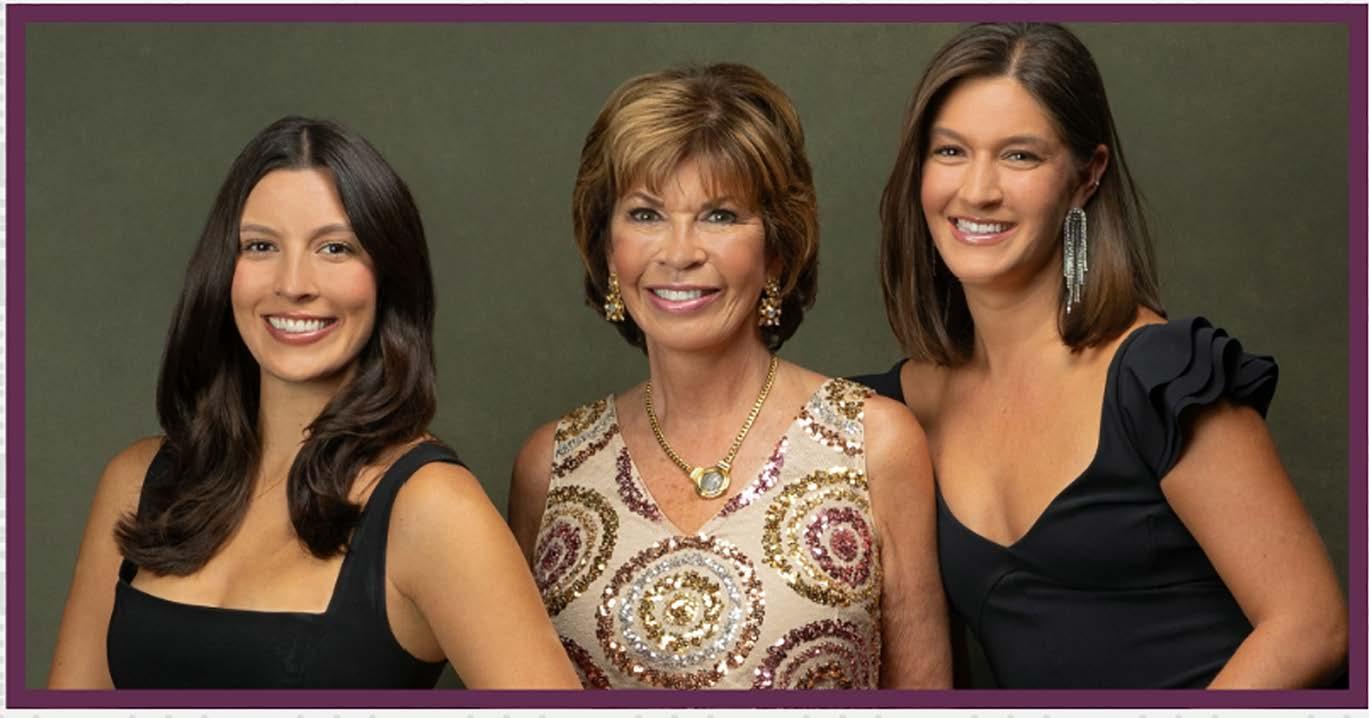
As a woman-owned business and having two young, goal-oriented women as p a r t of Fire Tech Systems and the fire sprinkler industry gives me hope for the next generation. I know that Emily and Nikki will create their path and engage i n amazing things at Fire Tech Systems and within our Industry. Pride and elation abound.

35 years and my greatest accomplishment yet has come to fr uition. My daughters, Emily and Nikki, have joined Fire Tech Systems. In 2023, Nikki joined me as the Director of Business Development and Manager of the Oxford, MS Branch office. T his year Emily joined us as Inspection Sales & Development, along with managing the new Texarkana, TX Branch.
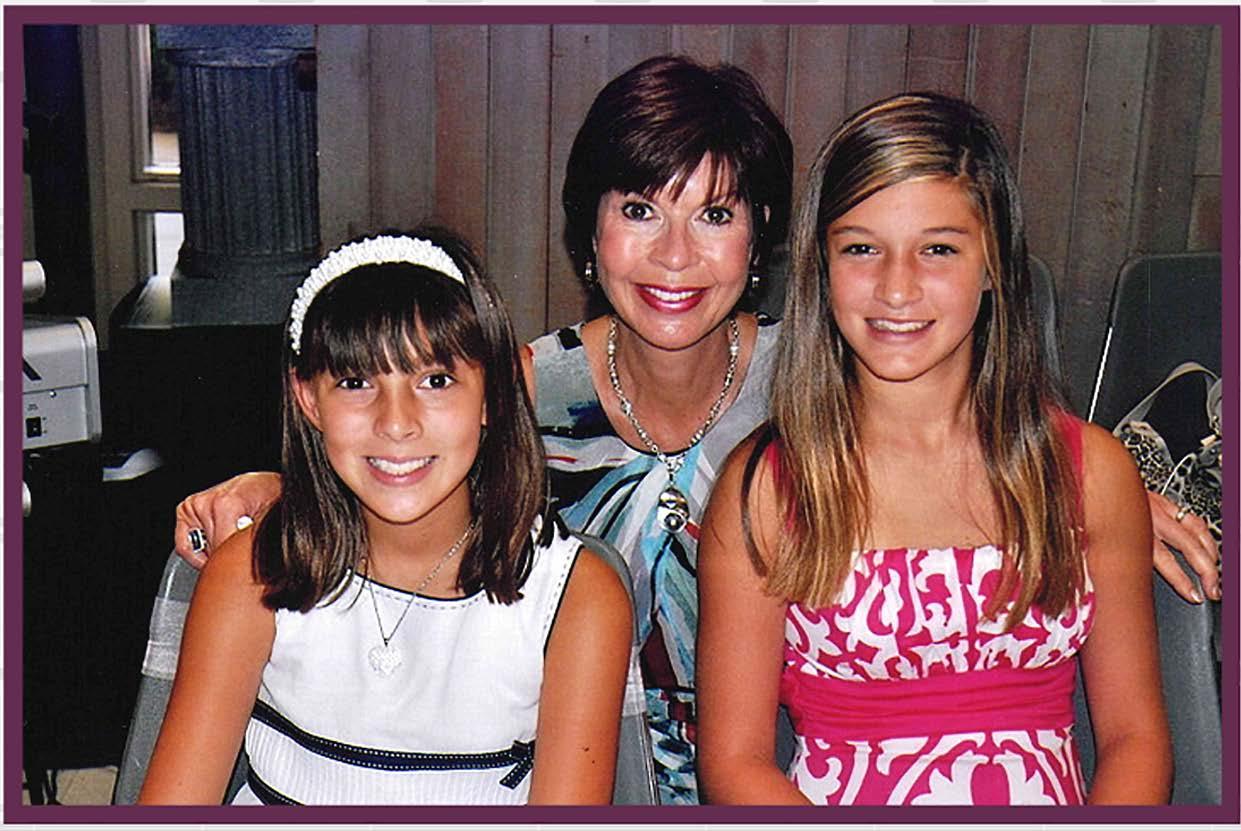


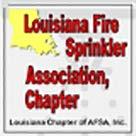
1st Female Board Chair 2024-2025 1st Female Vice Chair 2022-2023 40th Convention Chair 2020-2021
- Board Chair 2022-2023 NFPA- 232 Committee Member LFSA- Past President, President, and Founding Member -Shreveport, LA 4 -Monroe, LA -Oxford, MS Locations -Texarkana, TX
CHRIS KACHURA, P.E. | VSC FIRE & SECURITY, INC.
NFPA 13, Standard for the Installation of Sprinkler Systems , first included Early Suppression Fast Response (ESFR) sprinklers in its text in the 1989 edition. Its installation requirements were first introduced in section 9-3.3.1.2 of the 1989 edition, and it had a requirement of 1/ 4 in. per foot maximum roof slope requirement, not just for ESFRs, but for all methods of storage protection . Between the 1989 edition and the 1999 edition of NFPA 13, the slope requirements fluctuated before landing on the 2 in 12 slope, where it has remained since the 1999 release . Limiting warehouses to 2 in 12 has placed a constraint on the flexibility of warehouse design and construction. With the release of the 2025 edition of NFPA 13, that slope maximum has expanded to 4 in 12, which will provide greater flexibility in this design and construction process. The intent of this article is to look at these new slope considerations and the rules that apply when faced with these new options.
The road to the introduction of the 4 in 12 slope inclusion in the 2025 edition of NFPA 13 started with an indepth study by the Fire Protection Research Foundation (FPFR). The FPRF is an independent research affiliate of NFPA that was formed in 1982 to support the growing need for research that better informed the expanding body of NFPA codes and standards. In January 2016, the FPFR released its first report on sloped ceilings for ESFR, CMSA, and CMDA sprinklers entitled “Protection
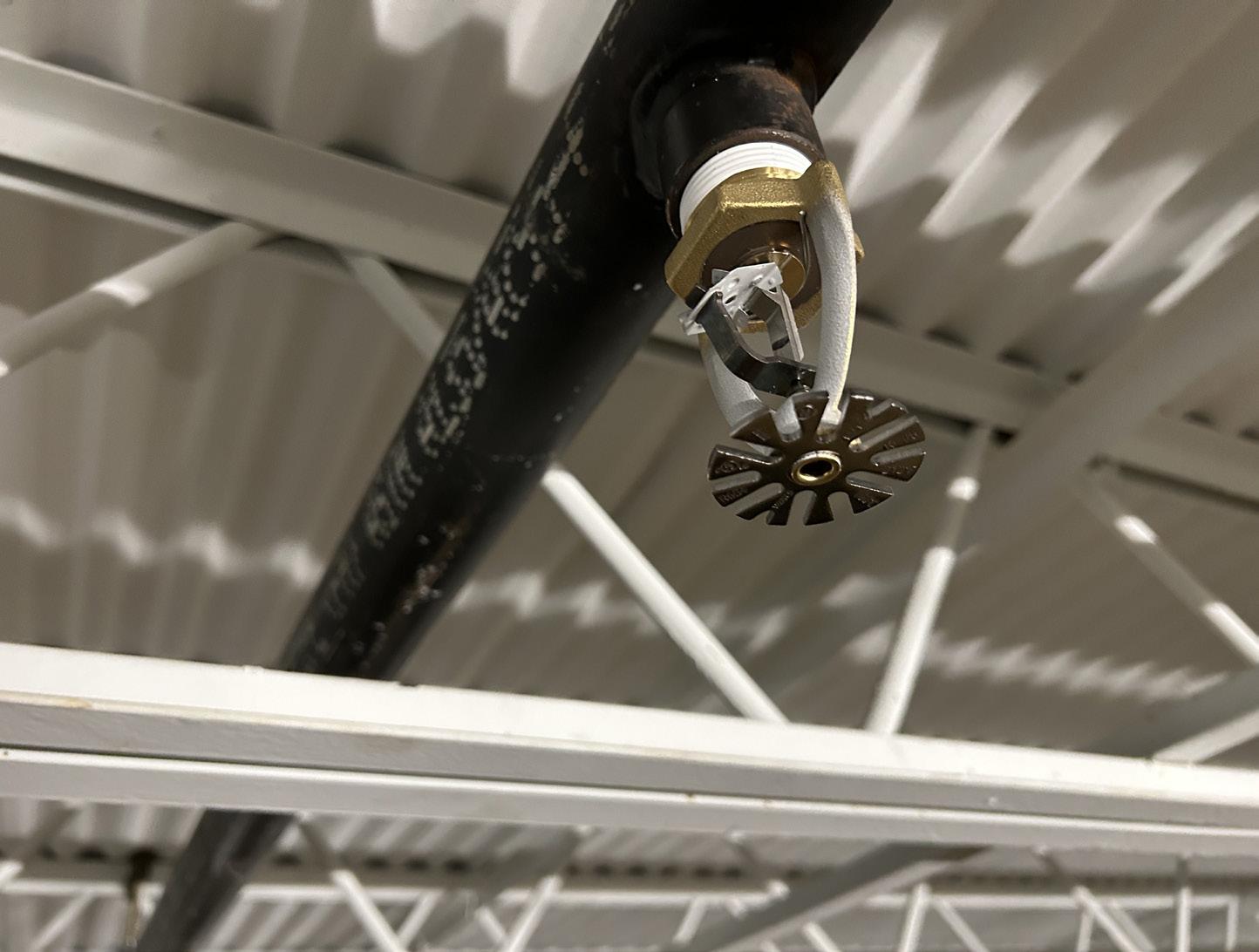
of Storage Under Sloped Ceilings – Phase 1.” This was followed in October 2017 with its second report entitled “Protection of Storage Under Sloped Ceilings – Phase 2 – Test Matrix,” and a November 2017 report entitled “Protection of Storage Under Sloped Ceilings – Phase 2 –Measurement of Sprinkler Spray Patterns and Impingement Near Sloped Ceilings.” These reports include the test information that formed the basis for the 2025 edition of NFPA 13 new rules for sloped ceilings. These reports can be found online at nfpa. org/education-and-research/research/ fire-protection-research-foundation/ projects-and-reports/protection-of-storageunder-sloped-ceilings.
The new design requirements for storage under sloped ceilings can be found in section 20.9.1 of NFPA 13.
Section 20.9.1 still limits storage protection to a 2 in 12 slope except for the criteria listed in section 20.9.1.1. These protection requirement options are as follows:
1. In-rack sprinkler protection in accordance with one of the options in section 25.7, with no storage to be placed above the highest level of in-rack protection.
2. An installed horizontal false ceiling below the sloped ceiling that is capable of withstanding a 3 lb/ft² uplift force. False ceiling to have sprinklers installed in it.
3. Sprinklers to be installed per chapters 20 through 26 guidance, where slopes exceeding 2 in 12 are allowed.
4. Where the ceiling is obstructed, construction and it does not exceed 4 in 12 storage, shall be protected with a CMDA sprinkler approach and shall require sprinklers in every channel.
5. Where the ceiling is unobstructed construction and the slope does not exceed 4 in 12, storage shall be protected with a 50% increase in the design area requirements of chapter 20 through 26 for sloped ceilings.
6. Where the ceiling is obstructed construction, and it does not exceed a 4 in 12 slope, sprinkler system criteria specified in chapters 20 through 26 shall be used when all of the following criteria are met.
a. Purlins or beams for the roof framing run across the roof slope.
b. 18 in. maximum depth for the purlins or beams.
c. 5 ft or less on center for the purlins.
d. 40 ft on center maximum for bays created with solid structural members.
e. Blocking above each structural member is provided for purlin or beam channels.
CMSA sprinkler installation under a 4 in 12 maximum slope is addressed in section 13.2.6.1.2.3 of the 2025 edition of NFPA 13. This section is limited to obstructed construction only, with less than or equal to 50% of the ceiling structure open. This open consideration has to do with the structural members and the pockets that they create. This is important to the activation of the sprinklers. The intent of CMSA and ESFR sprinklers is to localize the sprinkler activation to the area over the fire to deliver the water discharge in the most effective manner. When the ceiling is to open, heat is allowed to roll up the slope, allowing heads outside of the fire area to activate. Per section 13.2.6.1.2.3, sprinkler installation shall be arranged in one of the two following arrangements:
1. Sprinklers shall be installed in each individual channel created by the roof structure and shall have a deflector depth below the ceiling/roof deck of 6-in. minimum and 12-in. maximum.
2. When channels are created by the roof structure by maximum 12-in. deep members and the channel volumes do not exceed 300 ft³, CMSA sprinklers shall be installed at a maximum 6 in. below the bottom of the structural member.
Section 13.2.6.1.2.4 states that CMSA installations where the slope is greater than 1 in 12 under obstructed construction with greater than 50% open structure shall be installed per the requirements of unobstructed construction, which is addressed in 13.2.6.1.1. It is important to remember that per item 5 in section 20.9.1.1, the design area for all ESFR design schemes is addressed in chapters 20 through 26. This 50% increase is due to the additional heat that may roll up the sloped ceiling, activating additional sprinklers.
ESFR sprinkler installation under a 4 in 12 slope is addressed in section 14.2.9.1.2.3 of the 2025 NFPA 13. Like the CMSA section, it is limited to less than or equal to 50% open for the ceiling structure for obstructed construction. Per section 14.2.9.1.2.3, sprinkler installation shall be arranged in one of the two following arrangements:
Sprinklers shall be installed in each individual channel created by the roof structure and shall have a deflector depth located below the ceiling/roof structure in accordance with 14.2.9.1.1, which states that K-14, K-16.8, K-25.2, and K-33.6 pendant sprinklers shall have their deflectors positioned a minimum of 6 in. and a maximum of 14 in. below the ceiling/roof deck.
When channels are created by the roof structure by a maximum 12-in. deep members running perpendicular to the ceiling slope, and the channel volumes do not exceed 300 ft³, ESFR sprinklers shall be installed at a maximum 6 in. below the bottom of the structural member.
Section 14.2.9.1.2.4 states that ESFR installations where the slope is greater than 1 in 12 under obstructed construction with greater than 50% open structure shall be installed per the requirements of unobstructed construction, which is addressed in section 14.2.9.1.1.1 It is important to remember that per item 5 in section 20.9.1.1, the design area for all
CMSA design schemes is addressed in chapters 20 through 26. For ESFR sprinklers, this will require the design area to include 18 heads as opposed to the standard 12-head calculation. The 18-head calculation arrangement is addressed in NFPA 13 section 28.2.4.4.1 and requires five heads on three branch lines and an additional three on the next line.
In addition to these changes for ESFR and CMSA sprinklers, the method of deflector orientation has been changed for slopes over 2 in 12. NFPA 13 has long required the sprinkler deflector to be aligned parallel to the slope of the ceiling. This requirement still exists for all slopes less than or equal to slopes of 2 in 12. However, NFPA 13 section 9.5.4.3 (3) indicates that for sloped ceilings exceeding 2 in 12 in storage occupancies, the deflector must be aligned parallel to the floor.
In conclusion, in the past, NFPA 13 has limited the installation of storagerelated sprinkler systems to buildings with a slope equal to or less than 2 in 12. In doing so, it has placed a constraint on the flexibility of warehouse design and construction. With the release of the 2025 edition of NFPA 13, the maximum slope allowed has expanded to 4 in 12, which will provide greater flexibility in the design and construction process of these storage occupancies. The new rules for both ESFR and CMSA sprinklers give a new set of tools for designers and design professionals to handle potential changes in new construction and modifications to existing buildings that in the past did not meet construction requirements for storage applications. n
ABOUT THE AUTHOR: Chris Kachura, P.E., is the Senior Fire Protection Engineer for VSC Fire and Security, Houston, Texas. He has a Bachelor of Science in Mechanical Engineering and Physics from Texas Tech University, and multiple licenses with the Texas Fire Marshal’s Office. Kachura is a registered P.E. in the State of Texas, Alabama, Arizona, Arkansas, Colorado, District of Columbia, Delaware, Florida, Georgia, Indiana, Iowa, Kansas, Kentucky, Louisiana, Maryland, Massachusetts, Mississippi, Missouri, Nevada, New Jersey, New Mexico, New York, North Carolina, North Dakota, Ohio, Oklahoma, Oregon, South Carolina, Tennessee, Utah, Virginia, West Virgina, and Washinton State. He is a member of the NFPA 30, NFPA 30B, NFPA 33, NFPA 34, NFPA 101, NFPA 1142, and NFPA 5000 Technical Committees and a member of AFSA, NFPA, and SFPE.
One- and two-family homes present the greatest fire risk to residents and responding firefighters. Home fires can become deadly in as little as two minutes because of modern construction methods, synthetic materials and furnishings and emerging technology, such as the increasing use of lithium-ion batteries. Home fire sprinklers are the only technology that stop a fire from becoming deadly.
For years now, national NFPA and ICC codes have required sprinklers in all new one- and two-family homes. Unfortunately, that life-saving sprinkler requirement is readily being removed from local codes across the country. Powerful lobbying efforts and misinformation from the home building industry, coupled with claims that installing sprinklers is too costly are driving this anti-code strategy.
One reason their anti-code strategy works is that local decision makers don’t understand the bigger, longer-term picture for their constituents: what is the cost of not protecting new homes? Removing sprinklers from the codes encourages substandard homes to be built.
Decision makers need to consider that when fire strikes these unsprinklered homes there can be significant consequences. The real cost of a fire in a home that’s not protected with fire sprinklers far outweighs the cost of installing home fire sprinklers. The real costs could include death, injury,

displacement and property damage. There is also a community impact on firefighter health and safety and fire department resources.
The result? Every new home built without fire sprinklers threatens Community Risk Reduction (CRR) for decades.
Battling back with education and information is the solution. This past June, a strategic response to the challenge was presented at the NFPA Conference and Expo. The Home Fire Sprinkler Coalition conducted a panel discussion titled “Proven Strategies to Help Decision Makers Choose Home Fire Sprinklers.” Each panelist highlighted successful approaches used in their
communities that resulted in entire developments being protected. Key in this approach was offering developer incentives and strategies that prevented sprinklers from being omitted when codes were being updated.
Kevin Bergstrom, deputy fire marshal, Camas Washougal Fire Department, talked about how the home fire sprinkler requirement failed in his jurisdiction because of strong opposition from builders in 2003. The city council did support negotiating incentives working with developers. He said it was
important to meet with all stakeholders early in the planning stage, including planners, developers, city officials and real estate professionals. The incentives included higher density, single-access points, increased hydrant spacing and other trade ups. Camas also offered infrastructure flexibility, waived fees and allowed flow through passage purge systems to eliminate backflow valves. Bergstrom said over time, developers appreciated the benefits of incentives and recognized the added marketing value of their new homes being protected with fire sprinklers.
After 13 years of offering incentives, Camas passed the requirement and continued to offer the incentives.
Bergstrom said 98% of all new homes are now protected. Most important, there have been five documented sprinkler saves. Two were cooking fires; the others were an electrical fire, a spray combustion fire and a lithium-ion battery fire. The average cost to install fire sprinklers is $1.85/sprinklered ft 2 This year, Camas is celebrating a total of 5,000 homes protected with sprinklers. Neighboring Washougal also passed the requirement two years after Camas did. To view a short video about Camas protecting 5,000 homes, visit youtube. com/watch?v=MIrekK-6Wko.
Bob Sullivan, NFPA regional director, talked about how Las Vegas, Nev., one of the top housing markets in the country, worked with the local home builder association to identify and resolve concerns about a home fire sprinkler requirement. He said the builder association had valid concerns that could potentially slow down the development process, including plan reviews, permits, field inspections, water tap and supply line sizing issues and any other extras added to NFPA 13D or P2904 requirements. Other builder topics included trade ups to reduce costs, such as reductions in water supply requirements,
narrower streets or allowing sidewalks on one side of the street.
A Nevada statute required any governing body considering a residential sprinkler mandate in new construction less than 5,000 ft2 to perform a cost-benefit analysis. In 2017, the University of Nevada, Las Vegas, was commissioned by the City of Las Vegas Fire Department to perform such an analysis. The objective study determined there was a definite cost-benefit to homeowners and home builders. The UNLV report played an important role in the Las Vegas City Council passing the requirement, as did resolution of home builder association opposition. The ordinance took effect in 2019 as part of the 2018 International Codes. To date, more than 18,000 new homes have been built in Las Vegas with home fire sprinklers. The average cost to install home fire sprinklers is $.95/sprinklered ft2
The good news is an ordinance was passed; the bad news was the community wasn’t ready for it when it did. This could happen anywhere so Brittany Brown, chief of fire prevention, Leawood (Kan.) Fire Department, talked about the challenges she faced after a fire sprinkler requirement was passed in Commerce City, Colo. before all stakeholders had been informed or involved.
At the time, she was the division chief of prevention for the South Adams County Fire Department. She said the requirement was passed without enough planning, leaving too many questions that should have been answered before the requirement. There was a lack of standardized guidance, and the initial requirement passed as a P2904 only. It was later changed to all system types. This led to frustrated builders as installation was not meeting timelines and legal issues held up construction. Other questions included water line and meter size, backflow inclusion, how to achieve hydraulic calculations, which agency was doing plan review and who was collecting fees.
Chief Brown talked about her response to this challenge. The fire department worked to educate stakeholders with cost benefit analyses, how-to information and joint training. They conducted live burn demonstrations, including a live burn using a full-scale house. During this event, the homebuilders association was invited and more than 150 people attended to see these concepts in action. She said it was important to sell life-safety as a concept well enough to get the community to invest in their own self-preservation and truly see how fire sprinklers in homes are part of that.
The common theme from each panelist is the importance of information and strategic planning. HFSC has resources to help any community achieve these key objectives. Free tools help educate decision makers about why all new homes need to be protected with home fire sprinklers. The new HFSC online Community Impact Tool makes it easy for users to input their local data and information and create custommade, actionable insights for use in presentations to decision makers. This tool and other resources support the proven strategies discussed during the panel presentations. Protecting all new homes is often a grassroots issue with many challenges. Plan for that and turn to HFSC for its wealth of free resources to support the fire service as they advocate for home fire sprinklers. For more information, visit homefiresprinkler.org. n

ABOUT THE AUTHOR: Peg Paul is the founder/president of Peg Paul & Associates (PPA), a marketing communications firm that specializes in fire and life safety education and awareness programs. Paul has been the communications manager for HFSC since 1997, where she oversees the development and implementation of educational programs for members of the fire service, local officials, consumers, home building industry, real estate and insurance agents, water purveyors, and other targeted groups. Paul and her team have secured more than $10 million in Federal and corporate foundation grants. Paul serves on the board of the NFPA Research Foundation and the IAFC Life Safety Section. She served on the Phoenix Society for Burn Survivors board for 10 years. In 2023, Paul received the CFSI/IFSTA Dr. Anne W. Phillips Award for Leadership in Fire Safety Education. She was named AFSA’s 2014 Fire Sprinkler Advocate of the Year.
KARL WEIGAND, P.E. | VICTAULIC
Control-mode specific application (CMSA) and control-mode density area (CMDA) sprinklers are effective solutions to protect storage spaces, but often require supplementary in-rack sprinklers as building height rises above 30-40 ft. These supplementary in-rack sprinklers can create ongoing challenges in facility operations, including increased damage risk from forklifts and modification costs requiring contractor involvement every time owners reconfigure rack arrangements.
Early Suppression Fast-Response (ESFR) sprinklers offer ceiling-only protection that eliminates in-rack systems in most cases. ESFR systems allow building owners more flexibility when tenants change or storage needs evolve because they can protect a wide range of storage commodities, including Class I through IV and Group A plastics, with a single system design, unlike CMSA or CMDA sprinkler systems that are typically designed for specific hazards. However, both ESFR and CMSA sprinklers have more restrictive obstruction rules which can add to more difficult and expensive installation cost.
ESFRs are the best sprinkler option for protecting most storage situations. Until recently, NFPA 13 restricted ESFR sprinklers with strict obstruction and deflector positioning rules, forcing designers to abandon them for suboptimal solutions. Two NFPA 13, Standard for the Installation of Sprinkler Systems,
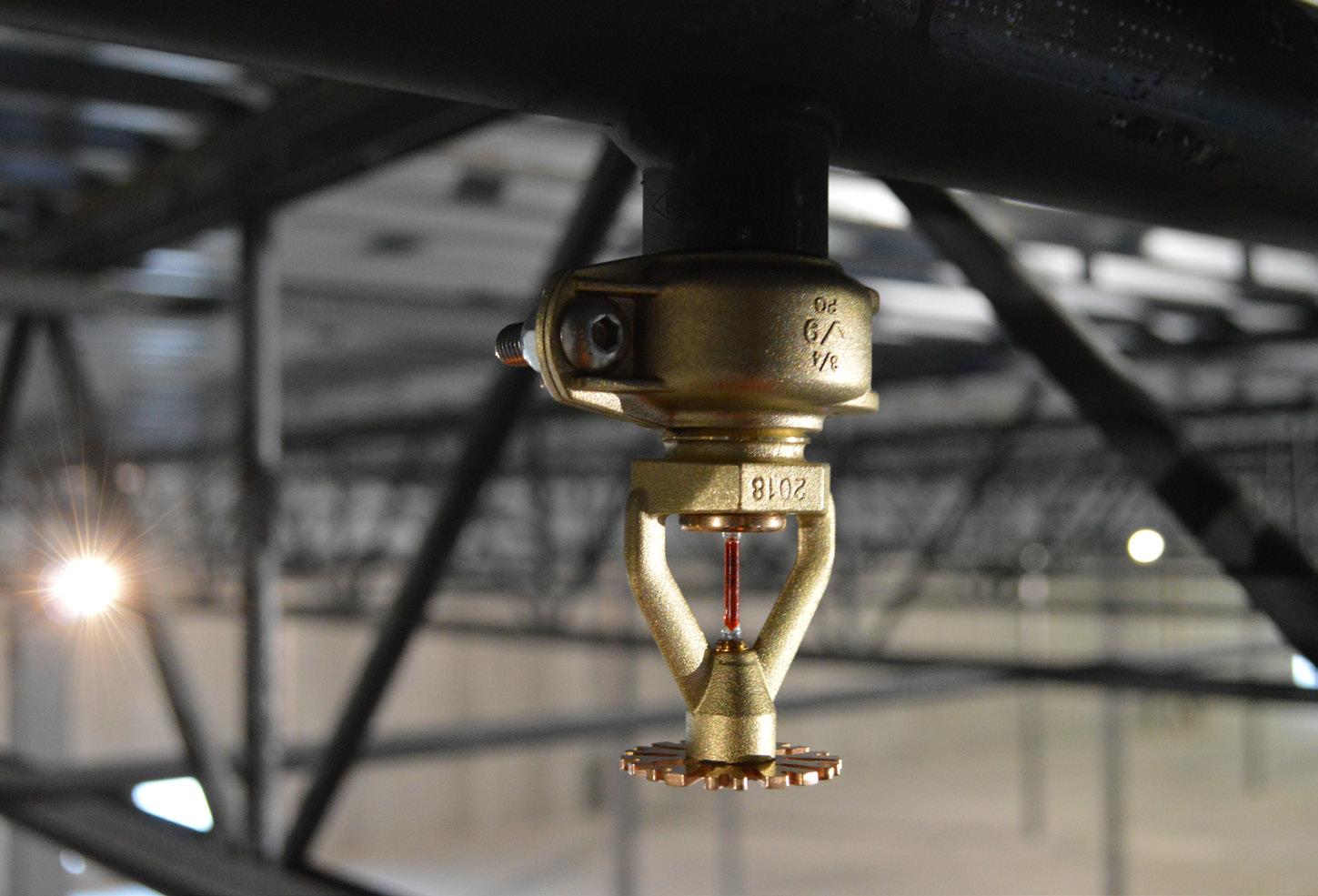
updates, one in 2022 and another in 2025, have made ESFR sprinklers viable in situations where they previously couldn’t be used.
Large structural members or closely spaced structural members can interfere with effective sprinkler discharge or force designers to position sprinklers closer together to provide adequate spray coverage, thereby driving up material costs and water supply requirements. In practice, this left designers with two options: recommend owners spend money on drop ceilings and sprinkler drops to meet ESFR obstruction
requirements or give up on ESFRs entirely and use CMSA or CMDA sprinklers, which typically require in-rack protection.
The 2019 edition of NFPA 13’s obstruction requirements had the following restrictions:
• Obstructions 2 in. wide or less must be at least 2 ft below the sprinkler.
• Obstructions up to 2 ft wide are allowed to be 1 ft to the side of sprinklers.
• Bottom chords up to 1 ft wide required sprinklers at least 1 ft laterally.
When you add the requirement that each sprinkler must cover at least 64 ft2 and be positioned at least 8 ft apart, buildings
with substantial structural elements become off-limits for ESFR installation.
Revisions in the 2022 edition of NFPA 13 dramatically reduced obstruction limitations for CMSA and ESFR sprinklers. The change came on the heels of new Fire Protection Research Foundation testing that proved ESFRs could work effectively closer to obstructions than previously believed:
• Obstructions up to 11/2 in. wide must be at least 1 ft below sprinklers.
• Obstructions up to 6 in. wide can be 6 in. to the side of sprinklers.
• Bottom chords up to 6 in. wide can be 6 in. to the side of sprinklers, while bottom chords up to 2 ft wide can be 1 ft to the side.
The 2022 edition eliminated the minimum 64 ft 2 coverage requirement in areas with obstructed construction where the sprinkler deflectors are located above the solid structural members. This allows ESFR sprinklers to be installed in applications where members are closely spaced. However, if these baffles are used, the minimum design area for the ESFR sprinklers must cover a minimum 768 ft 2 .
Fire Protection Research Foundation tests proved that when heat and smoke from fire gets trapped in channels created by solid structural members, it concentrates above the fire rather than spreading across the ceiling. Since solid structural members localize the smoke plume, sprinklers can be spaced closer together without raising concerns about activating more than the 12 sprinklers that ESFR systems are designed to operate, which could exceed the water supply capacity and compromise fire suppression.
The 2022 edition of NFPA 13 reduced obstruction clearances, bringing ESFRs in line with CMSA sprinkler obstruction requirements. ESFRs can now be used in existing buildings that previously required drop ceiling installation to meet ESFR obstruction requirements.
NFPA 13’s 2025 edition tackled another major limitation for all storage sprinklers—sloped ceilings. When fire occurs under a sloped ceiling, heat travels up the slope away from the fire source, potentially delaying activation where needed most and causing unwanted remote sprinkler operation. For this reason, storage sprinklers have not been permitted in storage spaces with sloped ceilings, requiring designers to install false ceilings that could withstand uplift forces, use in-rack sprinklers with no storage above the racks, or commission special engineered solutions outside NFPA 13’s scope.
The 2025 edition allows up to 4-in-12 pitch roofs for storage applications, with different allowances based on specific pitch ratios and construction types. Changes are based on Fire Protection Research Foundation testing using fire dynamic simulator and minor burn testing.
While the focus of these changes was regarding sloped ceilings, another huge benefit is that ESFR sprinkler deflectors can now be positioned up to 30 in. from the roof, versus the previous 18 in., when obstructed construction is present.
The new rules provide different allowances based on ceiling pitch and channel size. On ceilings with slopes that are 1:12 or less:
• With channels that are greater than 400 ft3: members are permitted to be up to 18 in. deep, and sprinklers are permitted to be located up to 6 in. below members (maximum 24 in. below the ceiling).
• With channels that are 400 ft3 or less: members are permitted to be up to 24 in. deep, and sprinklers are permitted to be located up to 6 in. below members (maximum 30 in. below the ceiling).
On ceilings with slopes that are greater than 1:12 up to 2:12:
• With channels that are 400 ft 3 or less: members are permitted to be up to 18 in. deep, and sprinklers are permitted to be located up to 6 in.
below the members (maximum 24 in. below the ceiling).
The changes introduced in the 2025 edition of NFPA 13 make it easier for contractors to run sprinkler piping at the ceiling and effectively position sprinklers. For instance, they may eliminate the need for false ceiling installation under sloped roofs, reliance on in-rack systems independent of ceiling protection for sloped ceilings, or offer an alternative to performance-based engineering solutions that create insurance complications and Authority Having Jurisdiction (AHJ) approval challenges.
What once caused system designers to shy away from ESFR sprinklers—obstructed ceilings and sloped roofs—are now much easier to work with. Understanding and applying these updated rules helps fire protection professionals deliver better storage protection solutions.
ESFR sprinklers are now viable in most applications where other storage sprinklers can be used. The revisions introduced in the 2022 and 2025 editions of NFPA 13 have dramatically expanded how ESFR sprinklers can be installed, enabling designers to offer clients simpler, more adaptable and more cost-effective solutions. The key is knowing that these options exist and working within your jurisdiction’s requirements to leverage the newer NFPA 13 editions when possible. Where jurisdictions permit it, choosing to use newer editions can unlock major design advantages. n
ABOUT THE AUTHOR: Karl Wiegand, P.E., is a senior application engineer at Victaulic. His primary duties consist of providing technical support, providing training, and representing Victaulic’s interests within the fire protection industry. Wiegand holds a Professional Engineering license in the field of Fire Protection Engineering and is a graduate of Worcester Polytechnic Institute with a Bachelor of Science degree in Mechanical Engineering and a Master of Science degree in Fire Protection Engineering. Over the last 16 years, he has held positions on NFPA 15, 16, 24, 420, and 750 as well as AWWA’s Backflow, Water Metering, and Fire Protection committees and Underwriters Laboratory’s UL199 STP. Karl continues to represent the sprinkler industry on NFPA 13, 30B, 101, 820, and 5000.


These are not your average vendors. They are the 007s of the fire protection game. Covert operatives disguised as manufacturers & suppliers — all sworn to protect your bottom line and advance the mission of AFSA .
THEY DON’T WEAR TUXEDOS. BUT THEY DO DELIVER RESULTS.
MANUFACTURER & SUPPLIER MEMBERS HAVE ONE MISSION: SUPPORTING CONTRACTORS LIKE YOU.
When it’s time to gear up, contact an AFSA member. These allies fund the fight, back the cause, and equip you with tools built for mission success.
firesprinkler.org/ultimate/
AFSA’s new lab was outfitted by our Manufacturers & Suppliers. AFSA Training Programs are supercharged by their imagery, innovation, and insight. They’ve embedded the latest tech and donated their time to every lesson, course, and seminar. firesprinkler.org/lab/
At the AFSA Convention & Exhibition, Associate members work in full force. From immersive booths to tech rollouts and elite sponsorships, these operatives bring the heat — so you stay ahead of the curve. firesprinkler.org/AFSA44/
Associate Members aren’t some secret society — they’re embedded in your local chapters. They sponsor your events, share mission-critical insights, and stand shoulder to shoulder with you on legislative and charitable fronts.


DYNAMIC DUO: CONTRACTORS + ASSOCIATES
TOGETHER, WE ARE FASTER. SMARTER. STRONGER.
Your customers are not thinking about winter now, but you should be.
Winterizing fire sprinkler systems is a critical service offering needed to reduce the chance of water damage associated with freezing. Service providers may provide winterization services as a part of annual and/or quarterly inspection service agreements, but this service should always be performed during warm weather before the onset of cold weather when it’s too late to be proactive. A winterization checklist like the example provided can provide the basis for
best practices and offer your inspectors and technicians a great tool for verifying and documenting conditions as well as communicating with and training owners and building managers. Maybe just as important, this practice can limit your liability. Providing a copy of your checklist to customers helps them understand their responsibility to maintain heating systems, and to check their low-point drains throughout the winter months.
Every business seeks long-term relationships with customers, which reduces the cost of acquiring new customers and instills trust and confidence in the
relationship your firm shares with clients. Preparing and training customers to reduce problems common to cold weather’s impact on their systems is one way to show you’re looking out for their interests as well as their expenses. Frozen systems can be very expensive repair jobs, not to mention the cost and inconvenience of dealing with impaired systems. Inspectors and service technicians should be trained to advise customers that following any service performed, any number of components, like air compressors or heaters, can still fail.
As with any inspection service, it is critical that inspectors check each item on the
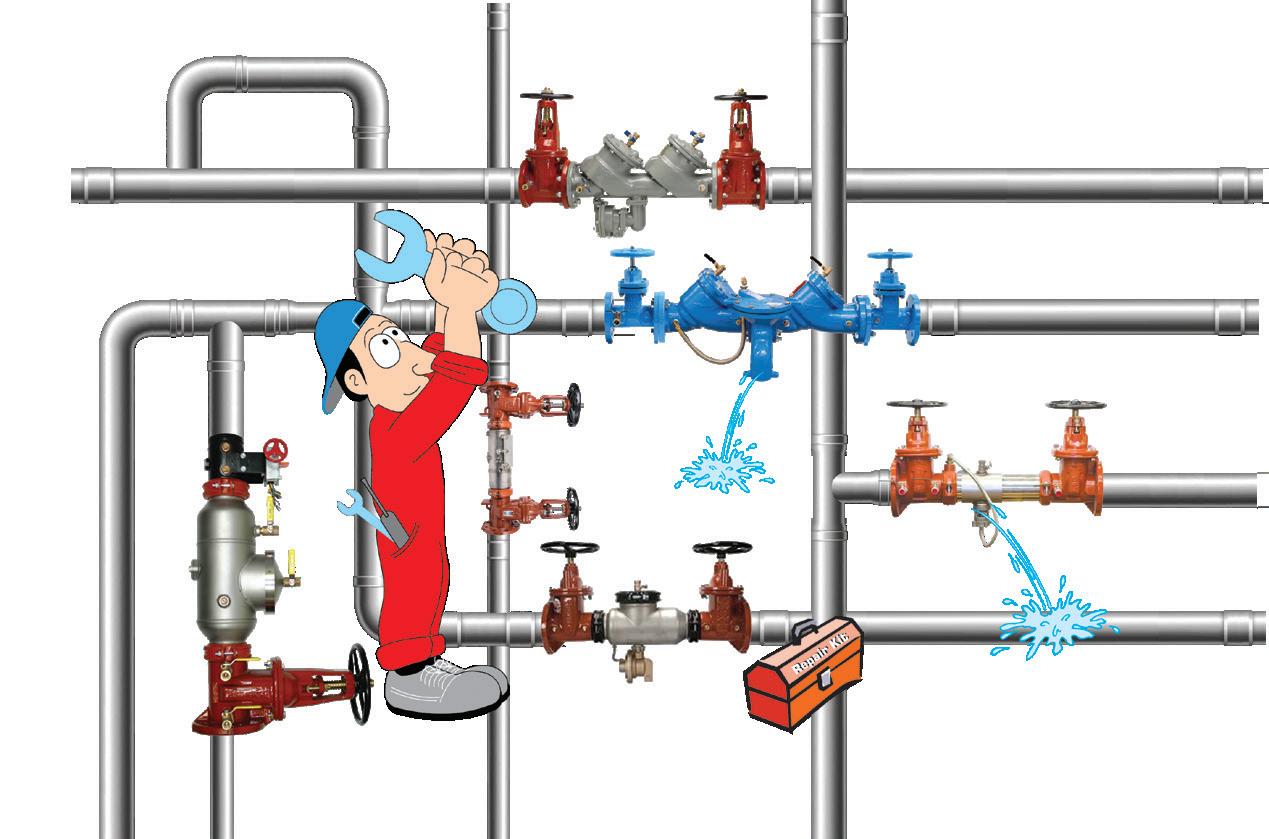
Job Name: ____________________________________________
Street:
Date: _____/______/______
Work Order No: ____________________________________
City/State/Zip: _________________________________________ Inspector: _________________________________________
Contact Name: ________________________________________
Item Name
Dry Pipe/ Pre-Action System(s)
Check all dry pipe and pre-action systems to make sure they are not flooded. If both gauges read the same, it’s likely flooded.
Drain ALL low-point drains.
Verify & record the location of all drains with the Owner/ Occupant.
No. of Low Point Drains Known: ________
Verify proper operation, function, and settings for the air compressor, nitrogen generator, or Vapor Shield system.
Drain condensation from the air compressor tank.
Antifreeze System(s)
Check the antifreeze systems to verify the type of solution and freeze point if known. If unknown, note this here.
Valve Room(s)
Check valve rooms, pump rooms, stair enclosures, and areas with exposed piping for the following: Heaters are working properly Dampers are closed No unprotected openings are present
Fire Department Connection(s)
Total # of FDCs:________
Verify FDC is not full of water and ball drips are working properly.
Misc Additional Items:
Check water storage tank heaters for proper operation where present.
Determine if heat tracing is intact and operating properly, including monitoring systems for heat trace systems.
Visually inspect the integrity of any pipe insulation where provided.
Visually inspect any wet pipe in accessible attic areas to determine if required insulation is in place, or if the insulation has been disturbed.
Phone: ___________________________________________
Initials of Inspector
Total # of Systems:________
Total # of Systems:________
Total # of Rooms:_________
Comments or Recommendations
Provide the customer with a copy of the completed inspection checklist (if requested) and attach a copy to the work order
Provide the customer with at least one copy of the Drum Drip Assembly Instruction Sheet.
Reiterate the importance of the owner/occupant to periodically inspect these items throughout cold weather months.
Document all deficiencies/recommended repairs or modifications. (Attach additional pages if needed).
Important Note: This inspection service is performed for the purpose of preventive maintenance, testing of equipment, and review of changes or recommended services which should be performed. The work is not intended to be a guarantee of equipment or a guarantee against malfunction of equipment. Periodic inspections are the responsibility of the building owner or a designated representative of the owner of the property
Date: _____/______/______
Owner’s Signature (or Authorized Representative)
(Print Name, email, and/or phone number)

list and make notes on any deficiencies or recommendations for corrective action, and note any corrective actions provided during the inspection. Very few fire protection service providers would offer a guarantee or a warranty with inspection services of any kind. The work is being performed for preventive maintenance, testing of equipment, and, where applicable, a review of changes or recommended services that should be performed. The work is not intended to guarantee equipment or a guarantee against malfunction. Inspection services performed in accordance with NFPA 25, Standard for the Inspection, Testing, and Maintenance of Water-Based Fire Protection Systems, are not intended to verify the adequacy or accuracy of the system(s).
As a matter of good business practices, a copy of the completed winterization checklist should be returned to the office

1” Globe



with the corresponding work order so that a record of the inspection and any resulting recommendations will be transmitted to the owner or occupant of the building/facility and so you can maintain records for future needs and scheduling. The owner/occupant should also be provided with a copy of the winterization checklist attached to their invoice however, they they should get a copy upon completion of the work as well.
While NFPA 25 establishes the responsibility for fire sprinkler system inspection, testing, and maintenance as the owner’s responsibility, many owners do not know that. It’s important to help your customers understand the roles and responsibilities they have, in addition to the roles of the service provider and the Authority Having Jurisdiction (AHJ). Communicating the customer’s obligation to check the items on the checklist before and throughout the cold months is critical to success.
Technicians and inspectors should instruct the owner/occupant on how to perform the minimum level of maintenance required for their system and encourage them to document the activities utilizing a winterization checklist. We should also familiarize them with NFPA 25 requirements to be clear about roles and responsibilities.
1. Ask the owner/owner’s authorized representative to identify or verify the number and location of all low-point drains in the system or facility.
2. Inspect and check those components visible from the floor level and/or are accessible.
3. Verify the condition/operation of the items being checked at the time of the inspection.
4. Provide the customer with a copy of the Drum Drip Assembly Instruction Sheet.
NFPA 13, Standard for the Installation of Sprinkler Systems, requires dry pipe sprinkler systems and pre-actions systems to be installed with the piping pitched to drain, such that water will not accumulate at low points and freeze, causing split pipe or broken fittings. The low points in a system should normally be equipped with a drum drip assembly or condensation nipple similar to the one depicted above. The 1-in. globe valve on the top or inlet side is left open to allow condensation to collect in the larger nipple. Periodically, especially before and during cold weather conditions, the condensation must be drained to avoid freezing and breaking of this assembly, which will result in a tripped valve and a flooded sprinkler system. This is done by following these steps:
1. Close the top valve to seal off the air within the sprinkler system.
2. Remove the 1-in. plug, open the bottom valve, and drain any water into a bucket.
3. Close the lower valve and replace the plug.
4. Re-open the top valve.
CAUTION: Opening bottom valve with top valve open may cause dry pipe valve to trip and flood the system.
NOTE: NFPA 25 inspections and testing procedures do NOT include verification that original installation was properly pitched or drained nor does a normal inspection attempt to verify that building settling has not caused piping to change pitch or drain conditions. n
Inform the client of potential failures or causes of freezing problems. Note that air compressors and unit heaters can fail after the inspection so they must be periodically checked by the owner or occupant to ensure proper operation. Condensation can and will continue to collect in low-point drains and may freeze if not drained.
The American Fire Sprinkler Association (AFSA) has entered into a Memorandum of Understanding (MOU) with Eastern Kentucky University (EKU) to secure participation in the EKU Advantage program, which provides a pathway to educational advancement for AFSA members.
“Our industry needs more people at every level, to meet the needs of the fire and life safety market in new construction and the management of existing fire protection systems and facilities,” says AFSA President Bob Caputo, CFPS. “Partnering with those technical schools and universities that provide training and educational opportunities for those considering a career in our industry is critical to success across the board. We look forward to working with EKU in support of the excellent fire and life safety tracks offered, and we are proud to be included in the tuition benefit program opportunity.”
The EKU Advantage program applies to online or in-person classes and includes the following benefits for AFSA members:
• A 25% flat-rate tuition discount on all EKU degree programs.
• A 20% discount on EKU’s Workforce Development and EKU OSHA Training Institute Education Center courses.
• Free books under the EKU BookSmart program.
• Enhanced customer service assistance to employees and contractors to expedite and prioritize the admissions process, class registration, financial aid, and scholarship applications.
• Dedicated academic advisors provide individualized attention to move students quickly towards degree completion.
“EKU is proud to partner with AFSA to provide its members with a clear pathway to educational advancement,” says Shari VanHoose, associate director, Workforce Development and Community Engagement,
EKU. “As one of only a handful of institutions in the nation to offer a comprehensive Fire Protection and Safety Engineering Technology degree, EKU is uniquely positioned to support the professional growth of AFSA members. We are happy to offer
AFSA members discounted tuition through this partnership, making higher education more accessible while advancing excellence in the fire protection industry.”
Email membership@firesprinkler.org or call (214) 349-5965 for more details. n
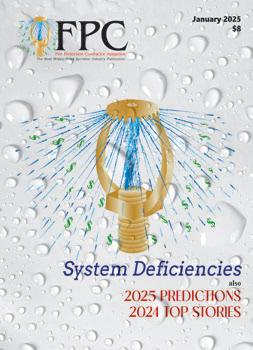
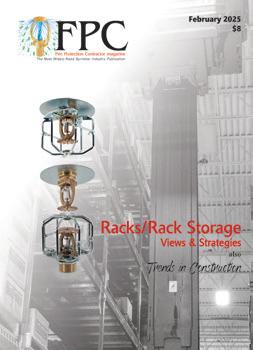


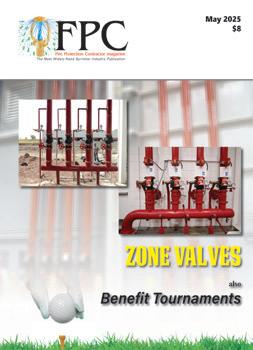



HOOPER LOSCOMB | EAGLE FIRE, INC.
Under clear skies and with plenty of competitive spirit, the Virginia Chapter of the American Fire Sprinkler Association (AFSA) hosted its Annual Burn Survivors Golf Tournament on Oct. 9, 2024. Once again, this annual event was held at the Williamsburg National Golf Club in Williamsburg, Va. With the great weather given to the committee, it was another major success for the charities. This event is a much-anticipated golf tournament that combines sport, philanthropy, and camaraderie from the fire sprinkler industry and community.
Now in its 31st year, the tournament brought together 244 golfing participants and many sponsors from across the nation, raising $90,000 for the charities that the Foundation supports—The Central Virginia Burn Camp for Kids and The Old Dominion Fire Fighters Foundation, supporting the Evans-Haynes Burn Unit at VCU Medical Center/Virginia Commonwealth University.
The event kicked off with the 9:30 a.m. golfer registrations and a putting contest sponsored by the chapter’s NextGen committee. This contest included participants attempting to hit golf balls toward their favorite bottles of adult beverages, which were strategically placed on the practice green. As golfers connected their putts with their target bottle of choice, they were then awarded that item to take home.
While the putting contest and registrations proceeded, golfers used the on-site driving range to get loose and hone their skills for the day’s efforts. As usual, this is a time when participants catch up with great networking and conversation. At 11:00 a.m., lunch was served, which was once again provided/donated by O’Toole’s Restaurant and included grilled hot dogs and Italian sausages.
Just before the noon shotgun start, golfers made their way to their carts, and the AFSA Virginia Chapter’s President Bob Beckwith gave a rundown of the event’s tournament rules and procedures to all the golfers. The golf teams were then given the go-ahead for a full day of play across 18 holes on the Jamestown and Yorktown courses. Players of all skill levels competed in a best-ball format, encouraging teamwork and sportsmanship. On the course, participants enjoyed refreshments from four spirited beverage cart volunteers. The day’s tournament included skill challenges like “Closest to the Pin,” “Closest to the Line Drive,” and the ever-popular “Hole-in-One” contest.
After the final putt dropped around 5:30 p.m., participants gathered back at the tent pavilion for a celebratory dinner and awards ceremony. Dinner included terrific beef and chicken entrees by O’Toole’s Restaurant. Then, special guests were recognized and

information about the charities was provided. Trophies were awarded to the top teams, with special prizes given for individual achievements. Raffle drawings were announced, and prize winners enjoyed some great items to take home. Participants also were randomly picked for many door prizes which were displayed for pickup.
The Burn Survivors Foundation (BSF or Foundation) committee was again thankful to sell out the tournament in support of these great charities. The 2024 event included five Presenting Sponsors, which was outstanding and helped this event exceed the goals. The Foundation and board are so appreciative of the generosity shown!
The 2024 event also included 244 golfers, four Diamond sponsors, nine Platinum sponsors, ten Gold sponsors, three Silver sponsors, seven Major sponsors, and eight Hole sponsors.
The Foundation committee is very thankful that once again we have received a generous donation of $25,000 from the Ray Fremont, Sr. Foundation, and is now named as one of its three charity sponsorships going forward. We are so proud to be included in the charitable efforts and vision of the Freemont family at General Air Products. The committee designated the Ray Freemont, Sr. Foundation as a Presenting sponsor for this event, based on their donation.
The committee also received a $10,000 donation from Bill Jones and his “BBQ Gives Back” crew. This is a group that hosts an


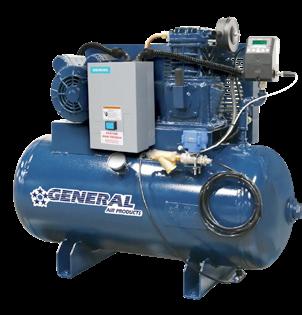

NFPA 13 (2025) now states:
“8.2.7.5.2 - Where an air compressor is dedicated for the sprinkler system, the air compressor shall be listed for fire protection.”
Because of the NFPA 13 update, UL added UL 1450, Supplement SC to clarify and standardize what qualifies as a listed Fire Protection Air Compressor.
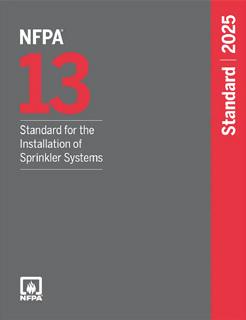

Going forward, listed Air Compressors for Fire Sprinkler use will be marked as follows:
“This Air Compressor Has Been Evaluated for Fire Sprinkler Use According to UL 1450, SUPPLEMENT SC”
Compressors that are not tested to UL 1450, Supplement SC cannot imply suitability for use in Fire Sprinkler Systems.
Provided with a mean to be hardwired and permanently connected (No plug in cord)
Pressure-regulating control switch (pressure switch) must operate for 100,000 cycles under rated load
Relief valve tested at 5x maximum setting
annual KCBS Certified Barbeque competition, which allows Jones to share a donation with the Foundation. The event also provides charitable food to local food banks and shelters once the competition is complete. Jones is part of the BSF committee and has served the fire protection industry and fire services both in business and in philanthropy for years.
In addition to the donations provided from our sponsors, the Burn Survivors Foundation has been given a very generous gift of $100,000 from Mike Meehan of VSC Fire & Security. This was a wonderful surprise and will go a long way in furthering the Foundation’s endowment efforts. Many thanks go out to Mike and his generosity!
Generous gifts and the efforts by many folks in the fire sprinkler industry are what make these donations possible. The BSF and golf committee would like to give a big THANK YOU to all who have taken their time and donated!
As the event’s dinner concluded, and prior to the awards and prize announcements, Bob Beckwith provided some information about the charities. One of the charities BSF contributes to, the Evans-Haynes Burn Unit at VCU Medical in Richmond, is in its 77th year of operation. This event provides financial assistance to the Old Dominion Firefighters Burn Foundation, which supports The Evans-Haynes Burn Unit. The Old Dominion Firefighters Burn Foundation and The Evans-Haynes Burn Center have been assisting with the rehabilitation and assistance to burn survivors and their families for many years.
The other charity that the BSF and this tournament support is the Central Virginia Burn Camp for Kids in Charlottesville. The Central Virginia Burn Camp has provided tremendous help for children who have burn injuries. The camp allows kids to get back to being kids. Many of the current camp counselors who now work at the camp were former campers themselves.
The AFSA Virginia Chapter is proud to announce that it donated $90,000 in total to these two charities raised during the 2024 tournament. The Central Virginia Burn Camp for Kids was given $45,000 (received by Leslie Baruch and Tim Wright), and the Old Dominion Firefighters Burn Foundation was given $45,000 (received by Jerry Pruden and Doctor Michael Feldman). The Virginia Chapter and BSF’s total donations over the 31 years of this event have contributed $1,422,900 to these two great charities!
After the donations were presented, next came the announcement of the prize winners and the golf team accolades from the day’s play.
The chapter established the “Giles Cup” award for the Grand Prize winner in 2015. This cup was established to honor Giles for all his magnificent work and support for the Virginia Chapter’s golf tournament from its beginning. The chapter will keep the Master “Giles Cup” and will put a name plaque on it each year with the Grand Prize winners listed, with the Grand Prize winners receiving a replica copy of this “Cup” for each player on the winning team. The following teams/ participants are the 2024 golf tournament winners:
• Grand Champion (Best Overall Team Score)/Giles Cup Winner: the Jack Medovich team #1 of Jack Medovich, Skeeter Heath, Scott McNeil, and Allan Strange (winning score of 46)
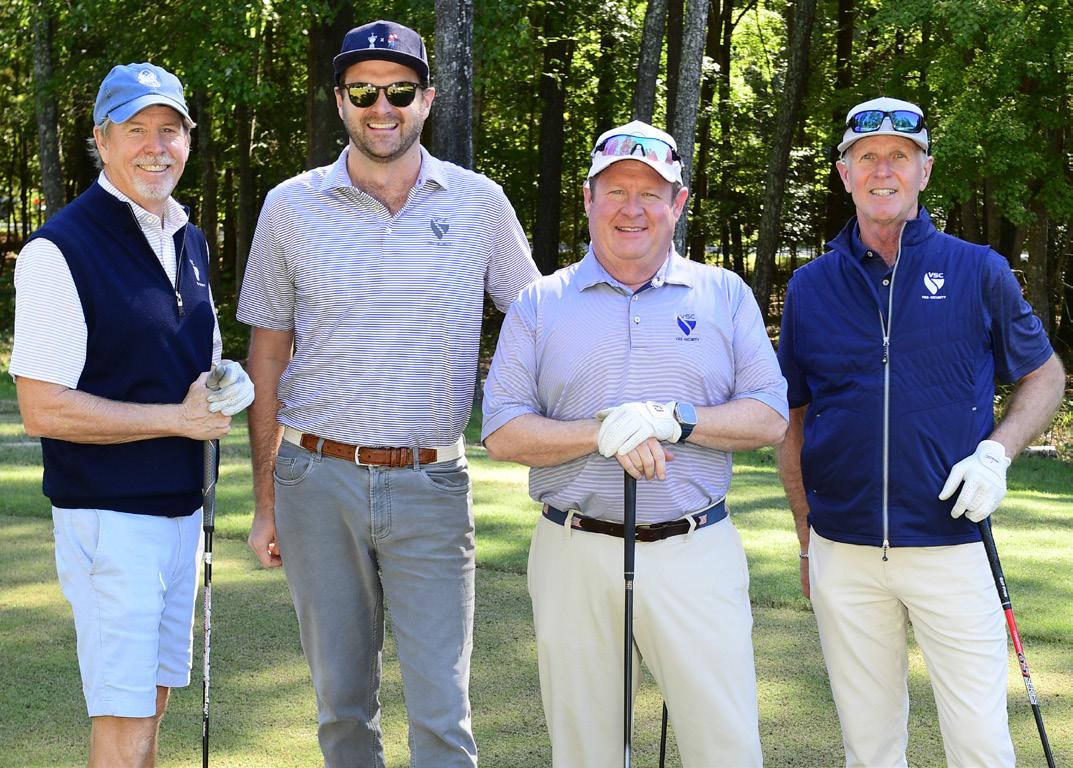
Move-up Hole Winners on the Yorktown Course was the Mike Meehan, Dumas Garrett, Tommy Clements, and William Walker team.
• Reserve Grand Champion (Second Place Overall Team Score): the Fire-X Corporation team of Wayne Pugh, Tom Woody, Phillip Miller, and Ricky Silva Team Winners included:
• Fire Flight: 1st Place: Jamestown Course—the Old Dominion Fire Fighters team of Danny Meleski, Chris Pruden, Darren Lucas, and Derek Webb, and Yorktown Course—the VSC Fire & Security team #2 of Bill Freeby, James Walter, Brad Strickland, and James Dennis
• Sprinkler Flight: 1st Place: Jamestown Course— the Jack Medovich team #3—John Niz, Gary Moore, Kevin Damiano, and William Tallant and Yorktown Course—the Viking team #2 of Tom Bowers, Manny Ortiz, Tom Moore, and Andrew Evans
• Life Saved Flight: 1st Place: Jamestown Course—the Hajoca team of Rudy Jones, Sam Carter, Jr., and two others, and Yorktown Course—the Victaulic team of Woody Witczak, Jay Strickland, Asa Baskin, and Thomas Edmunds
Other winners of individual skill challenges recognized:
• Closest to the line: Jamestown Course—Al Leebrick from the Summit Fire & Security team and Yorktown Course—Brandon Shearin from the Old Dominion Fire team
• Closest to the Pin: Jamestown Course—William Tallant from the Jack Medovich team #3 and Yorktown Course—Joseph Summerall.
• Move-up Hole Winners each of a Bluetooth Golf Speaker/GPS device: Jamestown Course—the Jack Medovich team #3 of John Niz, Gary Moore, Kevin Damiano, and William Tallant, and Yorktown Course—the Mike Meehan team #3 of Mike Meehan, Tommy Clements, William Walker, and Dumas Garrett
• Good Sport Award (Last Place Overall score): the American Fire Systems team of Joe Saffer, Robert Stoker, Andy Anderson, and Tahnie Boggess (score untold)
The event also included drawings for some major prizes, pre-drawn prizes and door gifts, and raffled items. Fifty-two individual door prizes were given to golfers, drawn from the list of all players and volunteers. Also, during registration, each participating golfer received a Burn Survivor Foundation-logoed quarter-zip pullover shirt.
The following raffle prizes and large door prizes were awarded to the following participants: Louis Perkins of Summit Fire & Security received an Oklahoma Joe’s Bronco Smoker grill, CJ Hall (volunteer to the BSF event) received a Gunter Wilhelm knife set and block, Tom Jernigan of VSC Fire & Security received an AMYET e-bike, Pat Sigmon of ETec received an Apple iPod, Chris Amorese of JCI Fire Products received a foursome at the Williamsburg National Golf Club, Ricky Johnson of the Central Virginia Burn Camp received a foursome at the Lee’s Hill Golf Course, Bill Freeby of VSC Fire & Security received a nice cooler prize pack filled with various adult beverages, and Anthony McDaniel of ACI won the 50/50 cash raffle ($1,000 ), which he returned back to the charity.
After awards were announced, Bob Beckwith reminded the participants of the “Codicil” agreement that he and George Wagner have created, to build an endowment for the Burn Survivors Foundation to continue providing needed donations to these important charities. It is the intent for the golf tournament to live on for many years to come, but the goal is to be capable of providing donations to charities in case there are future circumstances where the golf event cannot be held.
The Codicil Agreement is a method for anyone to donate through their will or estate plans. The agreement can be modified or cancelled at any time, and any amount of donation is helpful to the endowment and the Burn Survivors Foundation’s financial preparedness. If you are interested in the agreement or wish to
donate, please contact any of the Golf Committee members or visit the BSF website for details.
We want to thank O’Toole’s Restaurant & Pub for donating lunch and for providing a terrific dinner for the golfers and volunteers. We also want to thank the 2024 BSF Golf Chairman’s committee, who worked the full year, meeting ten times in planning for this golf tournament. The committee members are Chairman Bob Beckwith, Cavalier Fire; Griff Brinkley, Old Dominion Fire Company; Jason Gill, Crews and Gregory Sprinkler; Harry Hoffon, retired, Eagle Fire, Inc.; Bill Jones, retired, FirePro, Inc.; Jeff Lewis, VSC Fire & Security; Hooper Loscomb, Eagle Fire, Inc.; Steve McGee, ACI & Virginia Chapter executive director; Jack Medovich, retired, Summit Fire (previous chairman); Jerry Pruden, Old Dominion Firefighters Foundation; Craig Smith, Ferguson Fire & Fabrication; George Wagner, retired, E.D.; and Scott Williams, VSC Fire & Security.
If you are interested in donating to the Foundation or would like to learn more about the charities this event serves, visit burnsurvivorsfoundationva.org. For information on the AFSA Virginia Chapter and how to get involved, visit virginiaafsa.org. n
THIS TOURNAMENT COULD NOT HAVE BEEN SUCCESSFUL WITHOUT ALL OF OUR PRIMARY SPONSORS! THANK YOU!
PRESENTING SPONSORS –$25,000
Harry & Darlene Hoffon Jack Medovich George Wagner The Ray Fremont, Sr. Memorial Charity The Summitt Companies
DIAMOND SPONSORS – $15,000
Ferguson Fire & Fabrication Mike Meehan Summit Fire VSC Fire & Security
PLATINUM – $5,000
American Fire Systems Argus Fire Control BBQ Gives Back Core & Main Fire Protection
General Air Products Performance Fire Protection Reliable Automatic Sprinkler Co. Hajorca – Fire Protection & Fabrication Services Victaulic Viking SupplyNet
GOLD – $2,500
Atlantic Constructors/ACI Cavalier Fire Protection Central Virginia Burn Camp Eagle Fire, Inc.
eTec Fire Protection Johnson Controls/JCI Service Trade Old Dominion Firefighter Burn Foundation South-Tek Systems Tornatech, Inc.
SILVER – $1,000 Bank of America Fire Tech Systems Janney Investments
MAJOR – $500
Margaret Beckwith Checkmark Services Crews & Gregory Fire Protection Jason Gill JCI/Norfolk Old Dominion Fire Phoenix Fire Protection
HOLE SPONSORS – $200
eTec Fire Protection Evans-Haynes Burn Center Fire Solutions Giovanni’s Pizza Hydro-Tec, Inc. Jeff Lewis
* Note: The BSF received numerous
The National Fire Protection Association® (NFPA®) has launched “A Code for Every Moment,” one of the most significant public awareness campaigns in its more than 125-year history, to educate the public and policymakers about the life-saving role of independently developed safety codes and standards—and to defend a system now under threat.
“Safety doesn’t happen by chance,” said NFPA President and CEO Jim Pauley. “We’ve spent more than a century developing codes and standards that safeguard lives, enable innovation, and save billions in taxpayer dollars. But we must do more to help people understand how this essential system works, and why it must be protected.”
From the wiring in our homes to the exits in our workplaces, safety codes keep everyday moments safe, but there’s a gap in public understanding that has left the system vulnerable—to complacency, misinformation, and special interests.
New research from NFPA shows that most Americans are unaware of who creates safety codes or how they are developed. Most people mistakenly believe these safety standards are created by government agencies rather than by private, independent organizations like NFPA. This lack of awareness has opened the door for well-funded interests that are actively working to bypass or weaken the very system that has invisibly protected lives and supported economic growth for decades. There has also been a movement of for-profit companies using these standards without compensation, which also threatens the viability of the current standards development process. However, that same research shows that when people learn how the system actually works—how independent professionals collaborate to create safety standards in the public interest—they overwhelmingly support maintaining and protecting it.
The campaign also urges passage of the Pro Codes Act, federal legislation that ensures that standards developers can continue to maintain copyright protection which is central to their ability to create life-saving codes. Without it, the independent, consensus process—and the safety infrastructure it supports—is at risk. Pro Codes also requires that standards incorporated by reference be made available for free viewing on a publicly accessible website.
“The codes and standards development system has been one of the most successful public-private partnerships in history— safeguarding countless lives, creating economic growth and saving billions of taxpayer dollars,” Pauley continued. “We can all do more to protect the safety standards that protect us. Whether you’re a policymaker, professional, or simply someone who cares about public safety, your voice matters.”
To learn more about the campaign, visit DontChanceSafety.org. n



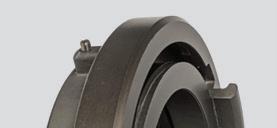
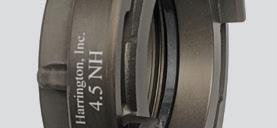


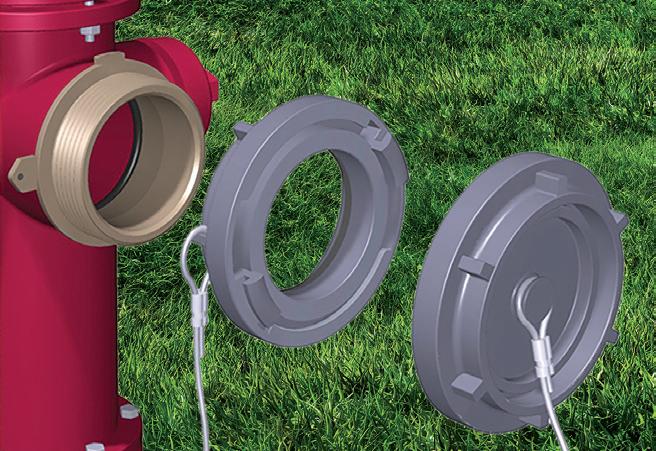
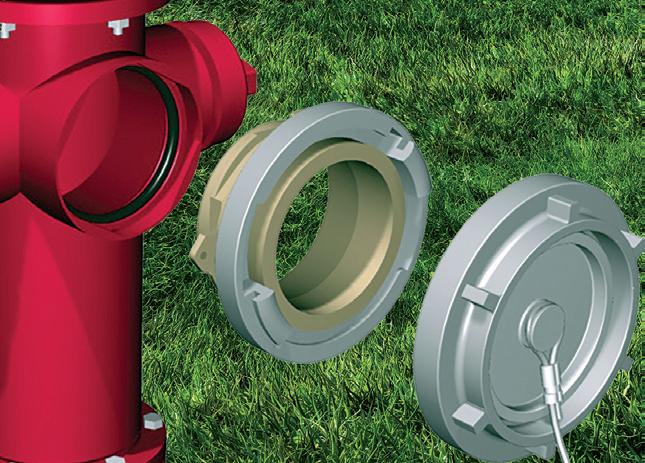







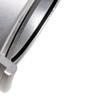






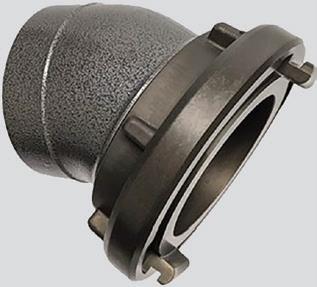
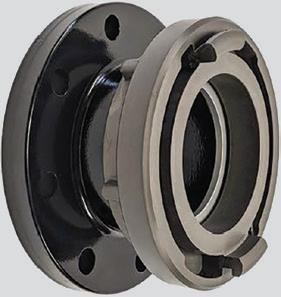



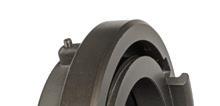



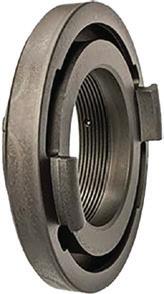
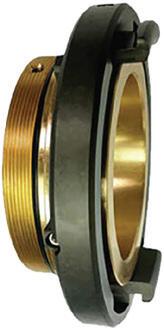



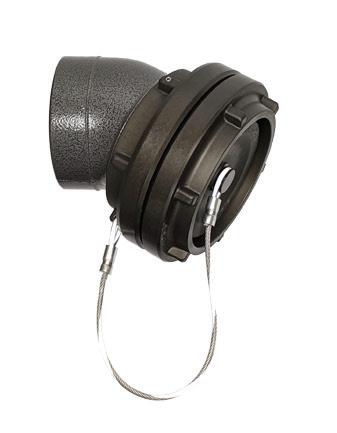

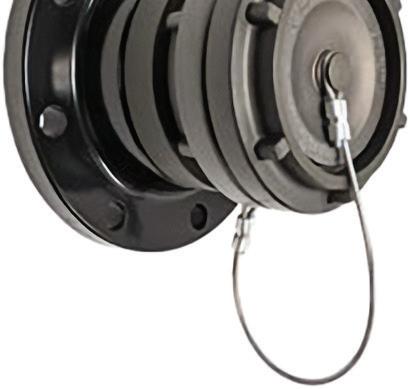
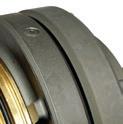


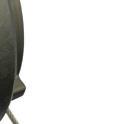

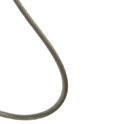

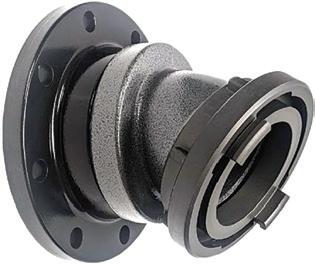

The National Fire Protection Association® (NFPA®)— the official sponsor of Fire Prevention Week™ for more than 100 years—has announced “Charge into Fire Safety™: Lithium-Ion Batteries in Your Home” as the theme for Fire Prevention Week, October 5-11, 2025. This year’s focus on lithium-ion batteries works to better educate the public about how to buy, charge, and dispose of them safely.
Most of the electronics in our homes—smartphones, tablets, power and lawn tools, laptops, e-cigarettes, headphones, and toys, to name just a few—are powered by lithium-ion batteries. If not used correctly or damaged, they can overheat and start a fire or explode. “Charge into Fire Safety™: Lithium-Ion Batteries in Your Home” provides the information, guidance, and resources needed to use lithiumion batteries with caution and care.
“Lithium-ion batteries are powerful, convenient, and they’re just about everywhere,” said Lorraine Carli, vice president of Outreach and Advocacy at NFPA. “Making sure the public knows how to handle them safely is critical to minimizing the potential risks they present.”
The three key messages that support “Charge into Fire Safety: Lithium-Ion Batteries in Your Home” include:
• When buying a product that uses a lithium-ion battery, take time to research it. Look for a stamp from a nationally recognized testing lab on the packaging and product, which means that it meets established safety standards.
• Many products sold online and in stores may not meet safety standards and could increase the risk of fire.
• Always use the cables that come with the product to charge it. Also, charge the device in accordance with the manufacturer’s instructions.
• If you need a new charger, buy one from the manufacturer or one that the manufacturer has approved.
• Charge your device on a hard surface. Don’t charge it under a pillow, on a bed, or on a couch. This could cause a fire.
• Don’t overcharge your device. Unplug it or remove the battery when it’s fully charged.
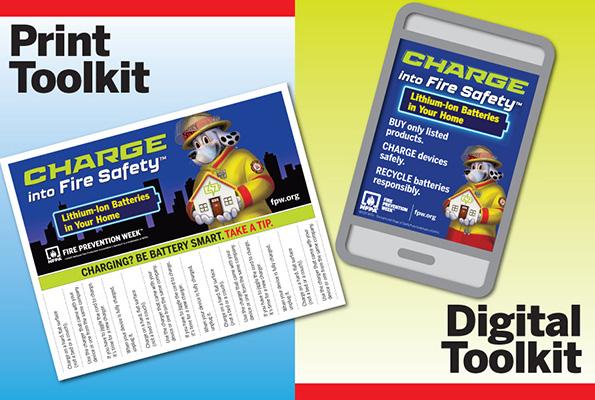
NFPA has materials available to help deliver effective, consistent campaign messaging during Fire Prevention Week and throughout the year.
• Don’t throw lithium-ion batteries in the trash or regular recycling bins because they could catch fire.
• Recycling your device or battery at a safe battery recycling location is the best way to dispose of it. Visit call2recycle.org to find a recycling spot near you.
To learn more about Fire Prevention Week and this year’s theme, “Charge into Fire Safety: Lithium-Ion Batteries in Your Home,” visit fpw.org. Additional Fire Prevention Week resources for children, caregivers, and educators can be found at sparky.org and sparkyschoolhouse.org.
Fire Prevention Week is celebrated throughout North America every October and is the oldest U.S. public health observance on record. For more than 100 years, Fire Prevention Week has worked to educate people about home fire risks and ways to minimize them. Local fire departments, schools, and community organizations play a key role in bringing Fire Prevention Week to life in their communities each year and spreading basic but critical fire safety messages n



The code adoption and standard development process can be painstakingly slow at times, but it is important to recognize that you are not limited to the editions currently adopted in your jurisdiction. Starting with the 2025 edition of NFPA 13, annex language was added to the equivalency clause in Chapter 1 stating “Subsequent editions of NFPA standards are not always adopted as soon as they are published and could lag several code cycles before the new edition is referenced. Where a newer edition of this standard is published, that standard should be permitted to be used in its entirety.” While you are not permitted to cherry-pick specific requirements that suit you best, using the newest standard should make your designs more efficient and cost-effective. Mark Twain famously said, “to stand still is to fall behind,” and with that in mind, I wanted to highlight two changes proposed for the 2028 edition of NFPA 13.
Special Occupancy Hazards For years, the industry has been looking for prescriptive guidance to address special occupancy hazards. These hazards include lithium-ion batteries, parking structures, and automated storage and retrieval systems (ASRS). While adding prescriptive requirements for the sake of adding prescriptive requirements undermines the role of the engineer, there are several technically substantiated proposals that should add language to aid designers once the 2028 edition is published.
The most significant guidance for parking structures comes as a clarification of the annex note. Currently, parking garages are identified as an example of an Ordinary Hazard (Group 2) occupancy. There is a general fear of the unknown, and AHJs have been putting their minds at ease by requiring Extra Hazard (Group 2) classifications where EVs were present. There are multiple published and ongoing research studies that have shown that the properties of fire dynamics for an EV fire were very similar to a vehicle with an internal combustion engine.
In the 2028 edition, it is proposed to state that the presence of electric vehicles or charging stations does not change this recommendation from the technical committee. In their committee statement, the discharge committee noted, “The presence of vehicle charging stations does not increase the hazard for automobile parking garages.” NFPA 88A will have its second draft meeting later this year, and for those of us who serve on both technical committees, we will ensure that both standards correlate once all the changes are finalized.
The other occupancy worth noting is ASRS storage facilities. While the technical committee rejected all public inputs, that should not be interpreted as a lack of technical merit or appetite. It simply comes down to logistics. An ongoing project from NFPA’s Fire Protection Research Foundation has not been published. By the time the public comment stage opens in 2026, enough data should be available to adequately address the protection of ASRS facilities prescriptively in NFPA 13 or, at the very least, provide additional performance-based guidance.
Forms & Signs As Oprah famously said, “You get a form! You get a form! EVERYBODY GETS A FORM!” Forms and signage seem to be the bane of some contractors’ existence, but what they might not realize is that those forms and signs are there to help YOU! Keeping this in mind, the technical committee has tentatively moved the Contractor’s Aboveground Material and Test Certificate back to the body of the standard and added language in Chapter 4 to emphasize that the Owner’s Certificate needs to be acknowledged and signed by the Continued on page 47

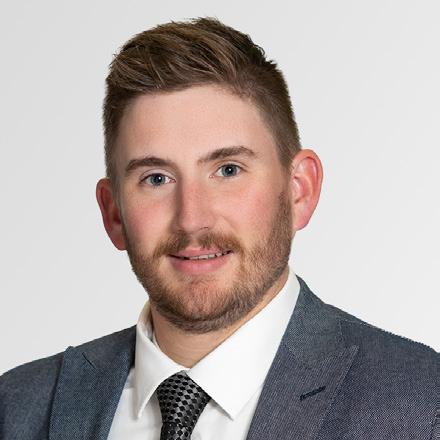
E. Parks Moore, P.E., Chair (National Scope)
S&S Sprinkler Co. (Pye-Barker)
Alternate: Phillip Clemen, Rapid Fire Protection Group
Robert Anderson (Region 3)
Silco Fire & Security
Chris Campion (Region 9)
Eastern Fire and Safety
Alternate: Thomas Carlock
Jason Gill (Region 8)
Crews and Gregory Fire Sprinkler, Inc.
Alternate: Bob Beckwith, Cavalier Fire Protection, LLC
Matthew Heidler (National Scope)
Johnson Controls Fire Protection
Alternate: Kevin Galligan
Chris Johnson (Region 7)
Piper Fire Protection
Alternate: Steven Helkin
Chris Kachura (National Scope)
VSC Fire and Security
Alternate: Andrew Hafner
Adam Levine (Region 9)
Capitol Fire Sprinkler
Alternate: Chris Ribando, Approved Fire Protection
Jeff Lewis (Region 8)
VSC Fire and Security
Alternate: David Victor
Dale Lindh (Region 4)
Summit Companies
Alternate: Paul Szafranski
Eric Rieve (Region 10)
Rieve Fire Protection
Alternate: Connor Rieve
Chris Russell (Region 1)
Security Solutions NW
Alternate: Cody Sharp, Security Solutions NW
Steven Scandaliato (Region 5)
SDG, LLC
Alternate: Michael Newell, Belvedere
John Schotz (National Scope)
Davis Ulmer Sprinkler Co. (APi Group)
Alternate: Steve Ulmer
Taylor Schumacher (Region 4)
Security Fire Sprinkler
Alternate: Calen Schumacher
Byron Weisz (Region 2)
Cen-Cal Fire Systems, Inc.
Alternate: Erik Weisz
Jason Williams (Region 3)
Telgian Corporation
Alternate: Tammy Mayo
KEVIN HALL, M.Eng, P.E., ET, CWBSP, PMSFPE Staff Liaison
American Fire Sprinkler Association
AFSA Manufacturers/Supplier Council Chair
Phil Schechinger, Viking SupplyNet
Alternate: AFSA Manufacturers/Supplier Council Vice Chair
Andy Kaempfer, Safe Signal
Johnson Controls
Melisa Rodriguez
Reliable Automatic Sprinkler Co.
Cary Webber, Alternate: Brandon Telford
UL Solutions
Kerry Bell, Alternate: Jeff Hebenstreit
Victaulic
Kevin Kelly, Alternate: Alaina Schwall
Viking Corporation
Martin Workman, Alternate: Josh Overholt
ABOUT THE TAC: TAC meetings are open to all AFSA members in good standing. Contact your regional representative to discuss any issues that the TAC should hear. While the number of voting members on the TAC is currently restricted to 20 contractor companies, there are other opportunities for interested AFSA members. If you are interested in serving on an NFPA or UL technical committee, email technical@firesprinkler.org. All technical committee appointments are made by the TAC.
AFSA’s Engineering & Technical Services Department staff present technical challenges here for you and your co-workers. These exercises are also excellent preparation for professional certification tests and may count as CEUs. Check with your certification organization. Answers to this issue’s questions will be presented in the next issue.
The following questions are based on NFPA 14, 2024 edition.
1. For an exposed 21/2-in. fire hose valve located in a stairway, what is the minimum distance in inches between any surface or object to allow a gloved hand of a firefighter space to operate the valve? (5.5.1)
A. 2 in.
C. 4 in.
B. 3 in.
D. 6 in.
2. For a 21/2-in fire hose valve located in a fire hose cabinet, what is the minimum distance in inches between any surface or object to allow a gloved hand of a firefighter space to operate the valve? (5.5.1)
A. 1 in.
C. 21/2-in.
B. 2 in.
D. 3 in.
3. What is the mounting height above the finished floor for a fire hose valve (centerline of the valve to the finished floor)?
(9.5.1.1)
A. not less than 3 ft or more than 5 ft
B. not less 2.5 ft or more than 6 ft
C. not less than 3 ft of more than 4 ft
D. not less than 3 ft or more than 6 ft
4. As far as cost is concerned, rank the order (from lowest to highest) of the following finishes of fire hose valves. (8.3.2.1.1* Supervisory Air)
A. Rough brass, polished brass, rough chrome, polished chrome
B. Rough brass, rough chrome, polished brass, polished chrome
C. Rough brass, rough chrome, polished chrome, polished brass
D. Rough chrome, rough brass, polished chrome, polished brass
5. A manual dry standpipe system must: (8.3.2.1.1* Supervisory Air)
A. be supervised with air pressure to monitor the pipe system. integrity and the fire hose valves are in the closed position.
B. be equipped with a fire department connection to provide supplementary water to the system.
C. fabricated with galvanized steel piping and brass valves.
D. be fabricated with black steel piping, galvanized steel piping, copper Type L copper tubing, or Type K copper tubing.
The following questions are based on NFPA 13, 2025 edition.
1. What options allow a Hazen-Williams c-value of 120 to be used for dry pipe and preaction sprinklers for steel pipe?
A. Listed nitrogen generator, vapor corrosion inhibitor (VCI), or negative pressure systems
B. Galvanized pipe or listed nitrogen generators
C. Listed nitrogen generator or nitrogen tanks
D. Galvanized pipe, negative pressure systems, or nitrogen tanks
2. Which wet pipe system piping arrangements are required to have a pressure-relief valve, and what is the minimum pressure-relief valve size required?
A. All (tree, grid, and loop), 1/2-in. B. Grid, 1/4-in.
C. Loop and grid, 1-in. D. Tree and loop, 1/2-in.
3. Does NFPA 13 permit protection of storage in buildings having a ceiling slope greater than 2 in 12?
A. Yes B. No
4. At what height does NFPA 13 modify the design criteria for Ordinary Hazard occupancy classification in building/areas?
A. Ceiling heights above 30 ft.
B. There is no change for any ceiling heights.
C. Ceiling heights above 20 ft.
D. Ceiling heights above 20 ft less than 50 ft
CONT. FROM PAGE 46
owner. The intent is not to mandate a specific form to be used, but to ensure that all of the information on that form is captured. Similar to the approach that NFPA 72 takes, alternate forms are permitted as long as they contain all of the necessary information required by the main form in the body. As an added bonus, having the form in the body should increase the visibility and elevate its importance so the technical committee does a better job at maintaining the form based on updated requirements in the standard. For a primary example of “out of sight, out of mind,” check out the flushing and testing requirements in NFPA 20 for the contractor’s material and test certificate for fire pumps, which include legacy procedures that have not been in the standard for multiple cycles!
Next Steps It should be noted that the proposed changes discussed have only been accepted preliminarily in the NFPA standard development process. These changes still require a two-thirds affirmative vote from the committee to become a First Revision. Regardless of that vote, both topics—and any other rejected or accepted public input—are up for discussion and debate during the public comment stage and second draft meeting. n
This “Uncle Russ” is titled “Overcommitted, Stressed Out, Stretched Too Thin.” We hear it from our co-workers, suppliers, family members, the young and the old, just about everyone with whom we interact. It has been going on for a while. I read a Harvard Business Review essay over a decade ago that addressed these same issues. It is a simple reality that in today’s age of constant communication and economic pressure, everyone struggles to find balance between their work lives, community involvement, and home. In fact, some of us have given up on the idea of having balance at all.
There is no doubt that the tools we have today allow us to communicate easier and faster, but they have also taken a toll on our personal lives. Everyone wants instant access to anything or anyone at any time. As a result, finding balance in our lives is incredibly difficult. Why? Because we assume that we must make tradeoffs among the principle aspects of our lives, which include our work, home, family, friends, neighbors, and ourselves.
However, a more realistic and gratifying goal might be to simply work towards a better integration of our work and the other parts of our lives. Take a moment to consider that there are three things that might help us find balance in our lives. These include being real, being whole, and being innovative. I am sure there are other things that can be done, but hopefully we can gain some insights by considering these three ideas. Regarding being real, we in the fire protection world should feel lucky that we work in an industry that makes a difference. An example of integrating our work with our families and others is to talk with them about the positive impacts our work provides—the fact is, we DO save lives and property. Share with others stories of how the systems we have installed or maintained worked successfully. This can help our families and friends take pride in what we do and develop a better understanding of why we devote so much energy and time to our work. This also applies in our workplace. Do we give enough attention to what our business actually does, or do we focus only on the tasks at hand? As we think about and share with those with whom we work what we are actually accomplishing through our efforts, it allows our work associates, along with our families and friends, to share in the passion we have for the business of fire and life safety.
Being whole can be found in helping others. Do we take our work skills and talents and use them in the other parts of our lives? One way to do this is to create a list of all the skills we have developed and think about how each one can be used to achieve success in other areas of our lives. Another thing we can do is to reflect on something that makes us feel good, such as our achievements at work, and then consider another area of our lives where we would like to improve.
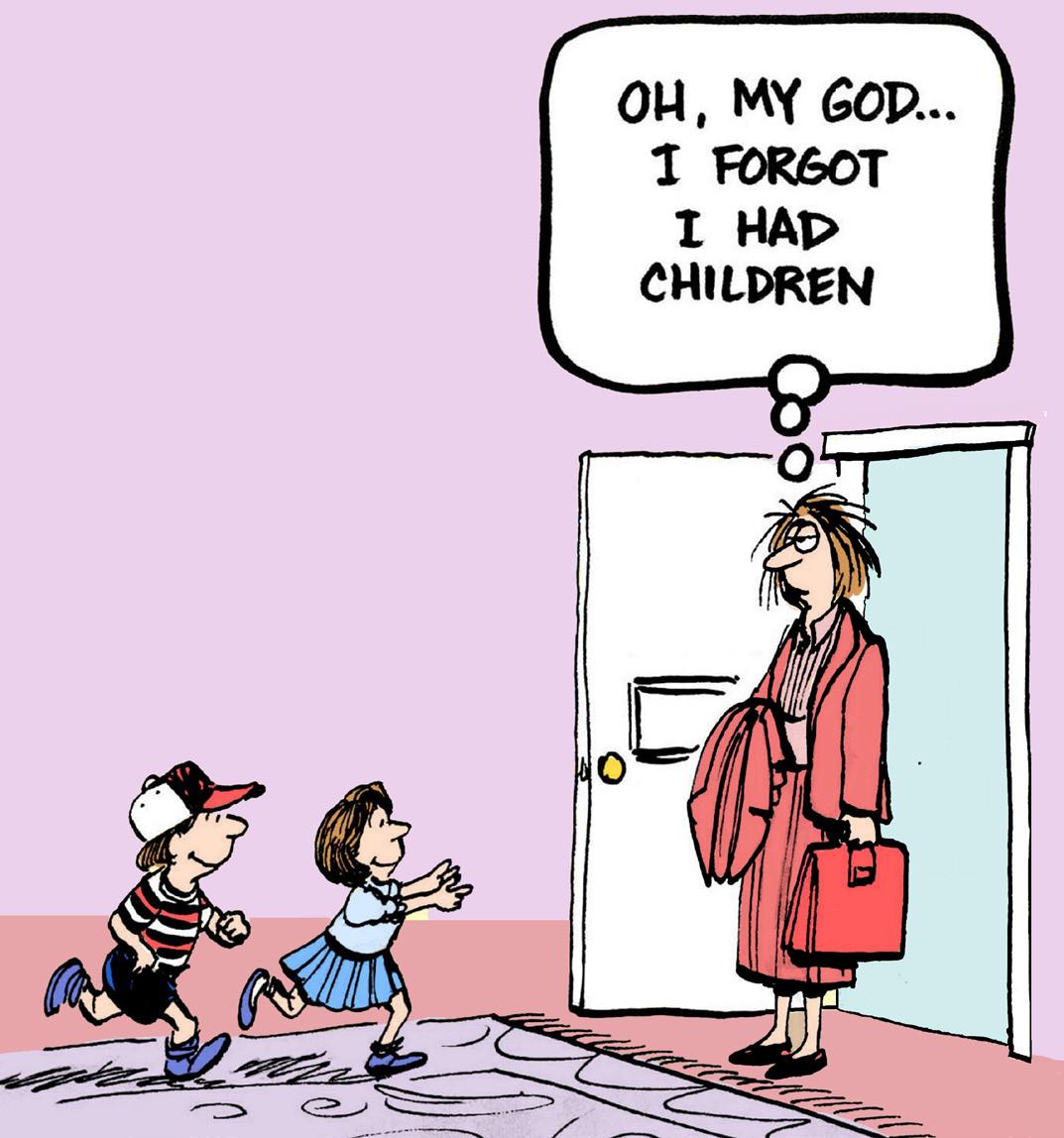
Think about ways to use the skills we used to achieve the former to help us in the latter.
Finally, we need to be innovative with our approach to finding balance. One way to be more innovative is to seek input from others on what we might do. For example, gather together a group of friends, co-workers, or family and describe a problem you are facing. Ask for ideas for possible solutions and record what they tell you. Select what might be best and try to make it happen. Stay in touch with those gave you input regularly, and then after a month or so, review your progress with them. Honestly take stock and if your approach did not work, tweak it or if you need to, try another idea altogether.
I know—it sounds like a lot of work, but leading the life we want is a craft and requires work to develop. As we did with music, dance, or athletics, we get better by practicing. So, if we go to work on making our lives more balanced while at the same time, having some fun, we can change our lives, and rather than trying to just find balance, we can perhaps lead a life where all of its facets are made into one great whole. It is worth a try. n
RUSS LEAVITT, CFPS, S.E.T. TELEGIAN HOLDINGS EXECUTIVE CHAIR AFSA COMMITTEE MEMBER & SPEAKER


In today’s competitive business environment, success in the fire sprinkler industry isn’t just about the projects you complete or the products you provide—it’s also about the relationships you cultivate. Networking has always been a vital part of professional growth, but within the American Fire Sprinkler Association (AFSA), networking takes on a new level of meaning. It becomes more than a handshake; it becomes a pathway to opportunity, knowledge, and long-term industry success.
AFSA isn’t just an association—it’s a community where contractors, manufacturers, suppliers, designers, and apprentices come together to support one another. When members attend AFSA events, engage in chapter meetings, or serve on committees, they’re connecting with others who understand the challenges and opportunities unique to the fire sprinkler industry.
These connections aren’t surface-level. They’re built on a shared mission to strengthen the trade, protect lives and property, and ensure the continued growth of fire protection across the country. That’s why AFSA networking often turns into partnerships that last a lifetime.
Networking within AFSA has proven to be a launchpad for countless opportunities:
• Business Growth: Contractors and suppliers often meet at chapter events, trade shows, or the annual convention and walk away with new clients, vendors, or project partnerships.
• Career Advancement: Apprentices and young professionals who attend AFSA’s competitions or NextGen events gain mentors, industry exposure, and even career-changing introductions.
• Knowledge Sharing: Whether it’s a hallway conversation, a roundtable at a chapter meeting, or a virtual technical call, members exchange best practices and innovative solutions that move the industry forward.
Often, a single conversation at an AFSA event leads to new projects, new friendships, and new ways of approaching industry challenges. One of the best opportunities to put the power of networking into action is the upcoming AFSA44: Convention, Exhibition, and Apprentice Competition in Washington, D.C., October 15-18, 2025.
This four-day event brings together contractors, suppliers, manufacturers, designers, and apprentices from across the country. Beyond the educational seminars and hands-on training sessions, AFSA44 is designed to spark connections. The bustling exhibit hall, networking receptions, and the thrilling National Apprentice Competition provide countless touchpoints for meaningful conversations.
Whether you’re seeking new business partners, exploring innovative products, or simply wanting to exchange ideas with peers who understand your challenges, AFSA44 is where it happens. Many long-term collaborations and friendships in our industry can trace their roots back to a convention introduction or a conversation at a networking event.
Networking doesn’t just benefit the individual—it makes the entire fire sprinkler industry stronger. When manufacturers collaborate with contractors through AFSA committees, product improvements and new training resources emerge. When chapters join forces on a regional summit, members gain access to broader perspectives and stronger advocacy.
These connections create ripple effects: better practices, stronger safety standards, and a more unified voice for fire protection nationwide. AFSA networking ensures that no member has to face industry challenges alone.
While nothing can replace face-to-face interaction, AFSA also embraces digital tools to keep members connected yearround. From the SprinklerForum online community to webinars, members can share ideas and resources no matter where they are. These platforms ensure that networking doesn’t end when an event does—it continues to grow and strengthen daily.
To harness the full power of AFSA’s network, members can:
1. Get Involved Locally: Join your chapter, attend meetings, and volunteer at events.
2. Say Yes to Opportunities: Whether it’s serving on a committee, competing in the apprentice competition, or attending AFSA44, engagement leads to connection.
3. Share Generously: Offer your expertise, connect others, and contribute ideas—networking thrives on collaboration.
4. Follow Up: A quick email or phone call after an event keeps the momentum going and builds stronger relationships.
AFSA believes in the power of people helping people. Through networking, members gain more than contacts—they gain a support system, a resource hub, and a community that is deeply invested in their success.
In the fire sprinkler industry, where protecting lives and property is the ultimate goal, these connections make us stronger, smarter, and more united. With AFSA, networking isn’t just an activity—it’s a foundation for growth and the future of our industry.
And this October, at AFSA44 in Washington, D.C., members will once again have the chance to experience firsthand just how powerful networking can be. n
MEDA MERRITT, CAE AFSA VICE PRESIDENT OF MEMBERSHIP & CHAPTER DEVELOPMENT


If you’re an ITM technician of any experience level, facility manager, AHJ, Designer, Fire Protection Engineer, sprinkler fitter, or a training manager whose responsibilities include inspection, testing, and maintenance of water-based fire protection systems, then these courses are for you.
25 Essentials Workshop
Immersive training course, including hands-on demonstrations & interactive exercises designed for all experience levels of technicians, inspectors, AHJs and facilities maintenance personnel.
Take your skills to the next level with a focus on NFPA 25 ITM procedures for water supplies, standpipes, preaction and deluge systems, and specialized sprinkler systems.
25 Fire Pump Workshop
Develop ITM skills for fire pumps through hands-on practice, including no-flow and fullflow tests, and gain a deeper understanding of fire pump systems.
OCTOBER 2025
Sept. 29 - 3
• NFPA 25 Advanced Systems Workshop
AFSA Headquarters, Richardson, TX firesprinkler.org/programs/nfpa-25-advancedsystems-workshop
1
• Variable Speed Pump Applications Webinar firesprinkler.org/calendarevent/variable-speed-pumpapplications
2 - 3
• NFPA 25 Fire Pump ITM Workshop
AFSA Headquarters, Richardson, TX firesprinkler.org/programs/nfpa-25-fire-pump-workshop
Littler Law Firm will provide a “hotline” labor relations advice service to AFSA members confronted with union organizing or other labor issues. There will be no charge to AFSA members for the initial consultation, and no obligation to use Littler for follow-up work. Littler is the country’s largest labormanagement relations legal team and has defended more union petitions and elections than any other law firm over the last three years. AFSA is glad to provide this service to all AFSA members confronted with union issues, often on short notice.
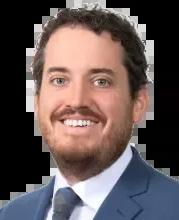
7
• Level 3 Virtual Instruction Program (VIP) Begins firesprinkler.org/sprinkler-fitter-apprentice-training-vip 27
• Introduction to the Fire Sprinkler Industry
AFSA Headquarters, Richardson, TX firesprinkler.org/programs/introduction-to-the-firesprinkler-industry
28 – Nov. 21
• Beginning Design School
AFSA Headquarters, Richardson, TX firesprinkler.org/programs/beginning-fire-sprinklersystem-planning-school
NOVEMBER 2025
12
• Design Area Adjustments in NFPA 13 Webinar firesprinkler.org/calendarevent/design-area-adjustmentsin-nfpa-13
18 - 19
• NFPA 25 Essentials Workshop
AFSA Headquarters, Richardson, TX firesprinkler.org/programs/nfpa-25-essentials-workshop 20 - 21
• NFPA 25 Fire Pump ITM Workshop
AFSA Headquarters, Richardson, TX firesprinkler.org/programs/nfpa-25-fire-pump-workshop
DECEMBER 2025
3
• Neglected Chapters in NFPA 25 Webinar firesprinkler.org/calendarevent/neglected-chapters-innfpa-25/
Seminars subject to change. Call (214) 349-5965 to confirm locations and times. For more events and details, visit firesprinkler.org and click on “Events” and “Events List.”
Brendan Fitzgerald will be the primary point of contact for AFSA members seeking advice on labor relations. He is a shareholder at Littler and regularly advises employers on a broad range of labor and employment law matters. Fitzgerald’s primary focus is helping employers navigate union organizing issues. He has significant experience in representing employers in the sprinkler fitting industry. Contact Fitzgerald at (216) 410-7456 or bfitzgerald@littler.com.
AFSA’s fire sprinkler playground has recently completed some additional work regarding tying its training fire alarm control panel to the multiple fire sprinkler risers in the valve lab. The wiring of the supervisory and alarm devices is approximately 80% complete, and then similar work will start in the fire pump room. Steve Schwartz with Consolidated Fire Protection has been working diligently to tie the systems together. Carlos Nuñez, the FireSprinklerGuy, also came in for a weekend to assist. Additional bracing from ASC Engineered Solutions has been installed on the mains to help limit the movement of the piping as the water supply pump turns on. AFSA is very appreciative of the support of its membership, as the lab would not be where it is without it.
The facility requests are rolling in, with many users requesting regular training throughout the year. The 2026 calendar is filling up quickly. If you are interested in renting the facility or providing customized training to support your organization’s educational and training needs at the sprinkler playground, complete the request form at firesprinkler.org/facility-requestform. Get your request in as soon as possible; the calendar is already filling up well into 2026!
Now open—AFSA’s High School Scholarship Essay Contest! Through December 31, 2025, eligible high school seniors can enter to win one of five $1,000 scholarships. Created by AFSA’s Public Education & Awareness Committee to raise awareness about fire sprinklers, the fire protection industry, and its careers, the contest is open to students who want to pursue a college degree or trade school education. Five winners are randomly selected to receive a one-time $1,000 scholarship payable to their respective college, university, or trade school. For more details and to enter, visit afsascholarship.org/high-school-scholarships. n
1 Day Course

Whether you’re new to the industry or looking to refresh your knowledge, this introductory class is the perfect starting point to understand how fire sprinkler systems work and why they’re critical for life safety.
No Dumb Questions! This class is for those who want to learn the basics of fire sprinkler systems and gain a better perspective of their major contribution to fire and life safety. In this course, we’ll guide you through the essential concepts of fire sprinkler systems. With expert insights, and hands-on exercises, you’ll leave with a robust understanding of how fire sprinkler systems play a critical role in life safety and property protection.
Fire safety is not just a regulatory requirement — it’s a responsibility. Are you ready to dive in and learn how to help save lives and protect valuable assets? Start your journey today to becoming a fire sprinkler expert!
October 27, 2025
8am-4:30pm
Richardson, TX
• New staff
• Administrative staff in fire protection
• Sales personnel
• Estimators
• Facility managers
• Helpers, Pre-apprentices, Apprentices
• Students
• Career changers
• Anyone who wants to learn about the fire sprinkler industry
• History and purpose of fire sprinkler systems
• Overview of system types (wet, dry, preaction, deluge)
• Key components and how they function
• Introduction to industry codes & standards
• Installation basics and maintenance principles
• Real-world case studies and system demos
ALABAMA
Lee Seewald – Pres.
202-252-5101
Greg Willis – Exec. Dir. 334-567-4257
ARIZONA
Jason Williams – Chair
480-421-8411
Denniece Cooper - Exec. Dir.
DALLASFORT WORTH
Eric Davis – Chair 903-771-6811
Merle Hittle – Vice Chair 214-282-0350
FLORIDA
Bob DiModica - Chair 239-514-7155
Skyler Bilbo – Chair 217-342-2242
LOUISIANA
Randy Laguna – Chair 504-464-6236 ext 224
Ellen Ballard – Exec. Dir. 318-688-8800
NEW JERSEY
Thomas Bowlby, Jr. – Chair 908-226-5313
Victor Lugo – Exec. Dir. 201-635-0400
NEW MEXICO
Paul Chavez – Chair 505-898-9197
Renee Nix - Exec. Dir.
SACRAMENTO VALLEY
Holly Gray Salmon – Chair 916-296-9913
Paulene Norwood – Exec. Dir. 916-296-0635
SAN DIEGO
Mark Scott – Chair 619-778-2377
SOUTHERN CALIFORNIA
Vahe Zohrabian – Chair 818-822-1797
TENNESSEE
Casey Milhorn – Chair 615-349-5278
David Pulliam– Exec. Dir. 901-484-0605

10 9 8 7 6 5 4 3 2 1
New members as of September 3, 2025
Boreal Fire Protection Inc., St. Albert, AB, Canada
Elite Systems Inc, Sapulpa, OK
Fuller Fire & Safety Equipment Inc., Columbus, GA
NexGen Fire Protection, Coopersburg, PA
Next Level Fire Protection, Denham Springs, LA
Response Fire Protection, LLC, Round Rock, TX
Williams Fire Protection, Inc., Oakdale, CA
Clara AI, Clinton, MD
Gallagher, Rolling Meadows, IL
LAW Technical Services, LLC, Saco, ME
Kelton Cooper, Woodruff, SC
Kyle Giubbini, Houston, TX
Connie McCurdy, Orlando, FL
Lionel Scott, Saint Petersburg, FL
Gary Alcorn, Garden City, KS
Bob Gobert, San Antonio, TX
Alvaro Habet, Whittier, CA
Kathleen Haliburton, San Diego, CA
Ronald Hernandez, Montclair, CA
Allen Hover, Walpole, MA
Ben Jamison, Moseley, VA
Tamer Luka, Anaheim, CA
Michael Mastrangelo, Westbury, NY
Jesse Merritt, High Point, NC
Tyrone Morgan, Billings, MT
Ever Morales, Phoenix, AZ
Lucas Neff, Phoenix, AZ
Ivana Ocampo, Long Beach, CA
Andrea Oprea, Charlotte, NC
Tom Salmons, Sandusky, OH
Josephine Sanchez, Santa Ana, CA
Kevin Seery, Bryan, TX
Eliza Serrano, Brooklyn, NY
Lucas Shelton, Texarkana, TX
Cody Shields, Texarkana, TX
Parker Showalter, Texarkana, TX
Walter Shutler, Bentonville, AR
Alan Sikes, Texarkana, TX
Nick Smith, Texarkana, TX
Brad Smith, Texarkana, TX
Terry Soderstrom, Loveland, CO
Kevin Such, Philadelphia, PA
Travis Sweet, San Marcos, TX

Starts Nov. 17
Hybrid (Virtual + In-Person)
• Start with 6 interactive webinars on NFPA 13 (2022)
• Conclude with 1 week of hands-on training: layout, shop drawings & hydraulic calculations
Gain practical, real-world knowledge to confidently prepare fire sprinkler system drawings—all without CAD or third-party software.
Total construction starts were up 16% in June to a seasonally adjusted annual rate of $1.33 trillion, according to Dodge Construction Network. Nonresidential building starts improved by 39%, residential starts fell 1%, and nonbuilding starts grew 2% over the month. On a year-to-date basis through June, total construction starts were up 1% from last year. Nonresidential starts were up 6%, residential starts were down 5% and nonbuilding starts were 1% higher over the same period.
For the 12 months ending June 2025, total construction starts were up 4% from the 12 months ending June 2024. Residential starts were down 1%, nonresidential starts were up 8%, and nonbuilding starts improved 3% over the same period.
“Construction starts saw solid growth in June, alongside particular strength in manufacturing and data center construction,” stated Sarah Martin, associate director of forecasting at Dodge Construction Network. “However risks remain elevated that construction starts will be more subdued in the back half of the year—alongside ongoing uncertainty over trade policy and the broader economy.” n
Total construction starts were down 10.2% in July to a seasonally adjusted annual rate of $1.19 trillion, according to Dodge Construction Network. Nonresidential building starts declined by 30.1%, residential starts fell 3.1%, and nonbuilding starts grew 20.4% over the month. On a year-to-date basis through July, total construction starts were up 1.6% from last year. Nonresidential starts were up 4.3%, residential starts were down 4.4% and nonbuilding starts were 5.3% higher over the same period.
For the 12 months ending July 2025, total construction starts were up 4.1% from the 12 months ending July 2024. Residential starts were down 0.7%, nonresidential starts were up 4.6%, and nonbuilding starts improved 9.3% over the same period.
“Construction starts reversed course in July, offsetting the strong gains made in June,” stated Eric Gaus, chief economist at Dodge Construction Network. “The latest data reinforced trends we have been watching since the beginning of the year: single-family building and manufacturing are struggling, but data centers continue to boom.” n

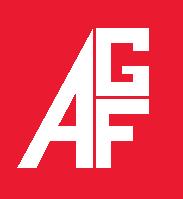



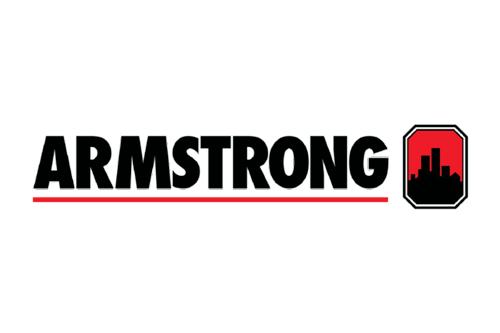




October is NCCER’s Careers in Construction month. Share the word in your state! By submitting a proclamation request in your state or territory, you can help earn an official proclamation from your governor declaring October as Careers in Construction Month. Anyone can submit a proclamation request. All you need to do is be a state resident and follow the request process outlined on your state governor’s website.
Once you submit a proclamation request, email info@nccer.org so they can note your state on its Careers in Construction Month proclamation map. Thanks for helping spread the word about the great opportunities in the construction industry! For more information about Careers in Construction month, visitbyf.org/ careers-in-construction-month.

NIBCO INC. has donated two custom-built boiler and water heater system training boards to support hands-on education at two leading trade education institutions: Chicago Pipefitters Training Center, Local 597, in Mokena, Ill., and ABC Construction Prep Academy in Fort Wayne, Ind.
Designed to promote collaboration across the plumbing and HVAC industry, these builds were originally part of the Community Over Competition Build showcased at AHR Expo 2025. The initiative was led by Impetus Media with NIBCO as the title sponsor. Visit NIBCO.com.
The Winsupply Family of Companies has welcomed its latest addition of a new local company with the opening of Winsupply Marble Falls. Led by President Jeremy Hansche, the location serves the plumbing, PVF, water treatment, septic, and rainwater harvesting industries. Winsupply Mar-


ble Falls opened this summer with five employees, including Hansche and Michael Oosse, operations manager and managing partner.
Winsupply also added a new local company, Winsupply Midlothian, Texas. Led by President James Fulton and seven employees, the locaiton will serve the residential and commercial HVAC industry. Visit Winsupplyinc.com.
NFPA Global Solutions™, an independently operated, wholly owned subsidiary of the National Fire Protection Association® (NFPA®), has announced its acquisition of PFS TECO, an independent third-party testing, inspection, and certification (TIC) company specializing in the built environment. This strategic acquisition is a key part of NFPA Global Solutions’ plan to provide compliance solutions, digital products, and advisory services to assist businesses and governments in managing risks, enhancing safety, and improving operational efficiency.
Based in Cottage Grove, Wis., PFS TECO expands NFPA Global Solutions’ portfolio of services in the areas of modular construction, heating appliances, and building products, helping clients demonstrate compliance with regulatory standards, mitigate risk, and gain acceptance in the marketplace. The acquisition also serves to broaden NFPA Global Solutions’ TIC expertise. Visit NFPAGlobalSolutions.com.
Armstrong Fluid Technology has launched two new enhancements to its Envelope platform—an integrated digital solution engineered for optimizing HVAC fluid flow using performance mapping, advanced data analytics and lifecycle services.
The new Wrench App, available in Google’s Play Store and Apple’s App Store, streamlines
the field servicing and management of Armstrong’s equipment. It offers mobile first tools for setup, configuration, commissioning, operation and asset location, and it eliminates manual data entry and multidevice needs.
Pairing with Armstrong Fluid Technology’s Envelope Core wrench enables real-time data to flow across the Envelope platform. Envelope Core tracks and analyzes equipment data to detect issues early and provide actionable insights. Enhancements to Armstrong’s Design Envelope Pumps Controller (DEPC) enable these tools to integrate with the Envelope Platform. Visit ArmstrongFluidTechnology.com.
The Society of Fire Protection Engineers (SFPE) invites professionals from across the globe to the SFPE Engineering Solutions Symposium: Addressing European Lithium-Ion Battery Fire Safety Challenges, taking place November 11–13, 2025, in Lisbon, Portugal.
This three-day, in-person event will convene an international panel of experts to explore the pressing fire safety issues posed by lithium-ion batteries across applications ranging from consumer electronics and e-bikes to electric vehicles (EVs) and large-scale battery energy storage systems (BESS). Visit SFPE.org.
Viking SupplyNet announces its expansion into the Pacific Northwest with a brand-new facility in Vancouver, Wash. The 68,000+ ft2 building expands Viking’s fabrication and distribution capabilities, strategically positioning the company to better serve customers across the region. Visit SupplyNet.com. n




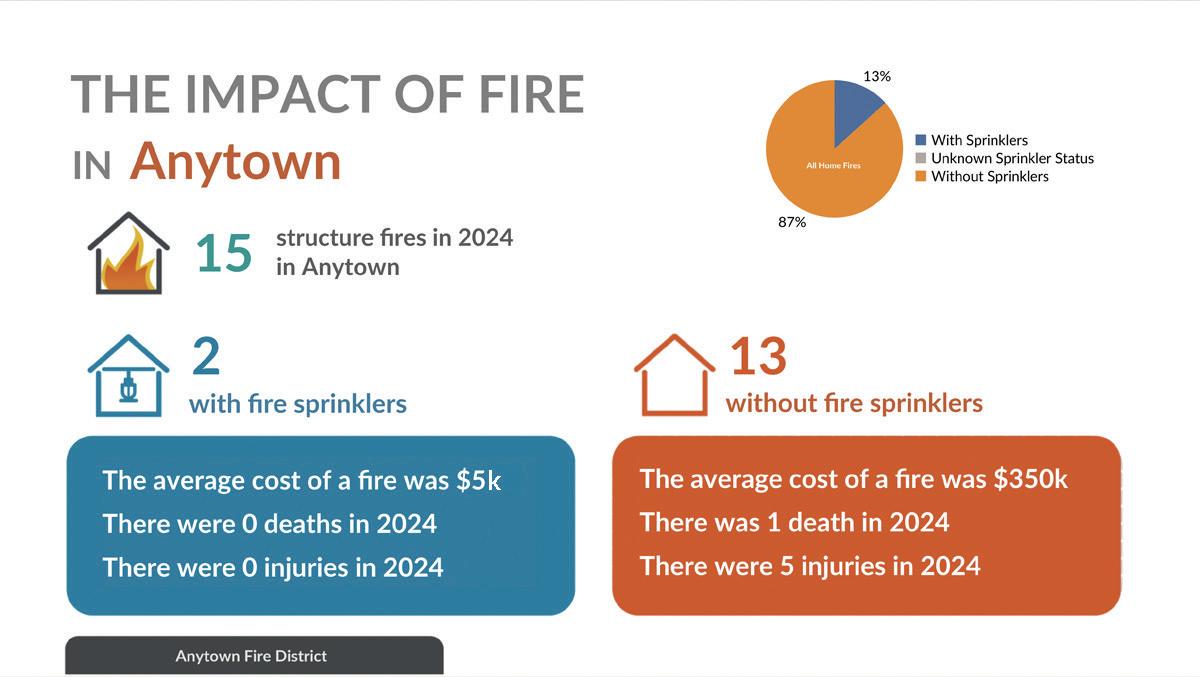
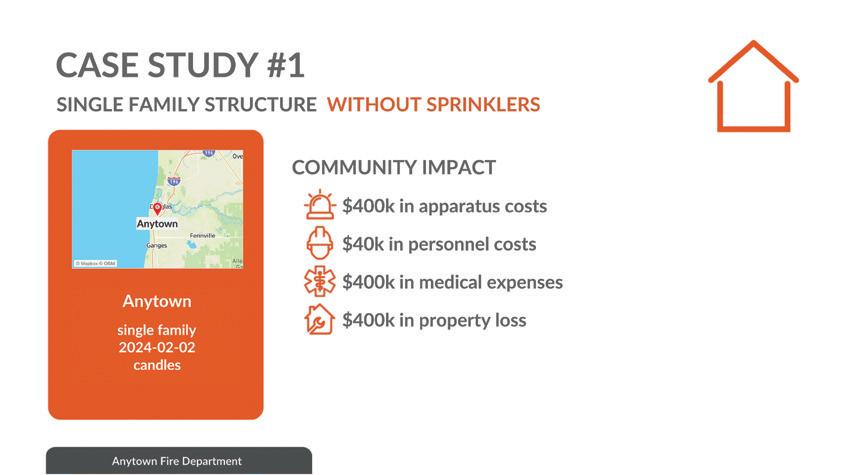

Members and staff of the American Fire Sprinkler Assocation (AFSA) were saddened to learn of the passing of industry-veteran Michael Layton Brown, who wrote AFSA’s The Leadership Ladder and Estimating, Bidding, Selling, and Contracting guides.

Donations in Brown’s memory can be made to Heroes First Foundation, an organization that rings hope and healing to veterans by helping them receive the service animals they need.
of SFPE and is bestowed to individuals who have amassed significant accomplishments and stature in fire protection engineering. The SFPE “5 Under 35” recipients represent the industry’s top rising leaders who give back to both the fire protection engineering profession and the community. SFPE is pleased to announce ten award recipients in 2025. All recipients can be viewed at sfpe. org/newsroom/july92025.
The awards will be presented by Amanda Kimball, PE, FSFPE, SFPE president, during the SFPE Annual Conference & Expo in Vancouver, BC, Canada, on Oct. 21-23, 2025; registration for the conference is available at sfpe.org/annual25. Nominations for the Society’s 2026 class of Fellows and award recipients will be solicited in early 2026.
tified Professional in Talent Development) from the Association of Talent Development (ATD). Visit NA.REHAU.com/MP.
The SFPE Foundation, a charitable organization focused on enhancing the scientific understanding of fire and its interaction with the social, natural, and built environments, is pleased to celebrate the 10 recipients of its 2025 awards, as follows:
• Glenn Forney, PhD, Computer Scientist, National Institute of Standards and Technology (United States)—presented the prestigious Arthur B. Guise Medal, endowed by R. Keith Guise.

NIBCO INC. has announced the promotion of Will Hummel to director, sales enablement. In this newly created role, Hummel will lead the development and implementation of a strategic sales enablement program designed to equip the sales team with the tools, training, and insights they need to succeed. He will collaborate with cross-functional teams to ensure alignment between sales strategy and broader business goals, with a focus on delivering greater value to customers and enhancing the overall customer experience.
Hummel joined NIBCO in March 2023 as commercial sales manager and brings more than 25 years of industry experience, including leadership roles such as director of marketing and director of wholesale sales. Hummel holds a bachelor’s degree in history and economics from the University of Virginia and an MBA from the University of Pittsburgh. Visit NIBCO.com.
The Society of Fire Protection Engineers (SFPE) announces its 2025 class of Fellows and award recipients. Fellow membership represents the highest professional honor

REHAU is pleased to announce the appointment of Tim Greer as the new academy training manager for its Building Solutions Division for the United States and Canada. In this pivotal role, Greer will lead training and educational initiatives focused on advancing the skilled application and maximizing the benefits of REHAU’s innovative PEXa piping system across residential, commercial, and municipal applications.
Greer brings two decades of industry experience in technical training instruction and leadership roles. He has held significant training and product development positions at leading companies such as Rinnai (tankless water heaters/boilers), GE (Oil & Gas), JCI (York HVAC), Rheem, and Grundfos. His extensive background, which began as a technician and evolved into management roles in training, commercial development, and product management, provides him with a comprehensive understanding of the mechanical and plumbing landscape.
Greer holds a BS in Organizational Leadership and an Associate’s degree in Electronics, complemented by a Project Management Certification from CompTIA and a CPTD (Cer-
• David Morrisset, PhD, The University of Queensland (Australia), and Jonathan Reep, PhD, Ian Ojwang, Rory M. Hadden, PhD, and Angus Law, PhD, CEng, The University of Edinburgh (Scotland, United Kingdom)—presented the Jack Bono Award for Engineering Communication, endowed by UL Research Institutes, in recognition of their article in Fire Technology journal titled: “Repeat Fire Tests of Upholstered Furniture: Variability and Experimental Observations,” which presents a series of trials conducted to investigate the repeatability of furniture-scale calorimetry experiments.
• Leo Willem Menzemer, PhD student, Lund University/DBI—The Danish Institute of Fire and Security Technology, Sweden & Denmark—presented the Dr. Guylène Proulx, OC Scholarship for his research to further our understanding of human behavior in fire.
• Mahdis Borhani, PhD student, University of Utah—presented a Student Scholar Award for her work on bridging disciplines and focusing on practical strategies for wildfire resilience that can benefit communities.
• Mohammad Javad Moradi, PhD candidate, Carleton University, Canada—presented a Student Scholar Award for his research focusing on the intersection of mechanical engineering and fire protection engineering.
• Dia Luan, PhD student, Central South University, China—presented the Frederick W. Mowrer Global Scholar Award, endowed
by Kathleen Almand, for her research on “Tunnel Fire Dynamics and Smoke Control Under Heavy Rainfall Induced Airflow.”
The awards will be presented by Sean Donohue, chair, SFPE Foundation Awards Committee, Peter Senez, chair, SFPE Foundation Board of Governors, and Maria B. Marks, vice chair, SFPE Foundation Board of Governors during the SFPE Annual Conference & Expo in Vancouver, BC, Canada. Registration for the conference is available at sfpe.org/annual25.
The National Fire Protection Association® (NFPA®) completed the election of its board of directors at its Annual Meeting on June 16, 2025, which included the naming of one new officer, one new director, the election of one new member, and the reelection of three members of the board.
Mariana Ruiz-Temple, Oregon state fire marshal, has been elected by NFPA members for her first three-year term on the NFPA board of directors. With a career spanning more than three decades, Ruiz-Temple is


recognized as a distinguished public safety leader with extensive expertise in fire service operations, emergency management, and strategic partnerships. She is responsible for overseeing statewide efforts to reduce the loss of life and property from fires, explosions, and hazardous materials incidents.
Michael Snyder has been elected by the NFPA board of directors to serve a one-year term on the NFPA board. He began his fire service career in Aquashicola, Pa., and later joined the department in Auburn, Mich., where he rose through the ranks to become fire marshal in 2011.
NFPA members also reelected three board members, each to serve a three-year term on the NFPA board. These individuals bring a wealth of expertise and a shared commitment to NFPA’s mission: H. Butch Browning, executive director, National Association of State Fire Marshals, who has served on the board since 2022, was elected to his second three-year term; Adrián Gallardo Landeros, generaldDirector, Servicios de Información Estratégica (SIE Consultories), who has served on the board since 2022, was
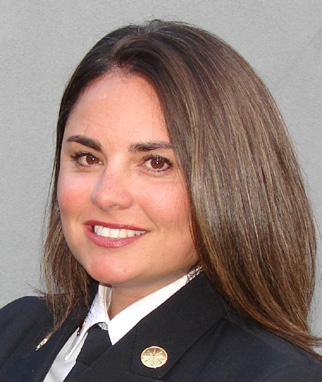

elected to his second three-year term; Mark Ghilarducci, chief executive office of emergent global solutions, who has served on the board since 2022, was elected to his second three-year term.
Dr. Reginald Freeman has been elected by the NFPA board of directors to serve a one-year term as treasurer. Freeman, who has been serving on the NFPA board since 2018, most recently held the position of assistant treasurer and brings extensive experience in fire service operations and emergency response to his new role.
All other officers and directors will continue with their current terms. Visit NFPA.org. n






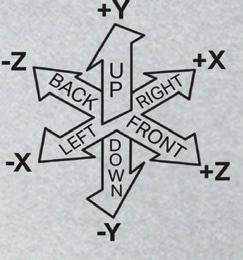
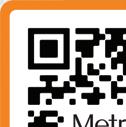







Armstrong Fluid Technology has introduced five new models of S&H circulators (H-32, H-41, S-25, S-35 and S-45/S46). These new circulators include a 1/3 hp ECM motor that saves 20% on energy. All S&H circulators are available in a permanently lubricated, maintenance-free design.
Key features of the new S&H circulators include ECM motors deliver efficiency savings of up to 20%; maintenance-free design means no oiling is required; Permanently-lubricated ball bearings; EPDM mechanical seal withstands high temperatures and provides longer seal life; modular design supports a wide range of motor options; easy to repair and rebuild. Visit ArmstrongFluidTechnology.com.
Dyne Fire Protection Labs, an NFPA Global Solutions TM company, announces their new DropmasterTM DM25 a stainless steel model. The previous model DM12 was constructed of steel. Dyne’s Dropmaster product eliminates residual water and odor in the sprinkler systems, allowing fire protection contractors to make inspections, repairs, and change outs much quicker with no mess. Dyne made the decision to switch to stainless steel to improve durability and longevity. The Dropmaster has a track record of lasting years if well-maintained and used properly, but now it will last even longer.
The Hitch Mounted Carrier is also improved with a black powder coating and comes with a cover to protect the unit during storage and transportation. This carrier designed for use exclusively with the Dropmaster will transport the unit to and from job sites without taking up space in your service vehicle can be purchased separately. Visit dropmaster.dyneusa.com.
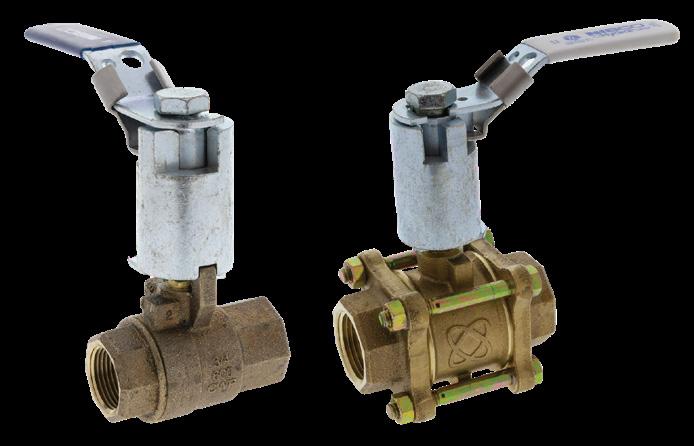
NIBCO INC. introduces extended metal locking levers for its 585 and 595 Series of Ball Valves, now available in sizes 1 / 4 -in. to 2-in. The innovative handle design features an extended neck and durable steel construction, making it ideal for installations that involve soldering without the need for handle disassembly to protect it from heat exposure. The extended neck allows for easy quarter-turn valve operation and accommodates up to 2 in. of pipe insulation. Pre-formed holes in the lever allow for the simple installation of a 1 / 4 -in. padlock or 1 / 8 -in. cable lock, providing a secure, tamper-resistant solution. For more details, visit NIBCO.com.
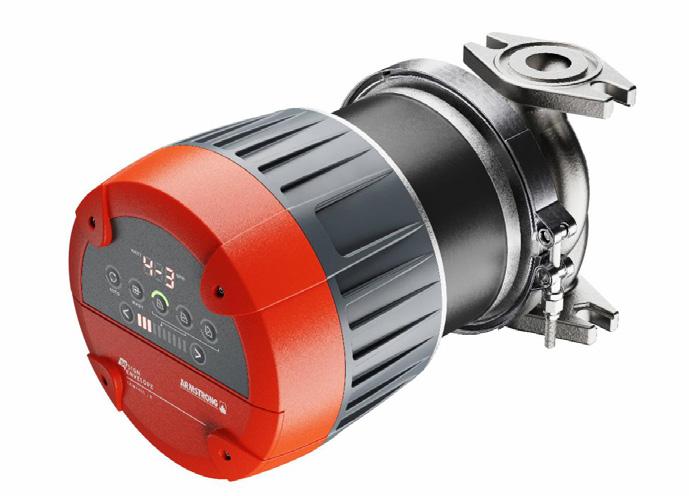
Armstrong Fluid Technology has introduced two new sizes, 40-85 and 60-50, of Design Envelope Compass R circulators. The Compass R is an energy-efficient variable speed dry-rotor circulator. Designed to replace existing fixed-speed circulators, Compass R can be considered a universal energy upgrade for circulators in its capacity range and installation profile.
Customers can purchase Compass R circulators to serve applications requiring up to 60 ft of head. For more information, visit ArmstrongFluidTechnology.com.
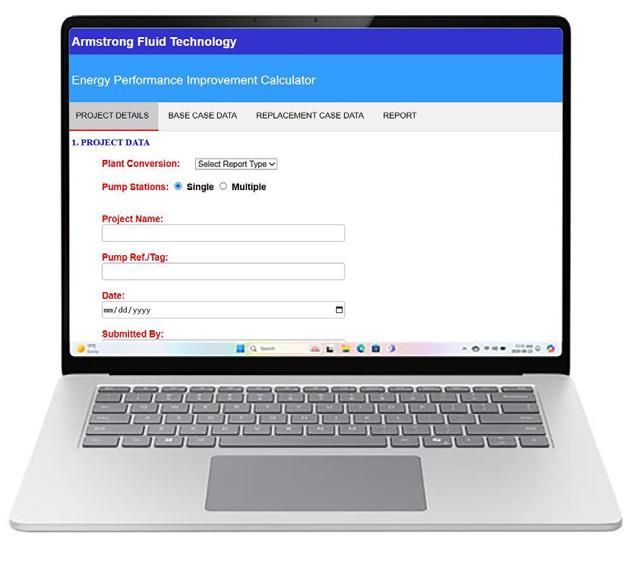
Armstrong Fluid Technology introduces a new cloud-based tool named EPIC (Energy Performance Improvement Calculator) that calculates energy savings and ROI for upgrading older pumps with newer, more efficient smartready models. Using the information and values from the existing pump installation, EPIC compares the asset data to the operational features of new Design Envelope pumps and generates a detailed report of savings and ROI. Visit ArmstrongFluidTechnology.com. n


